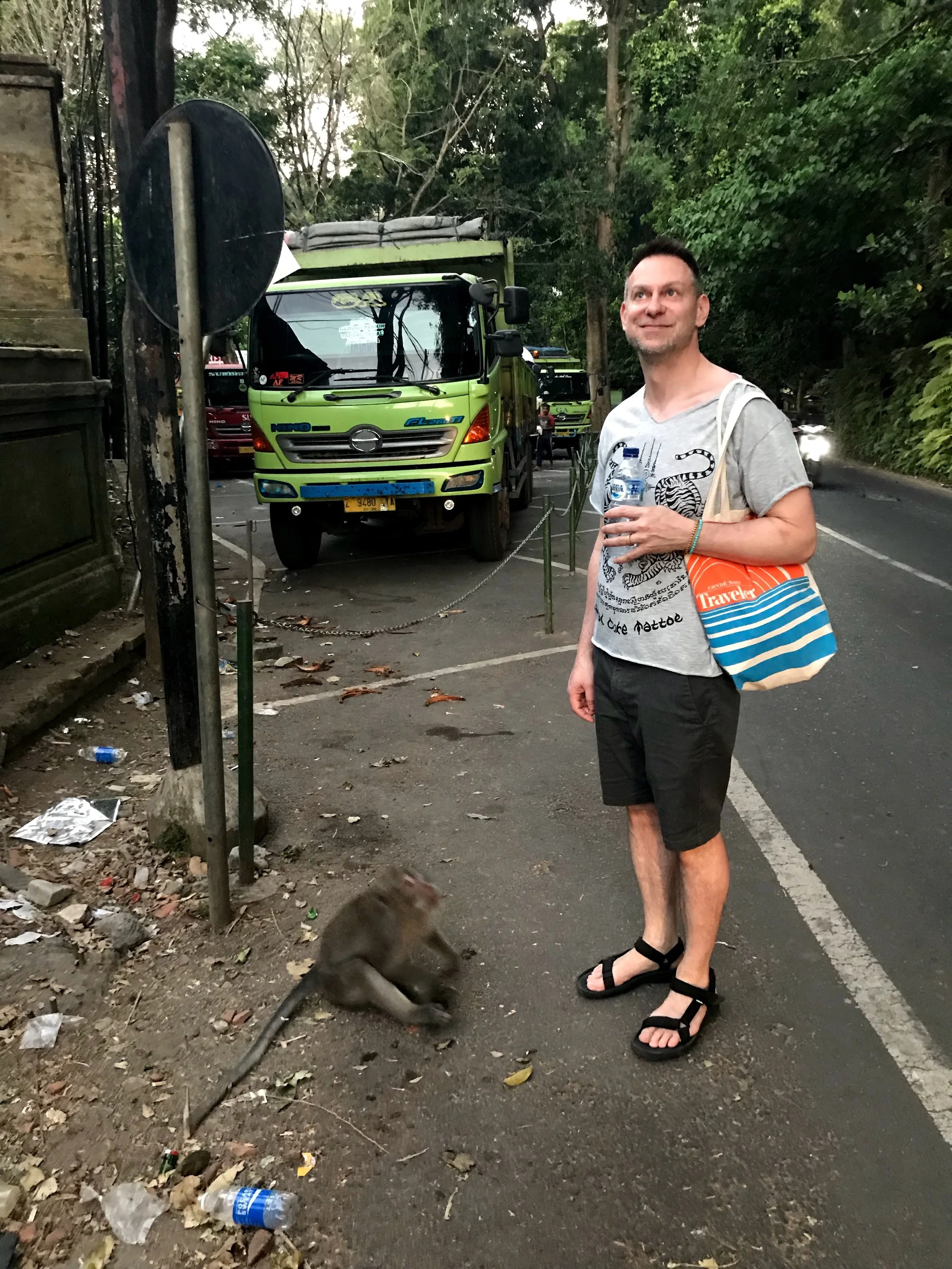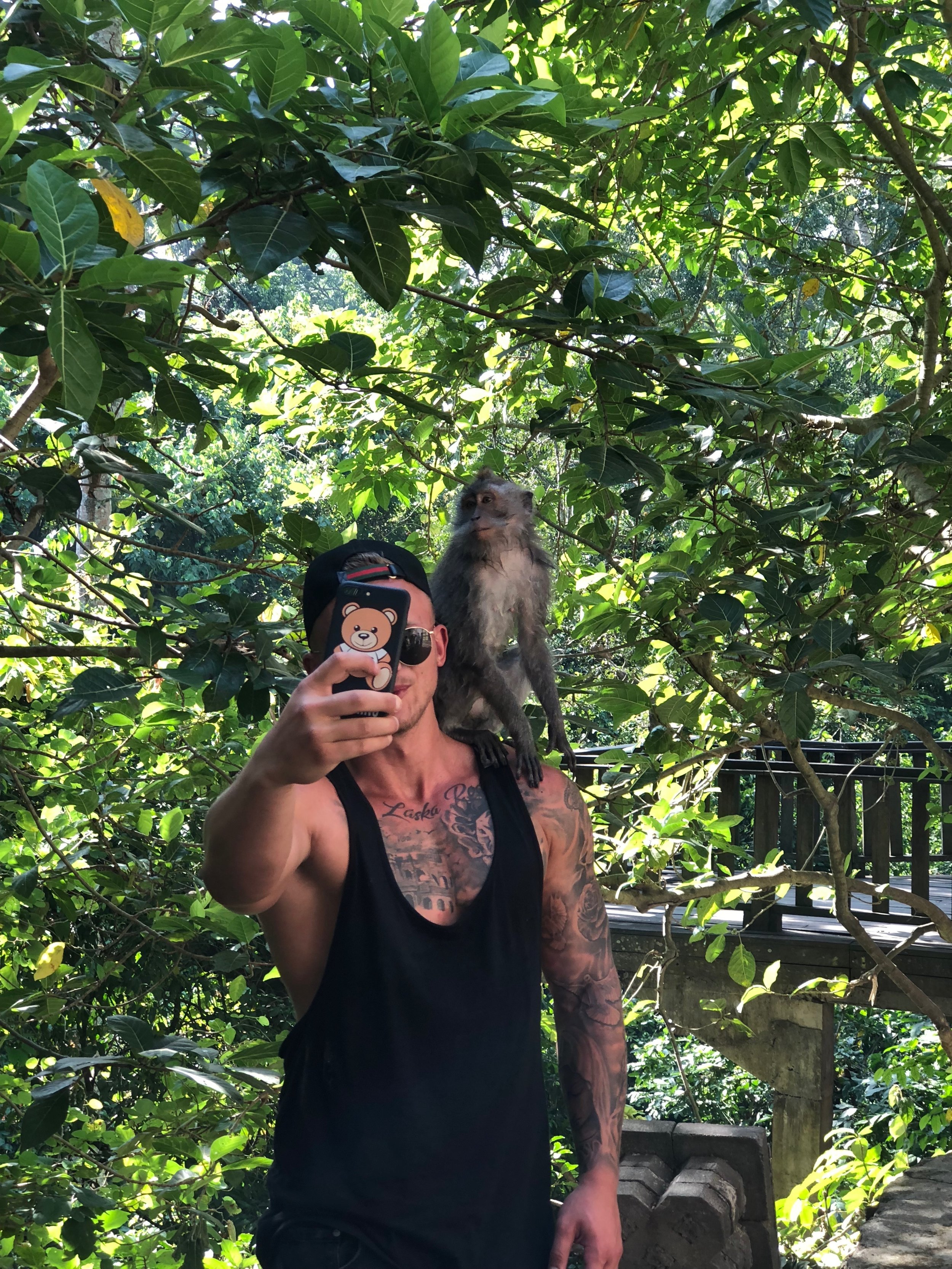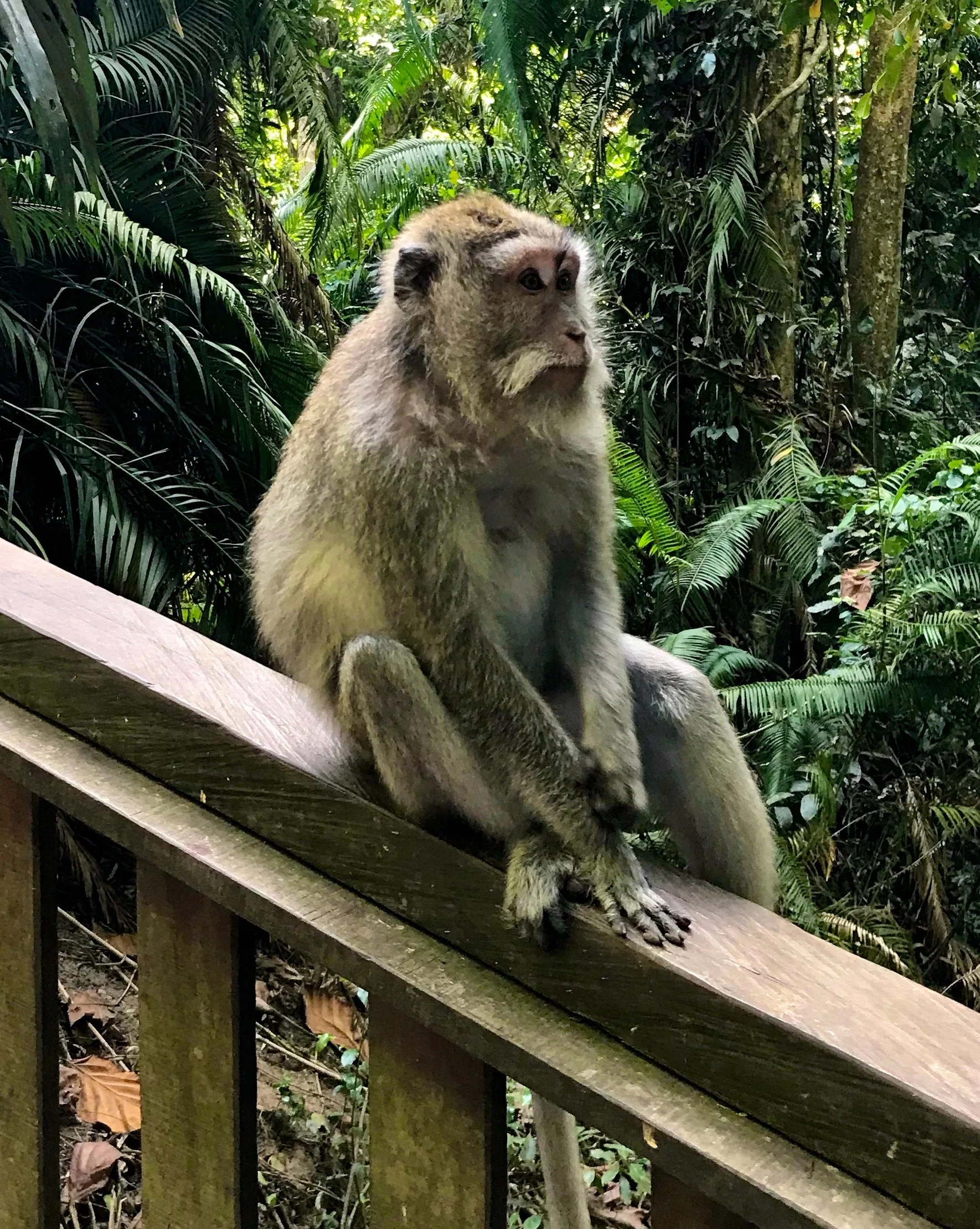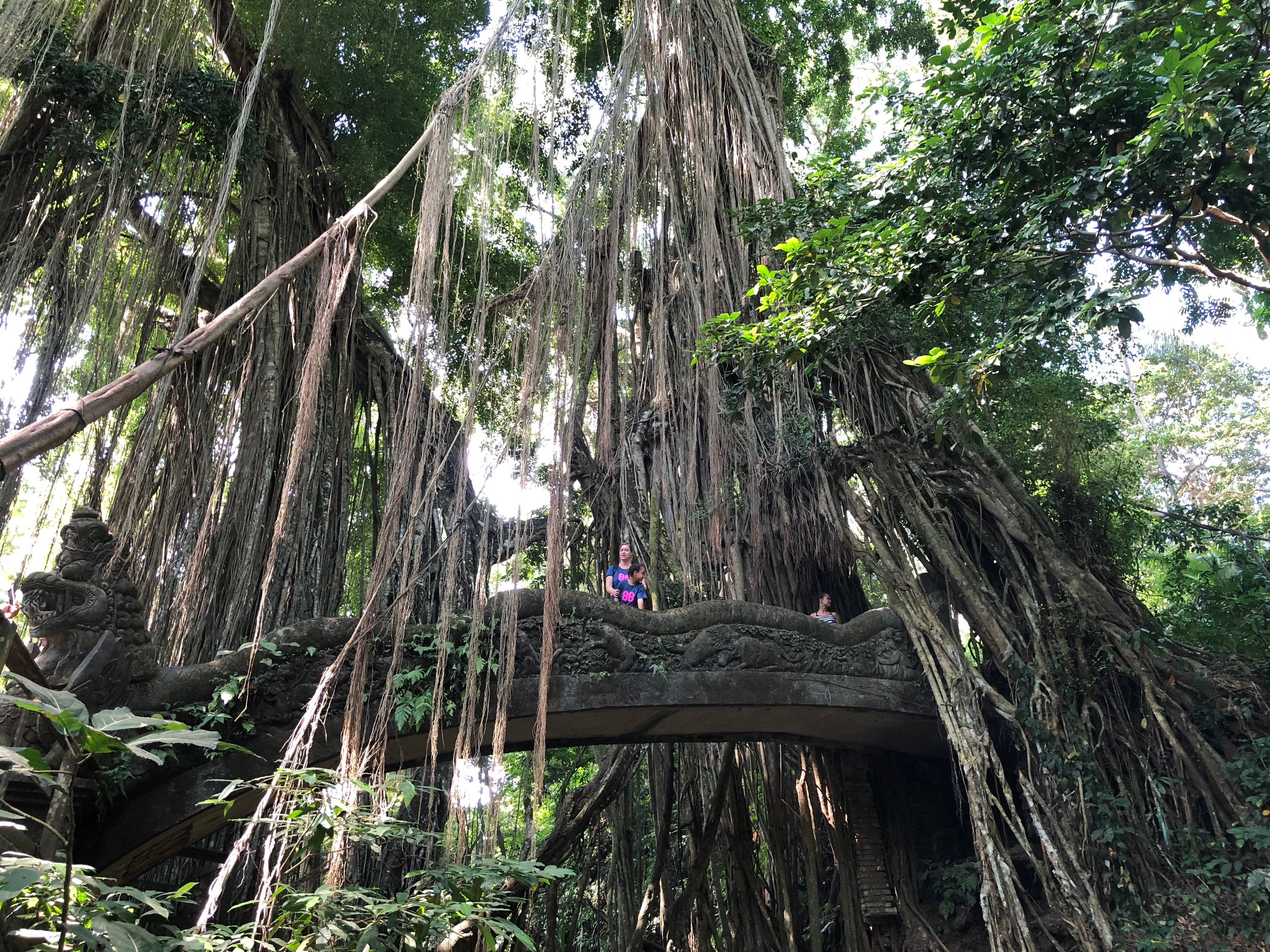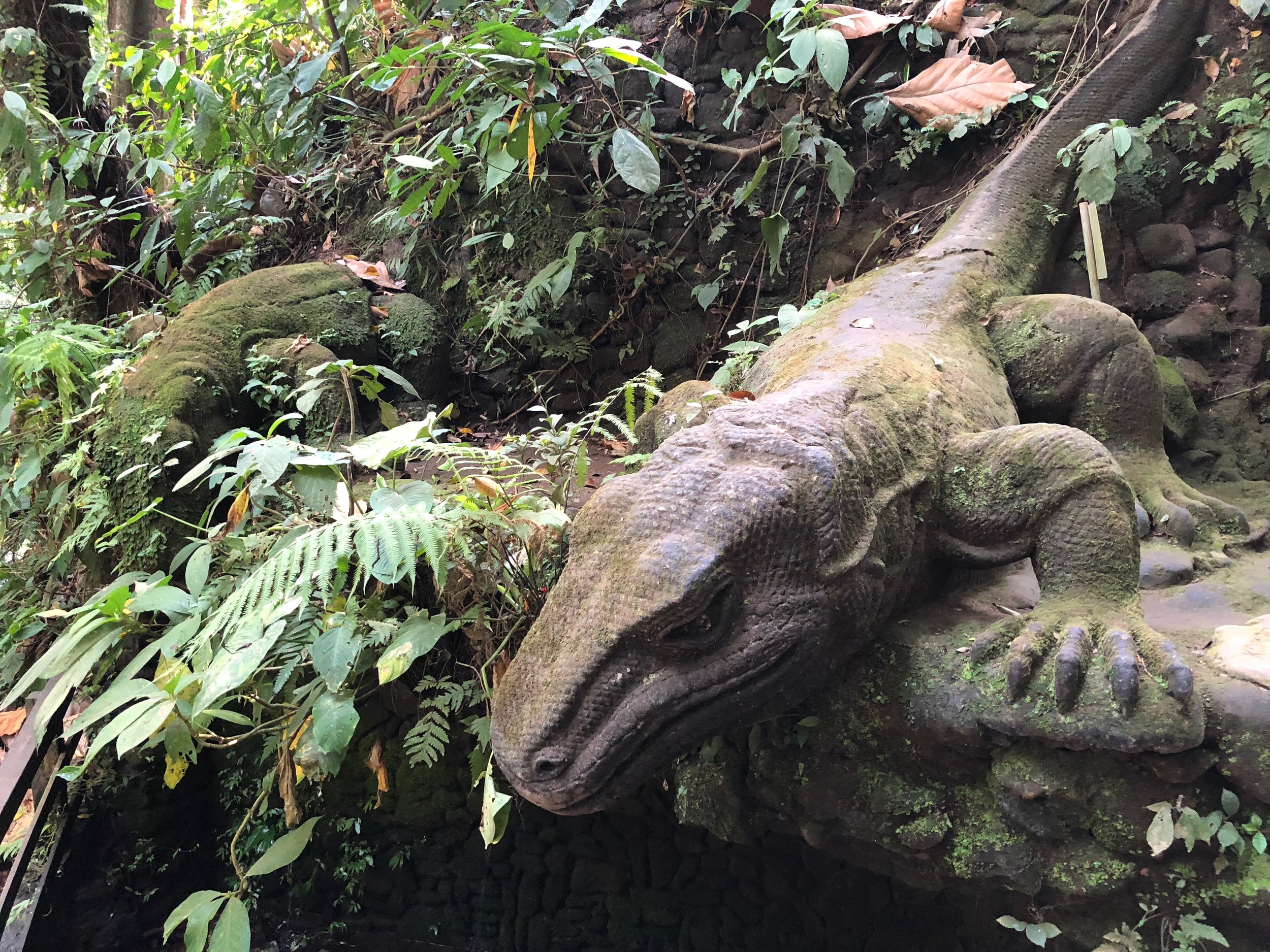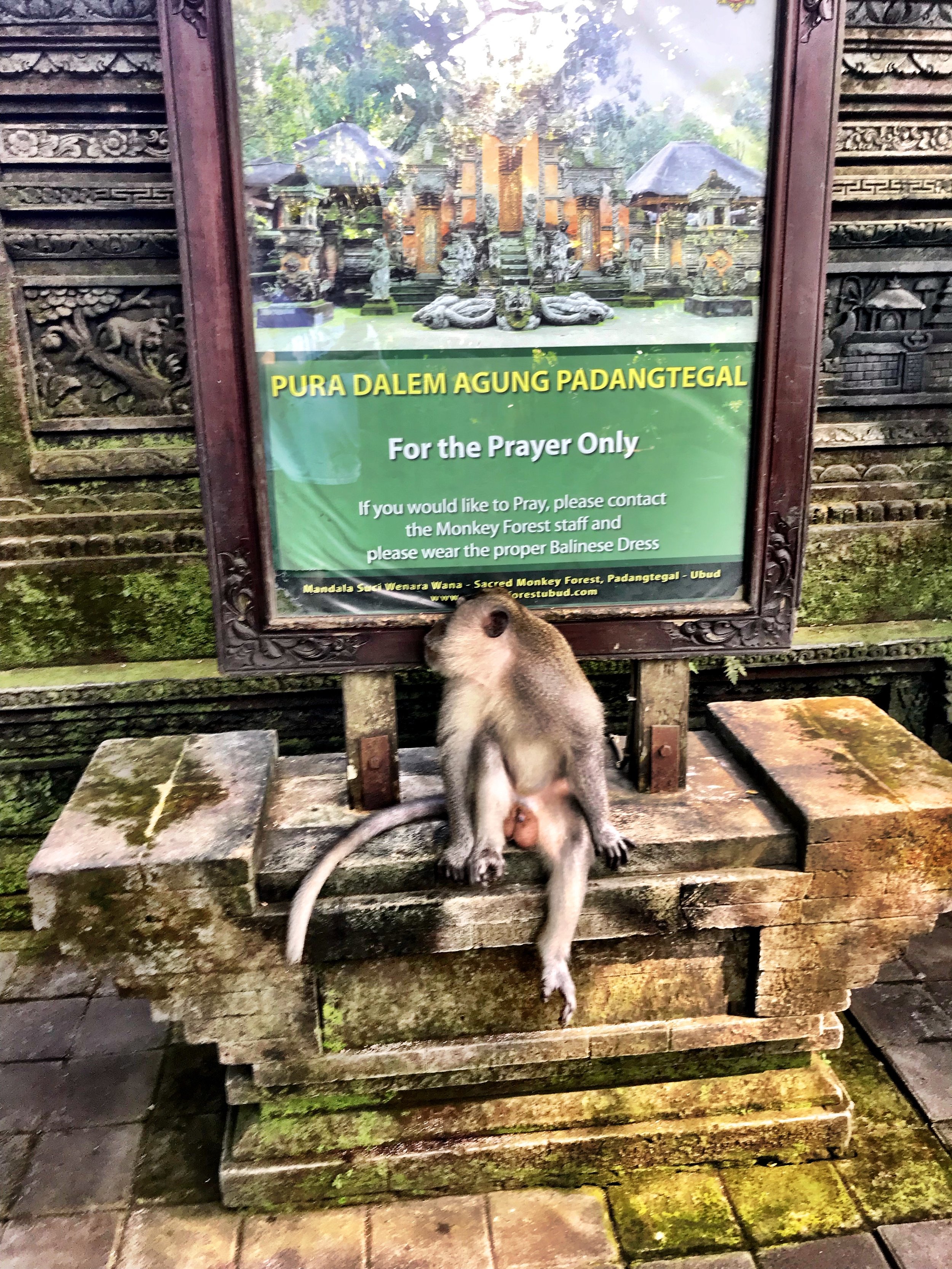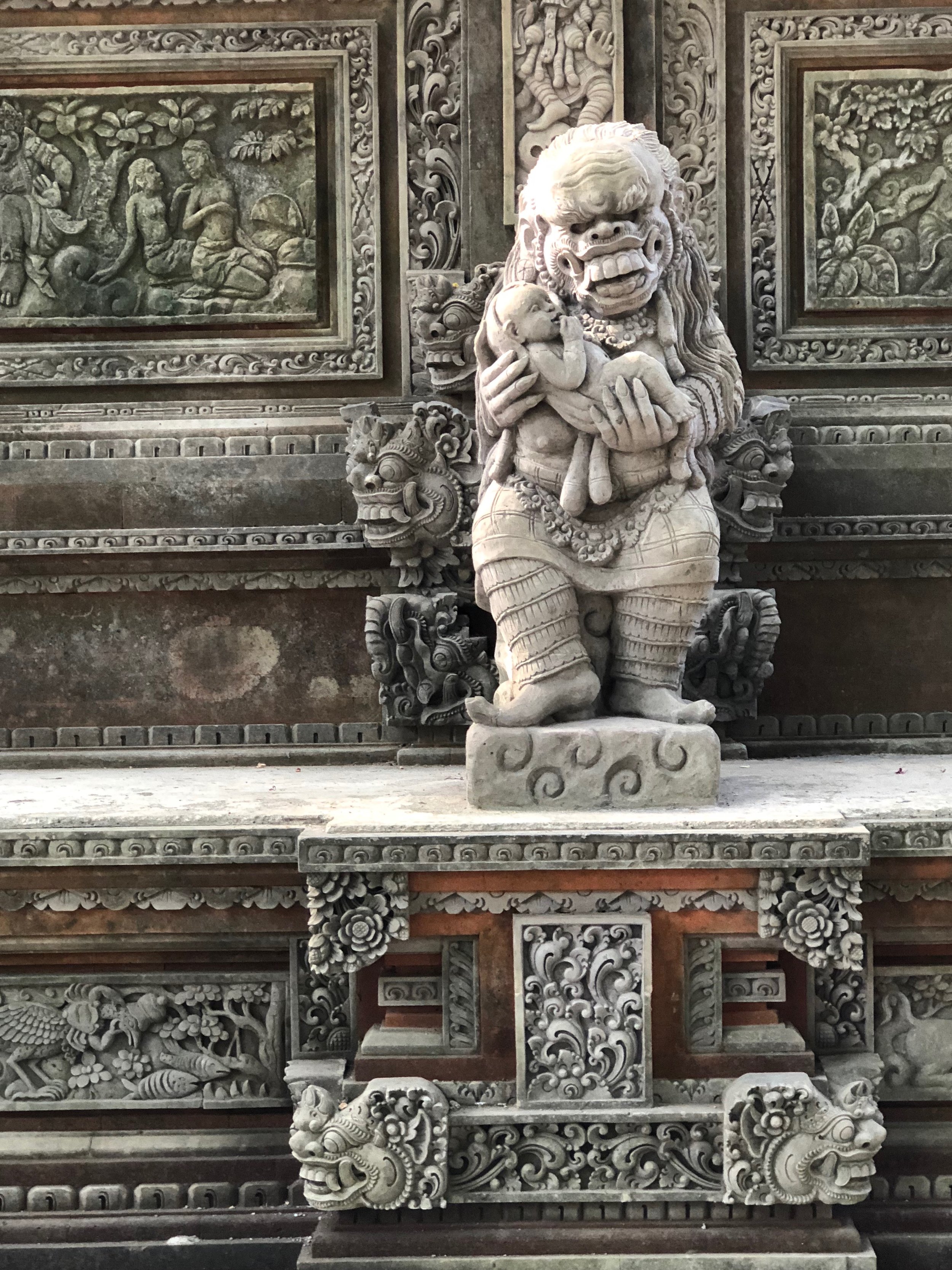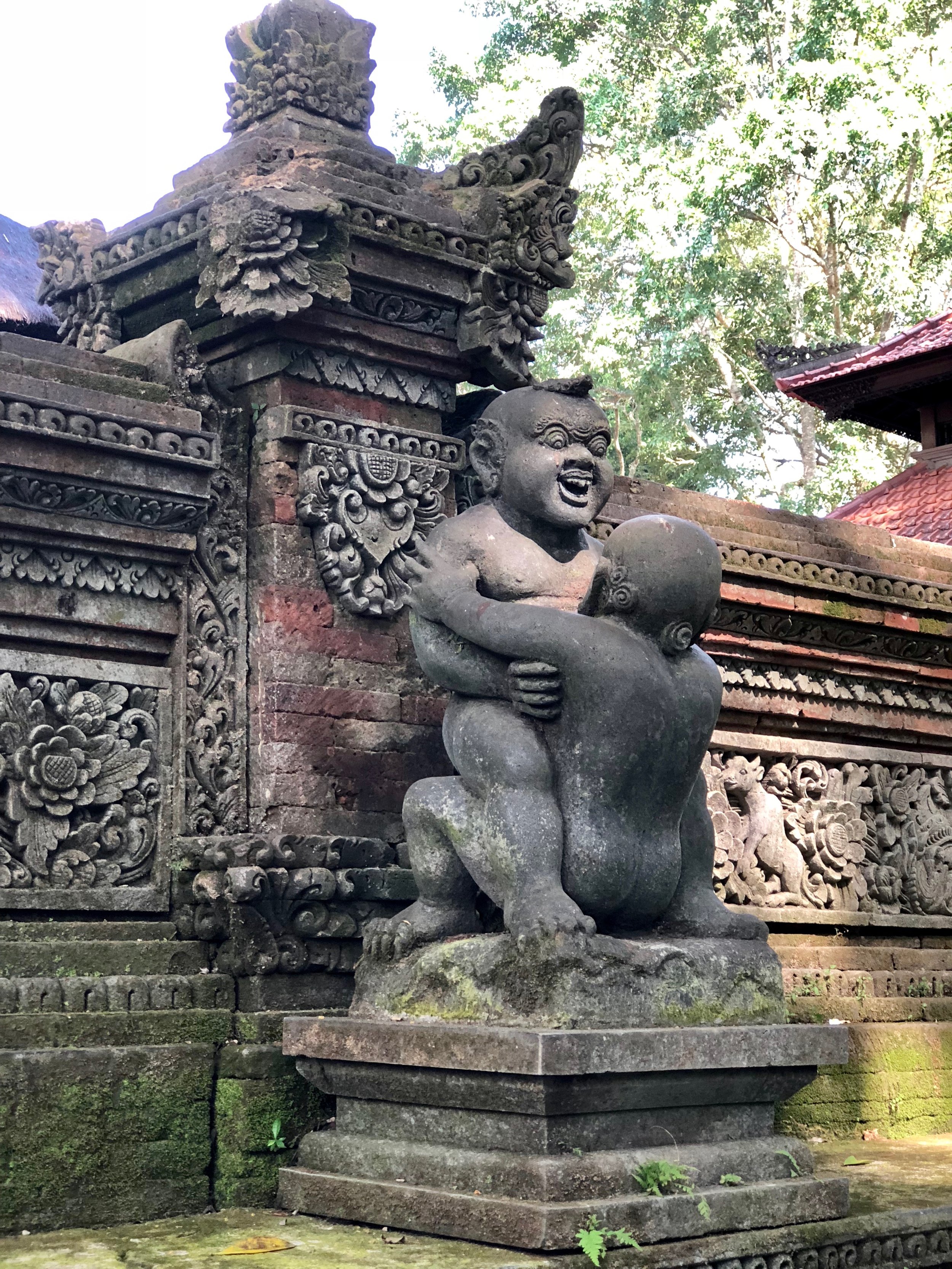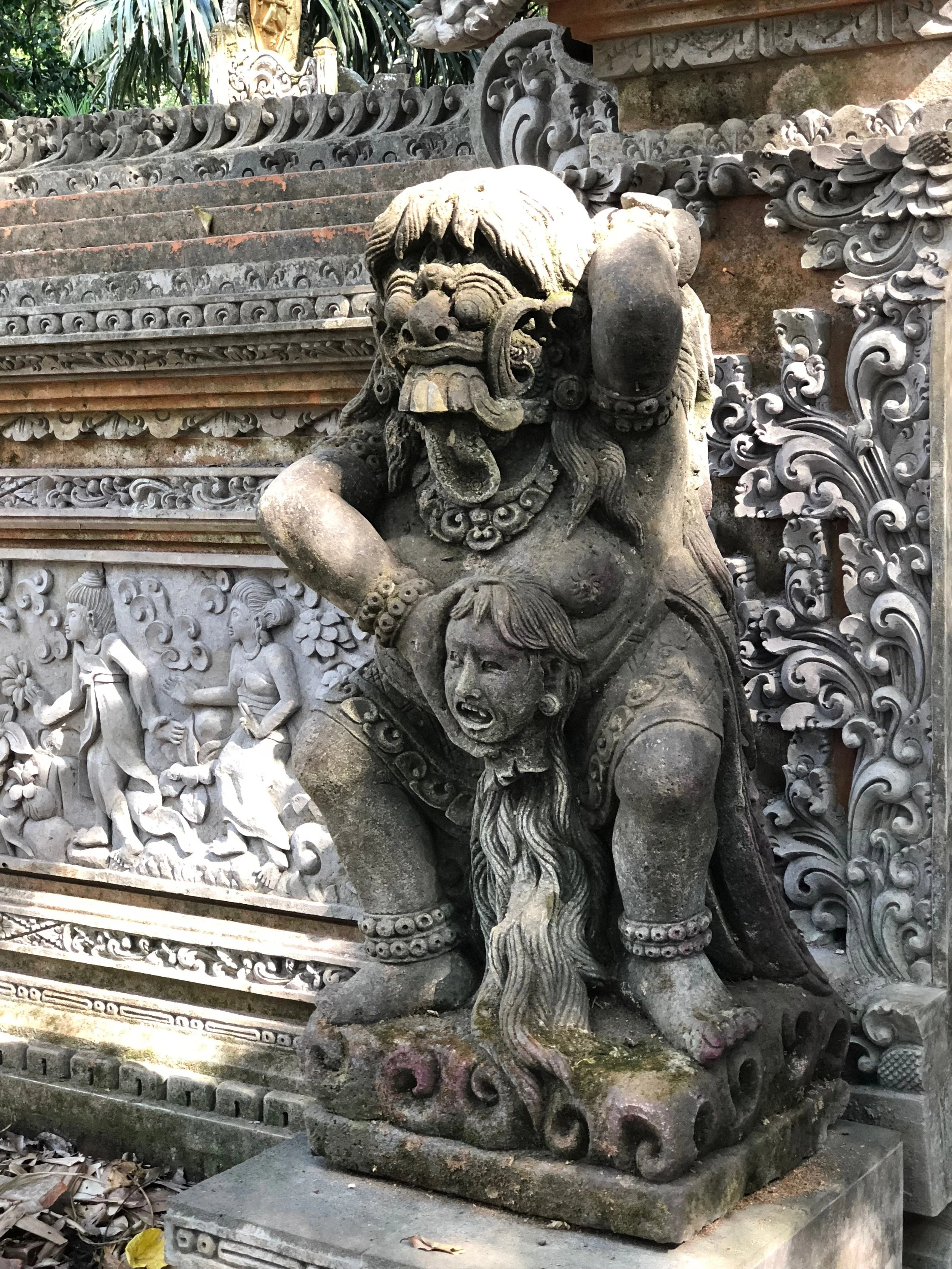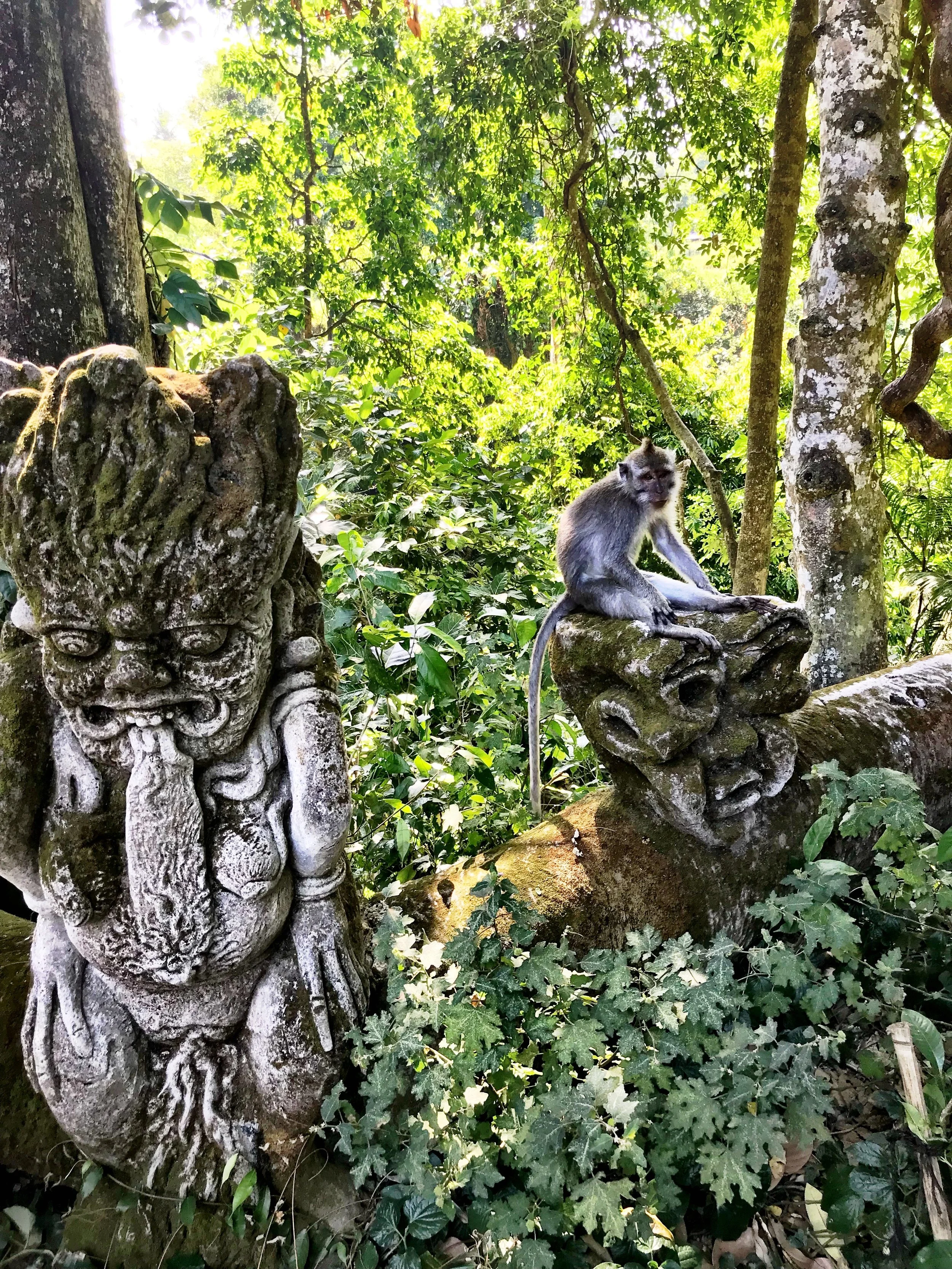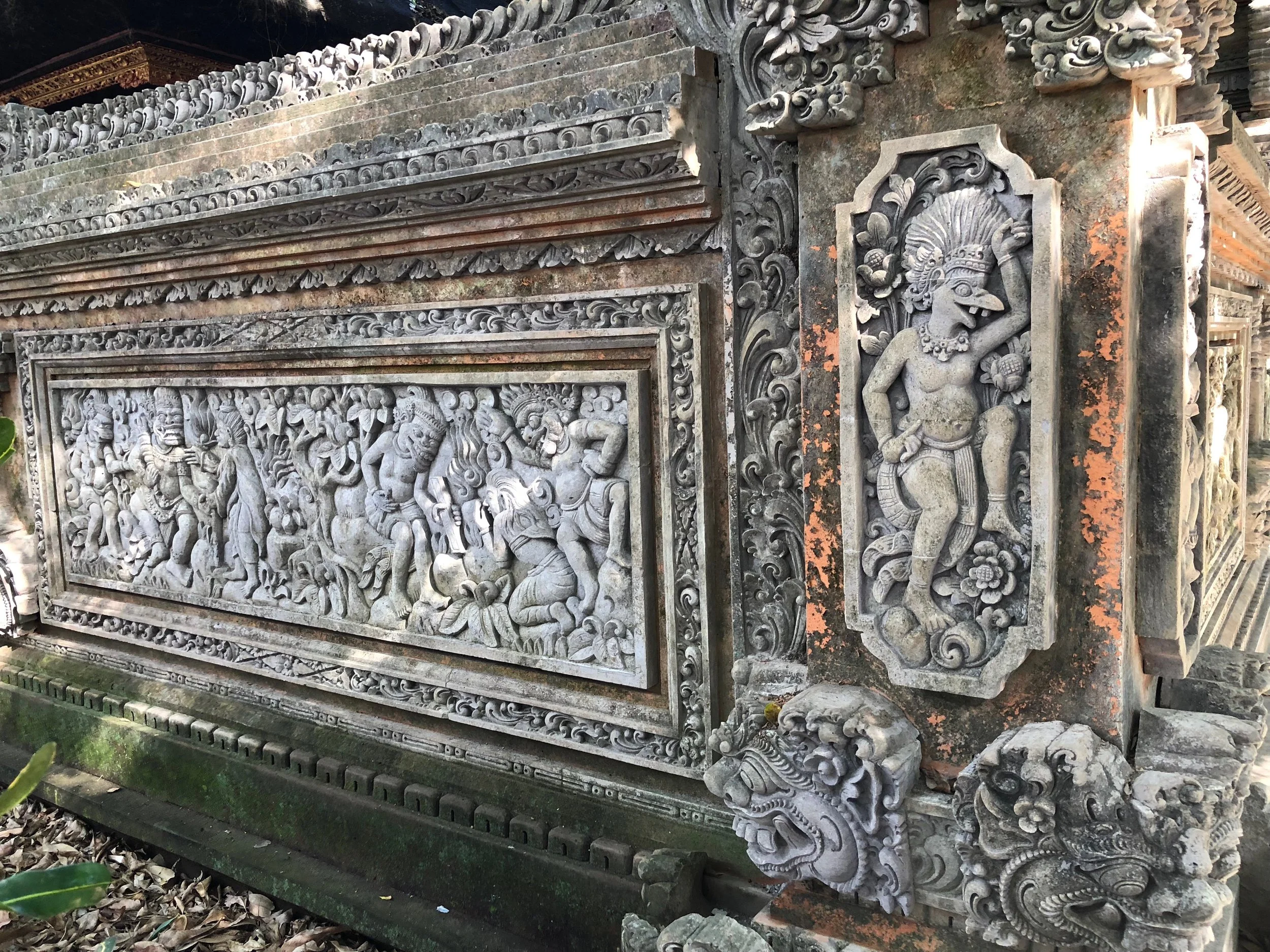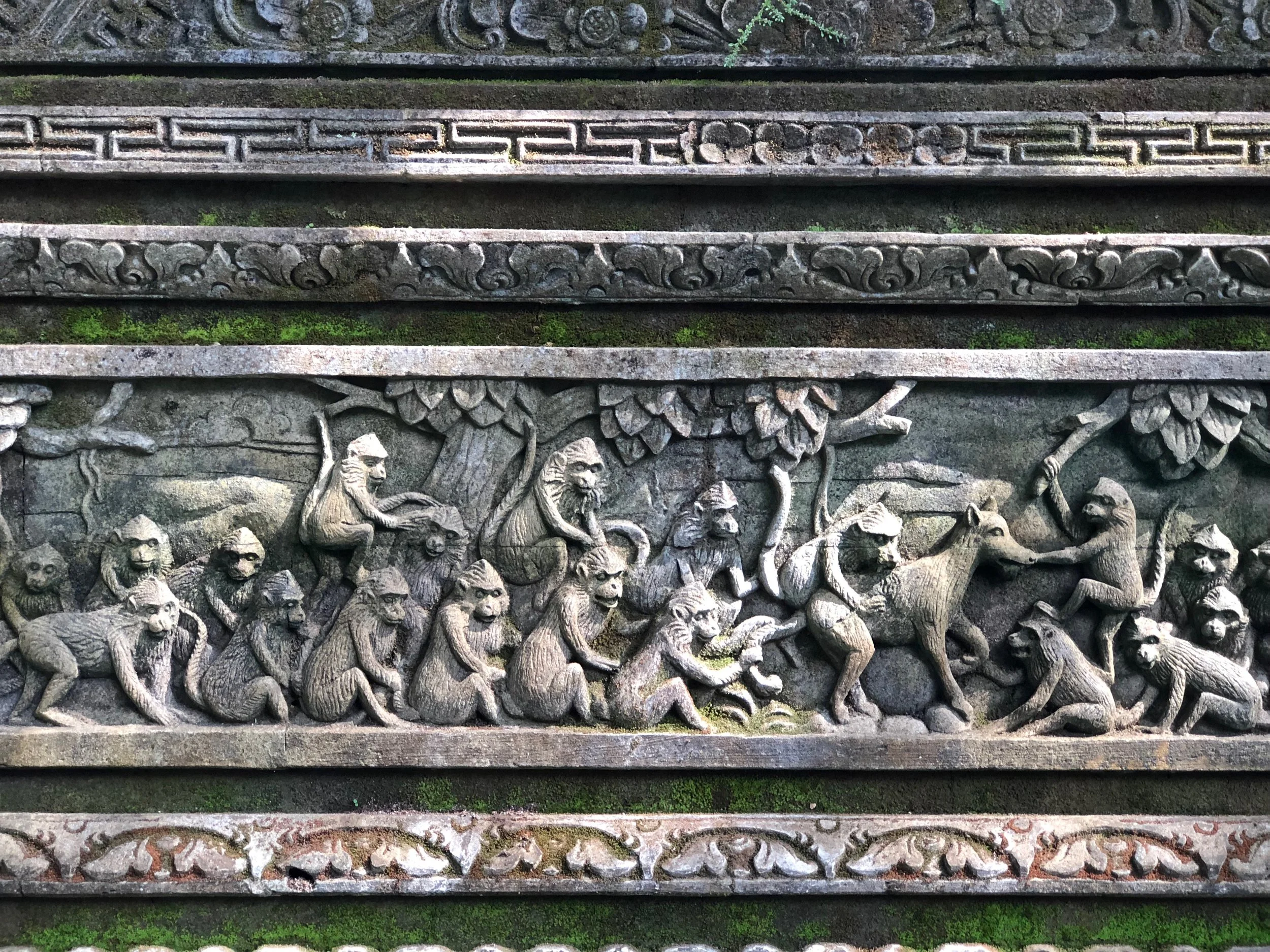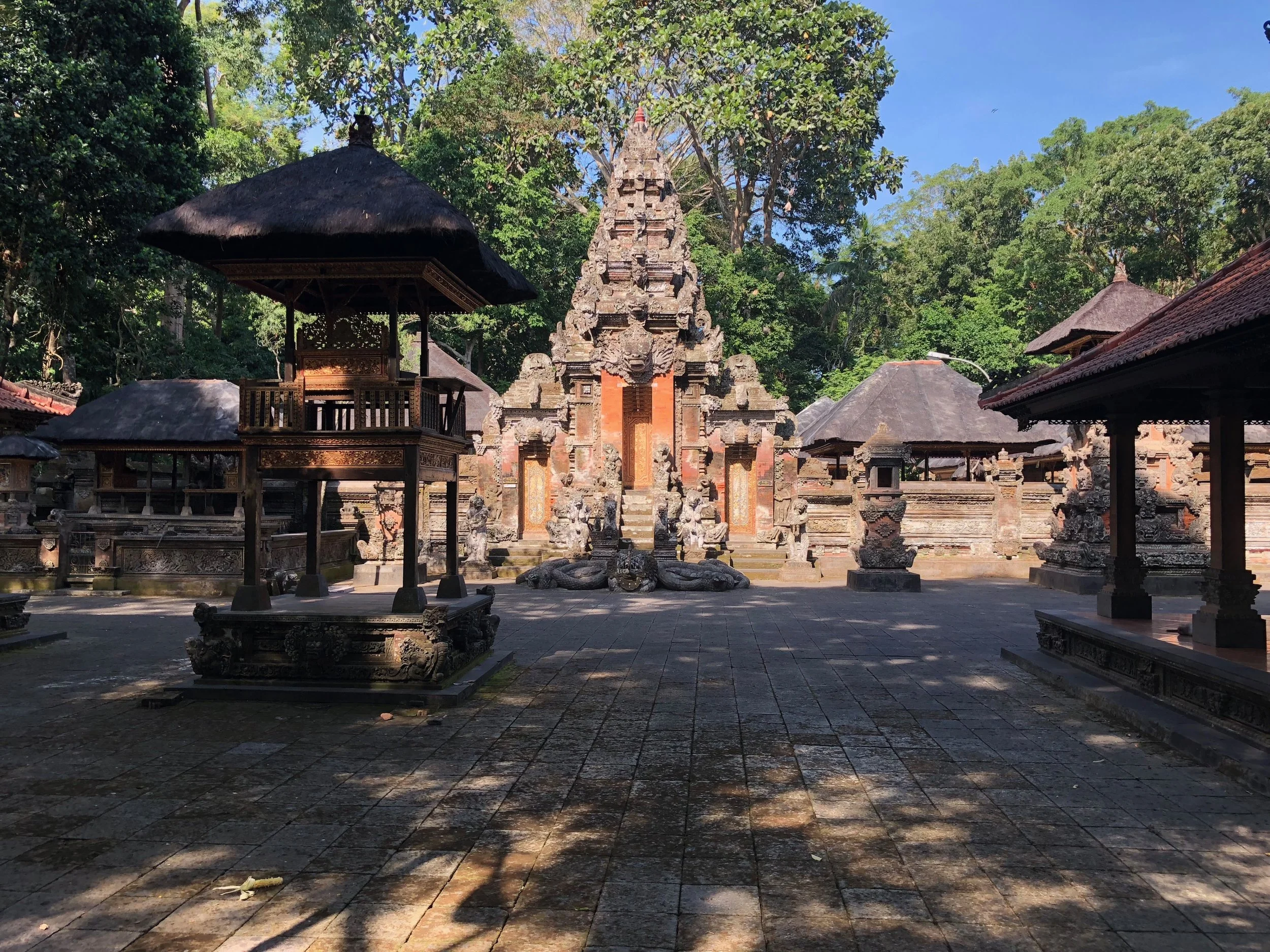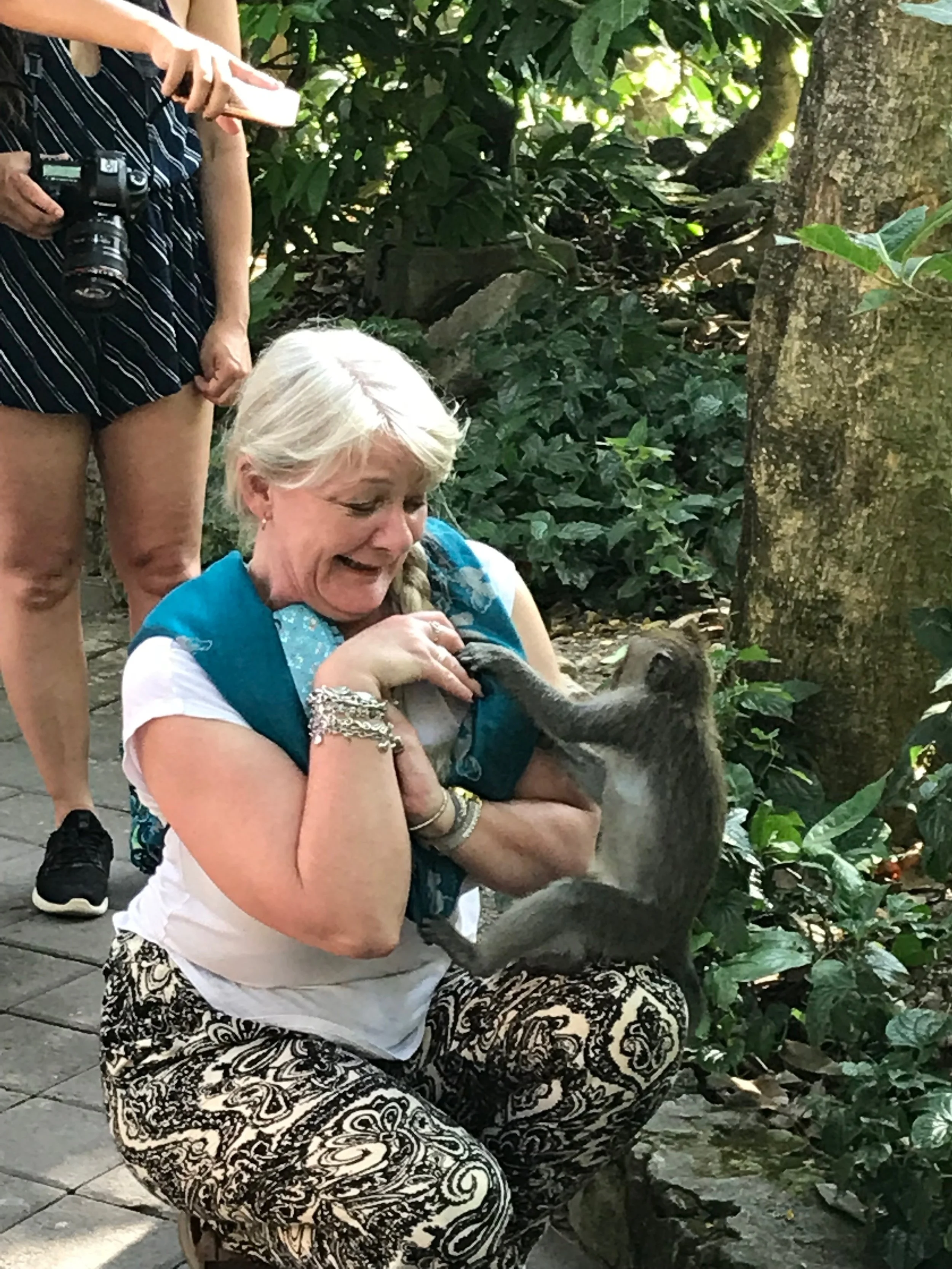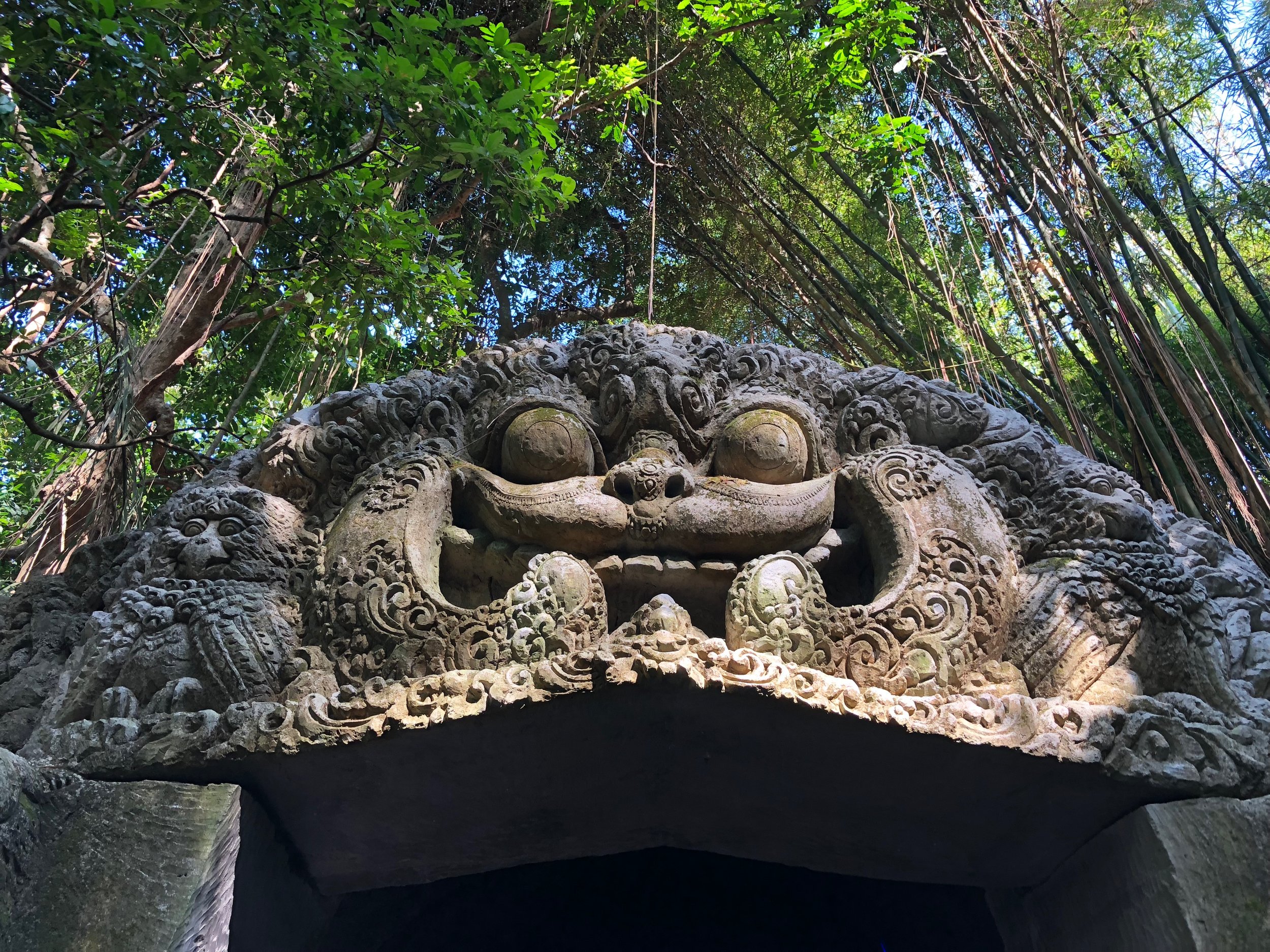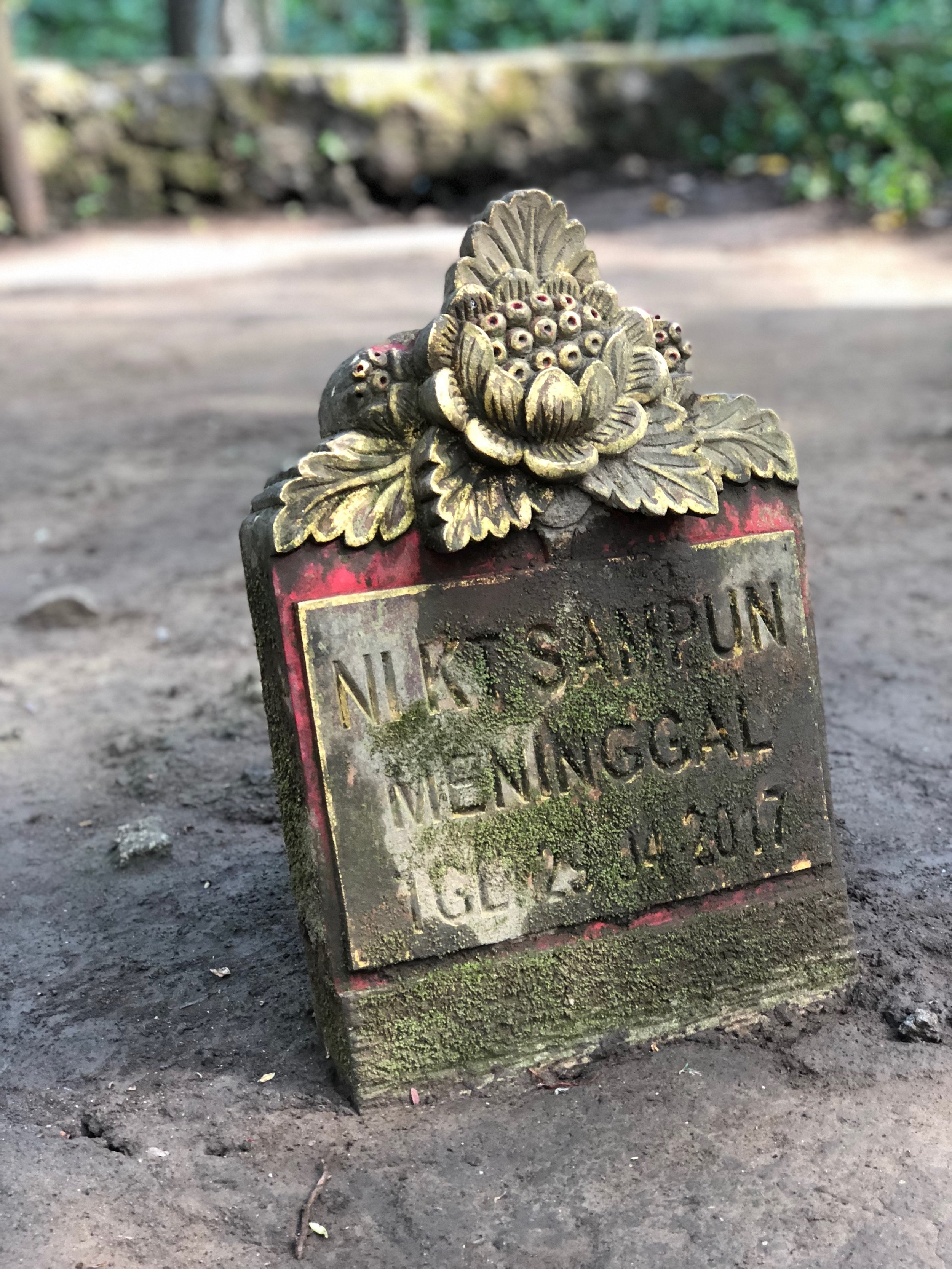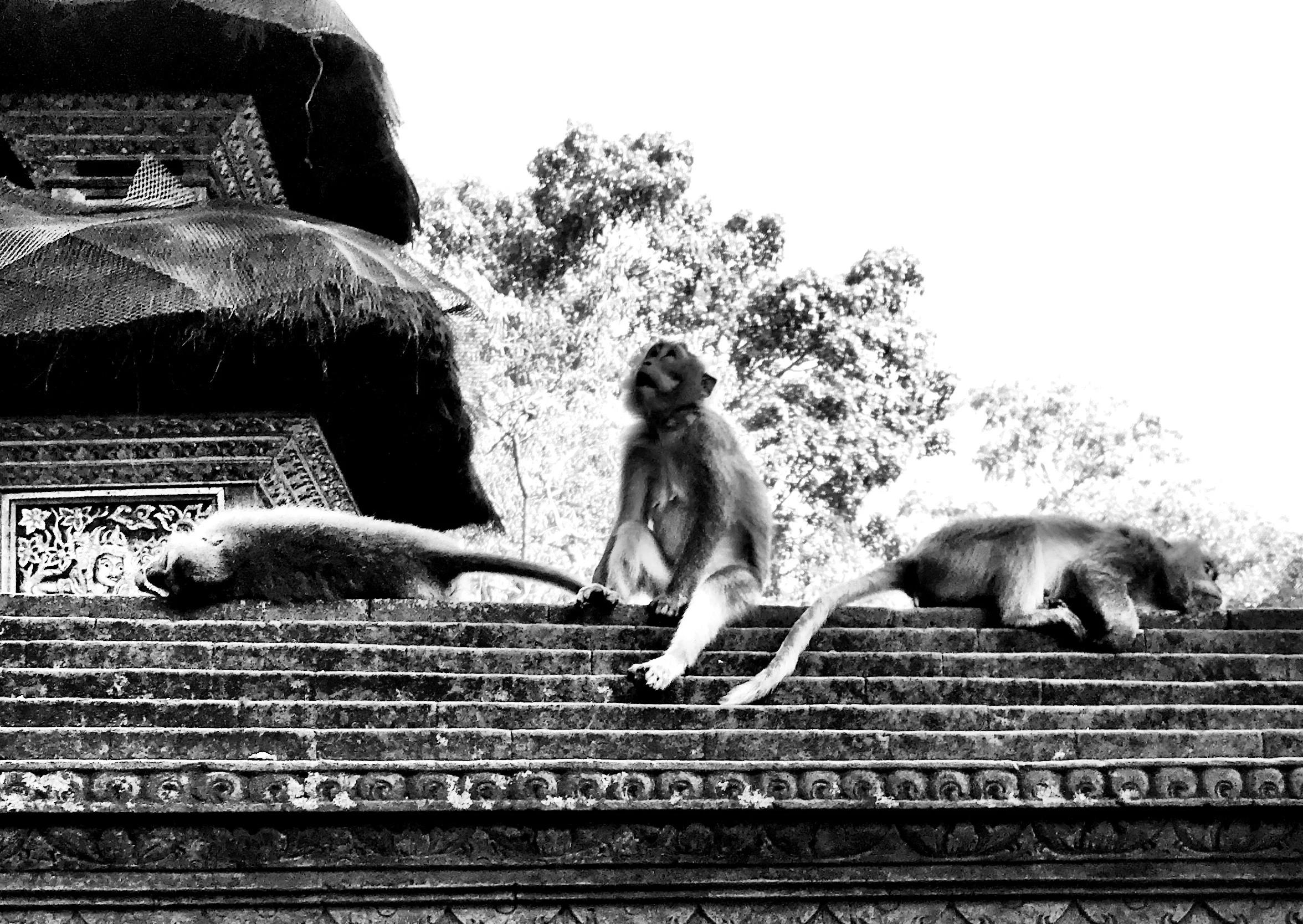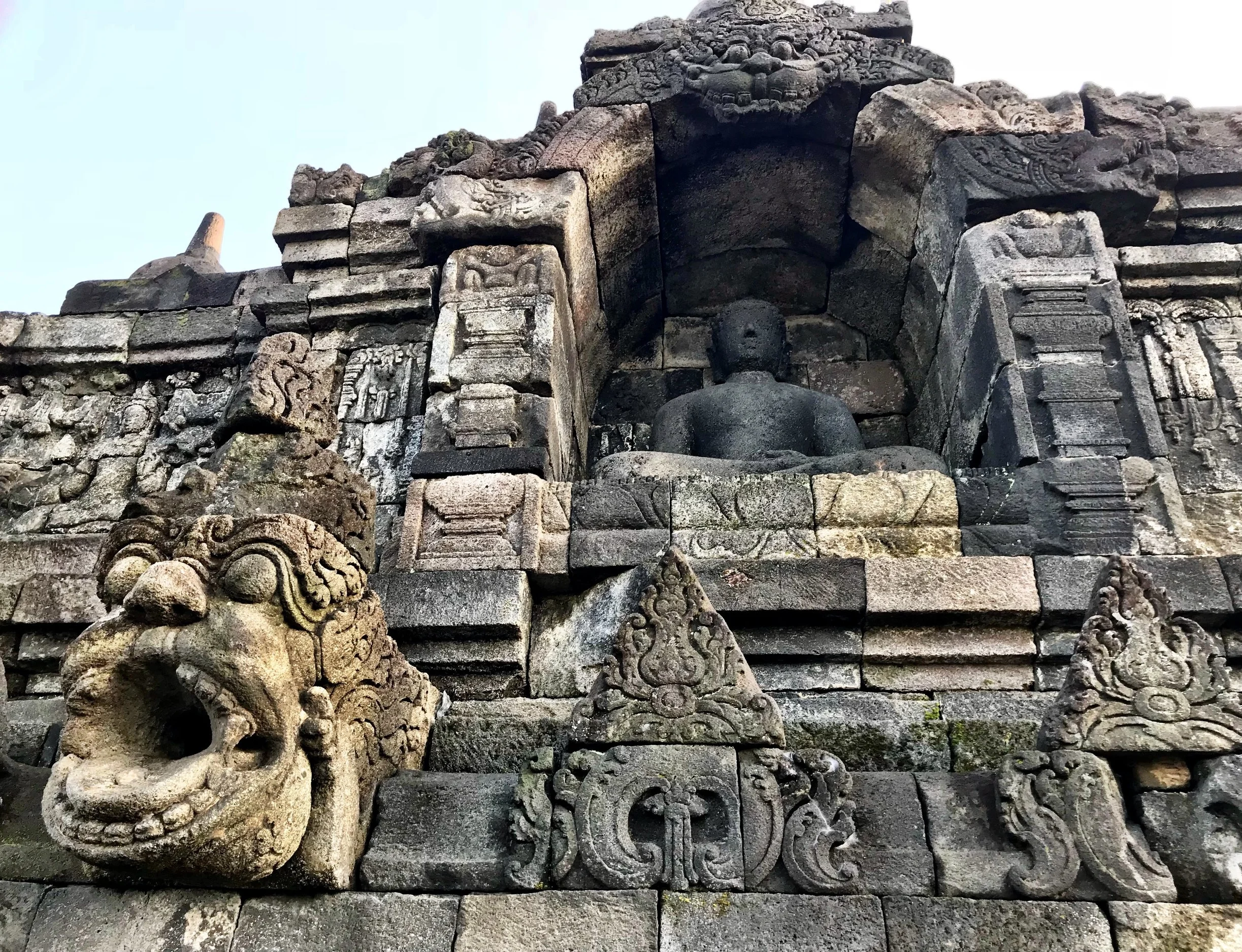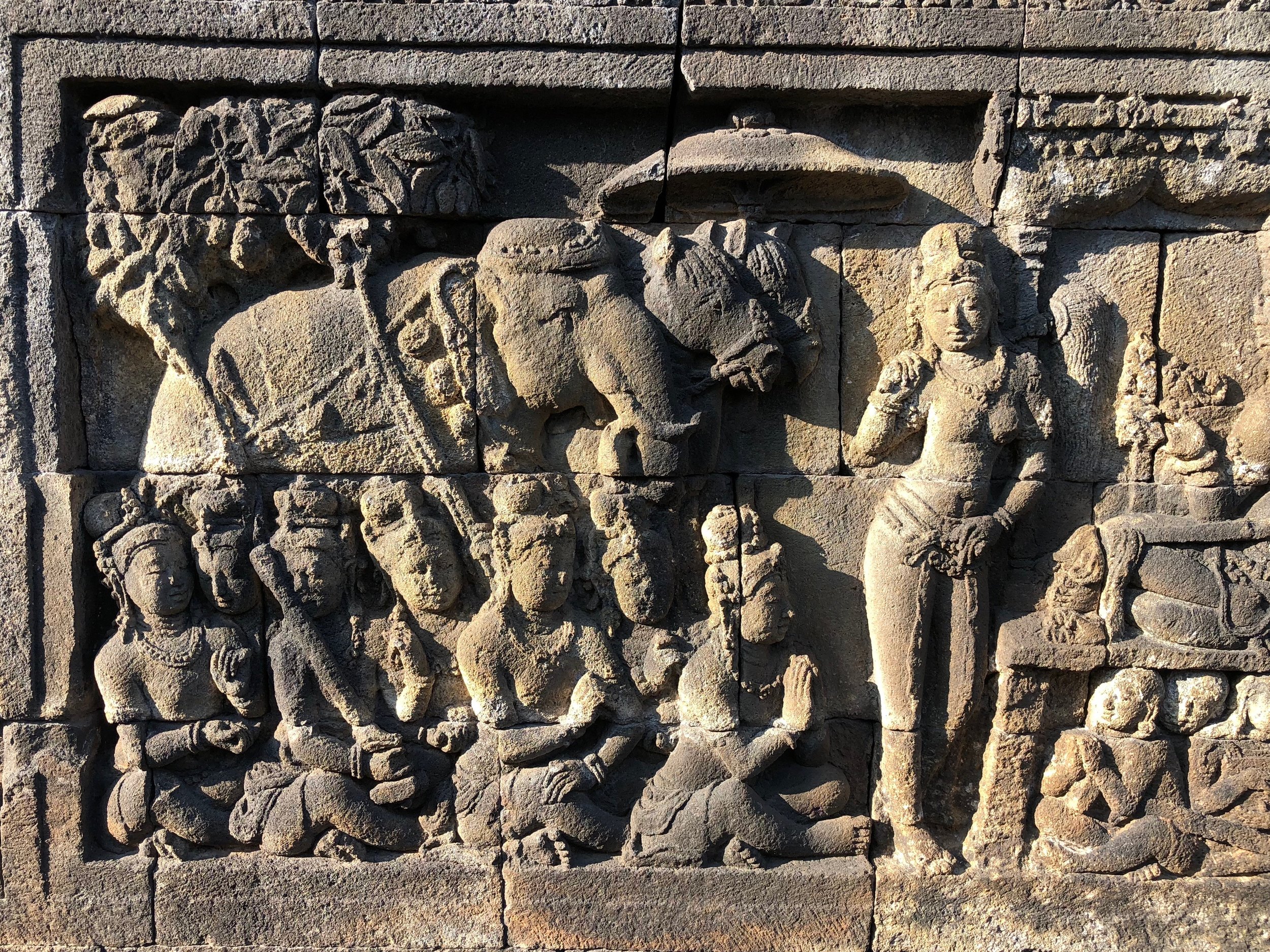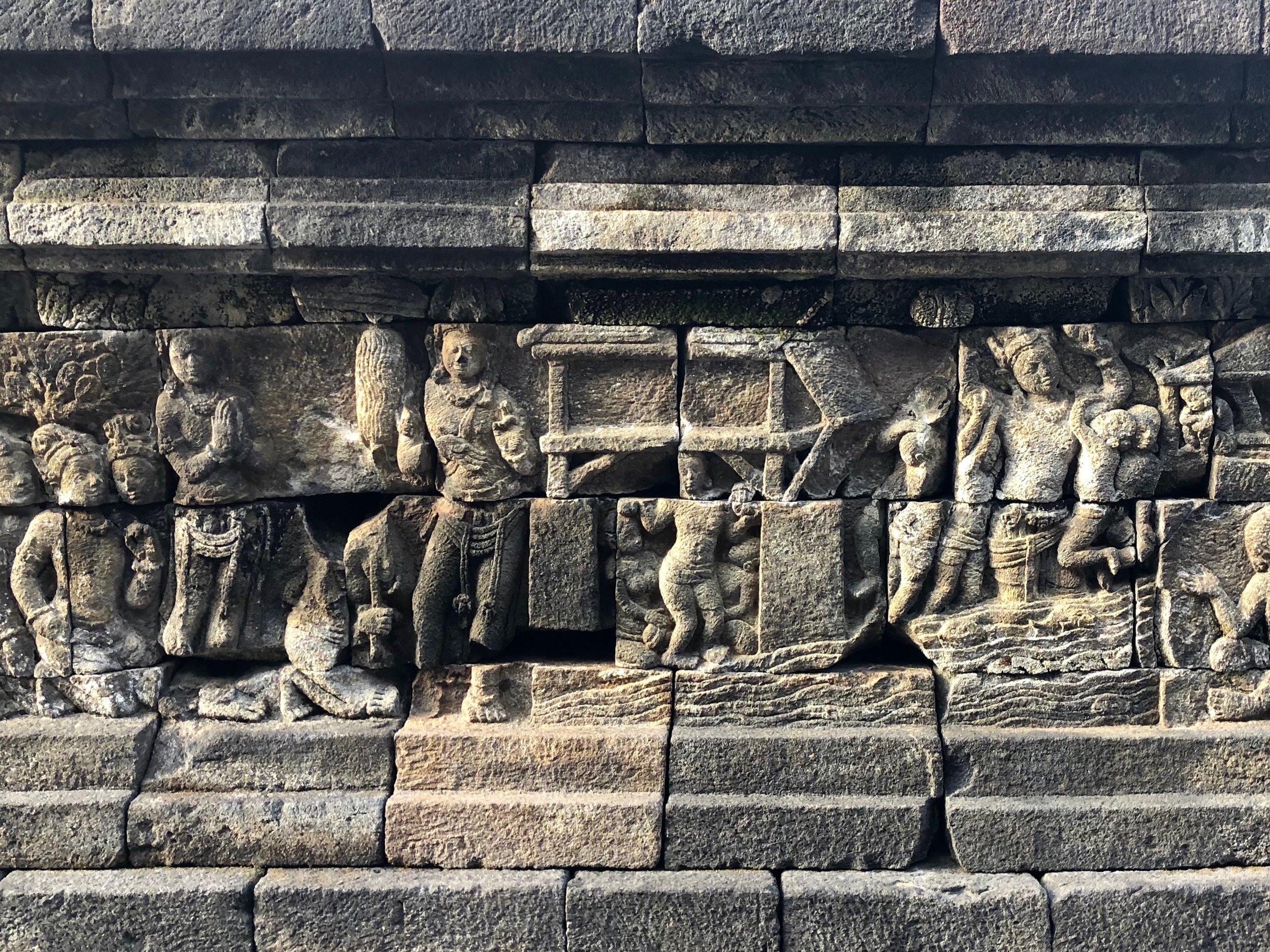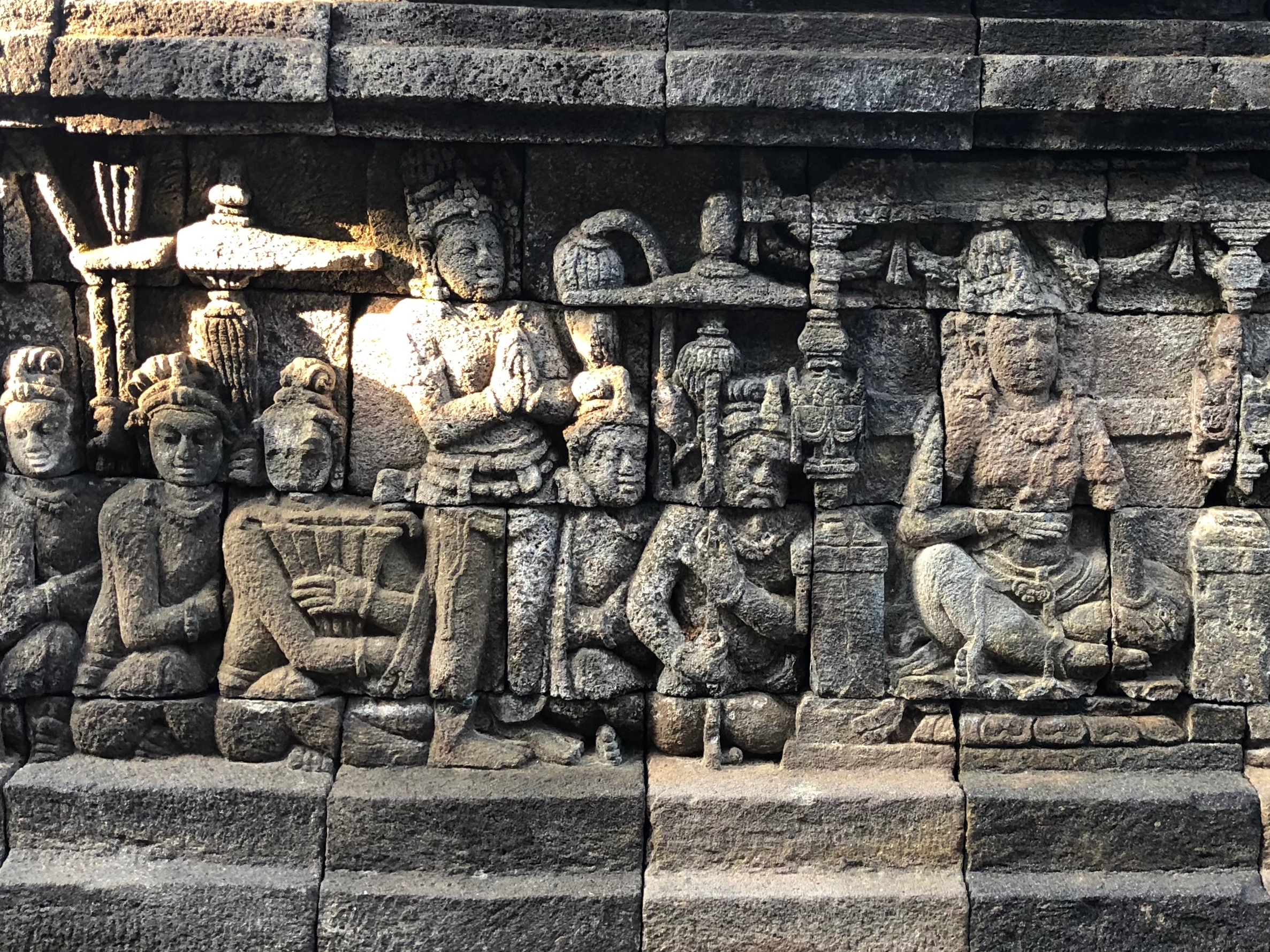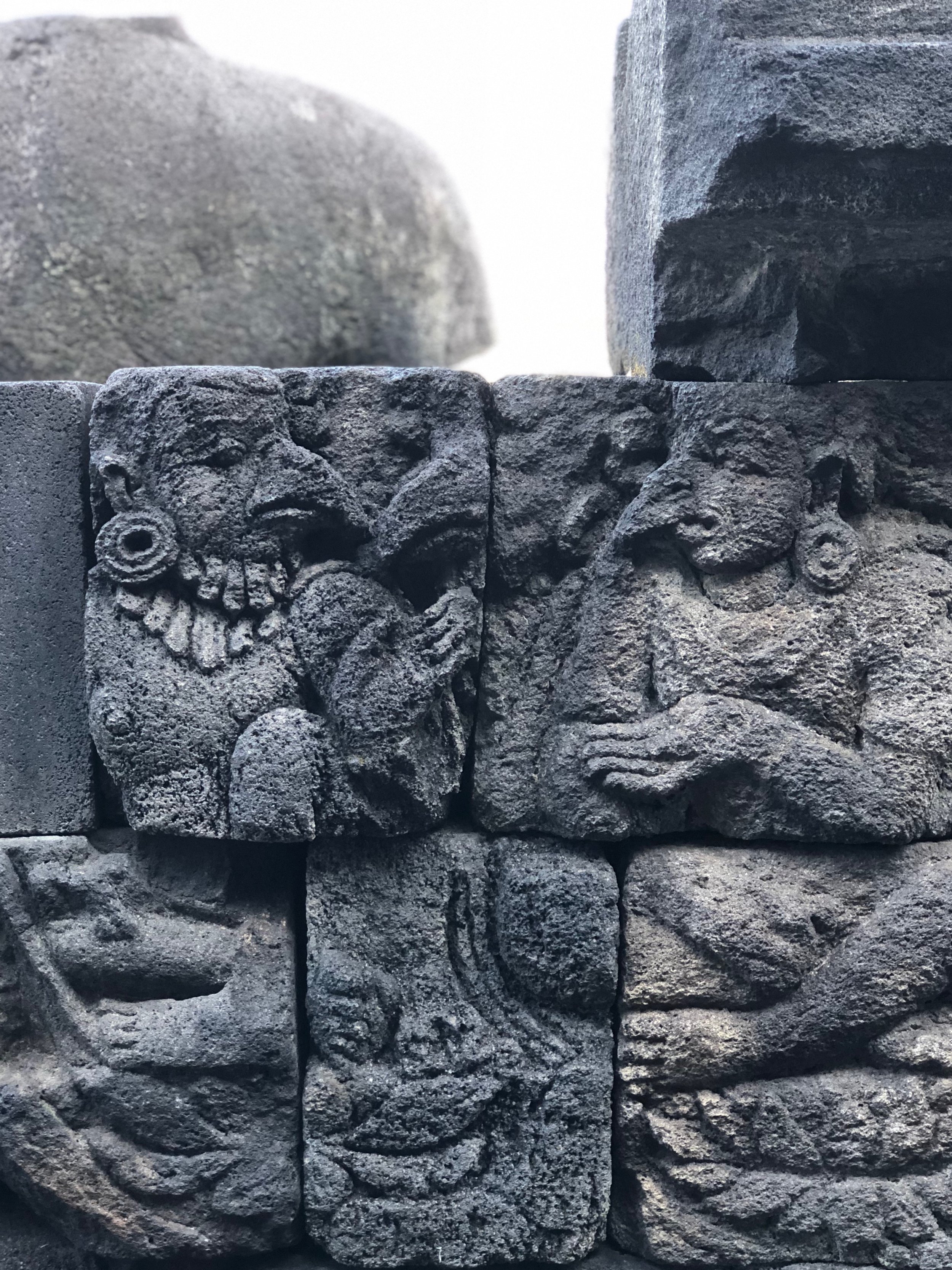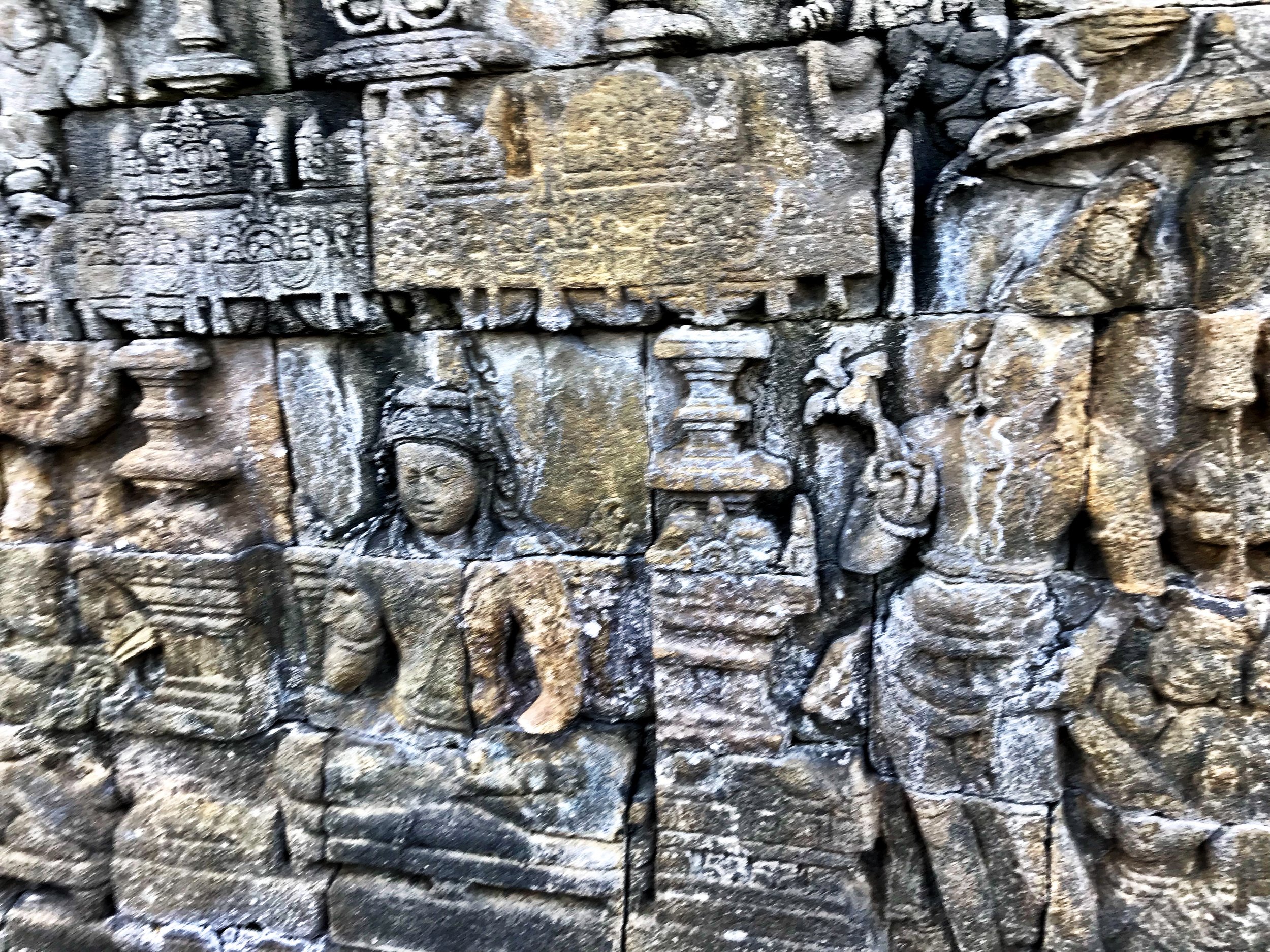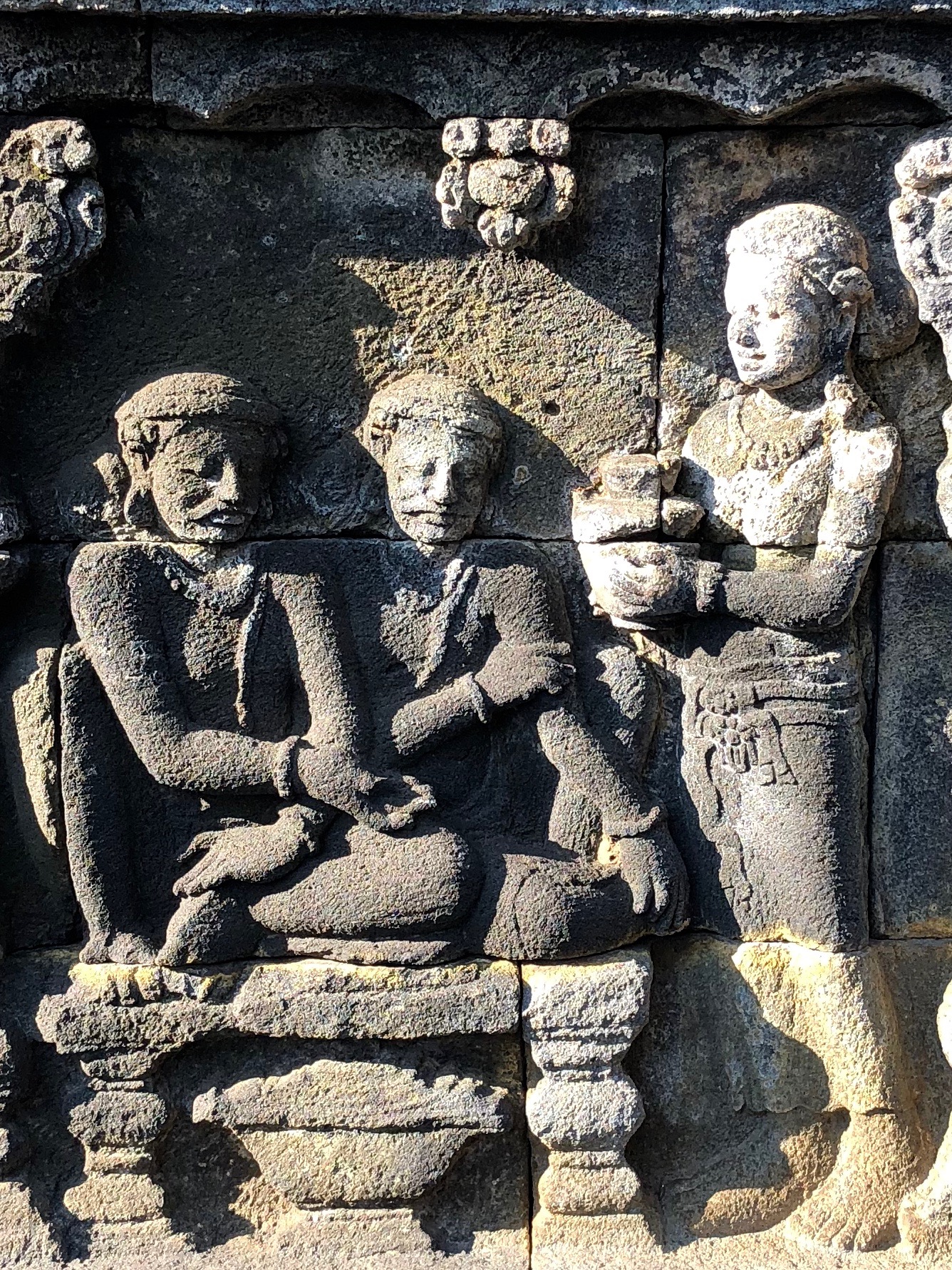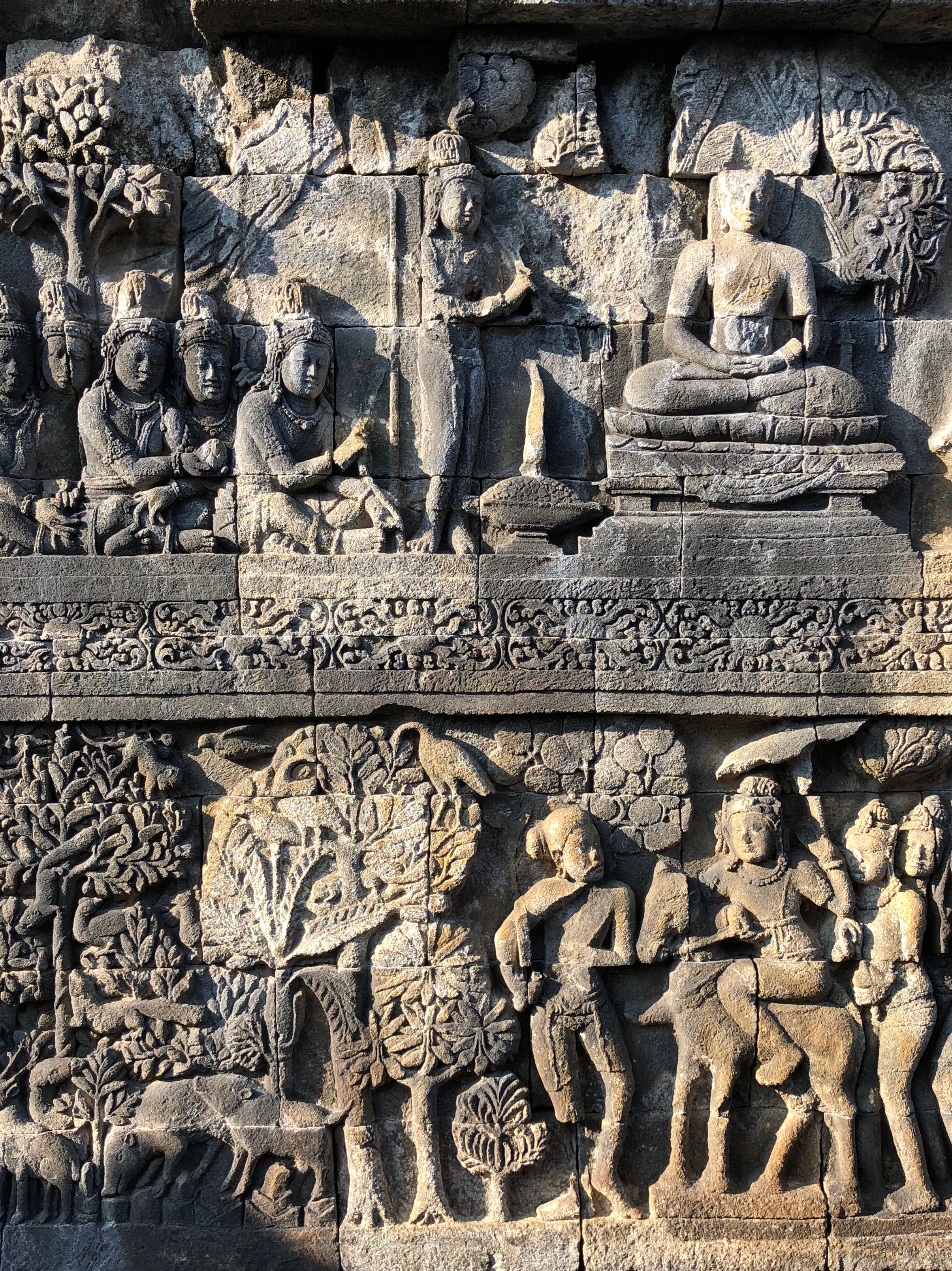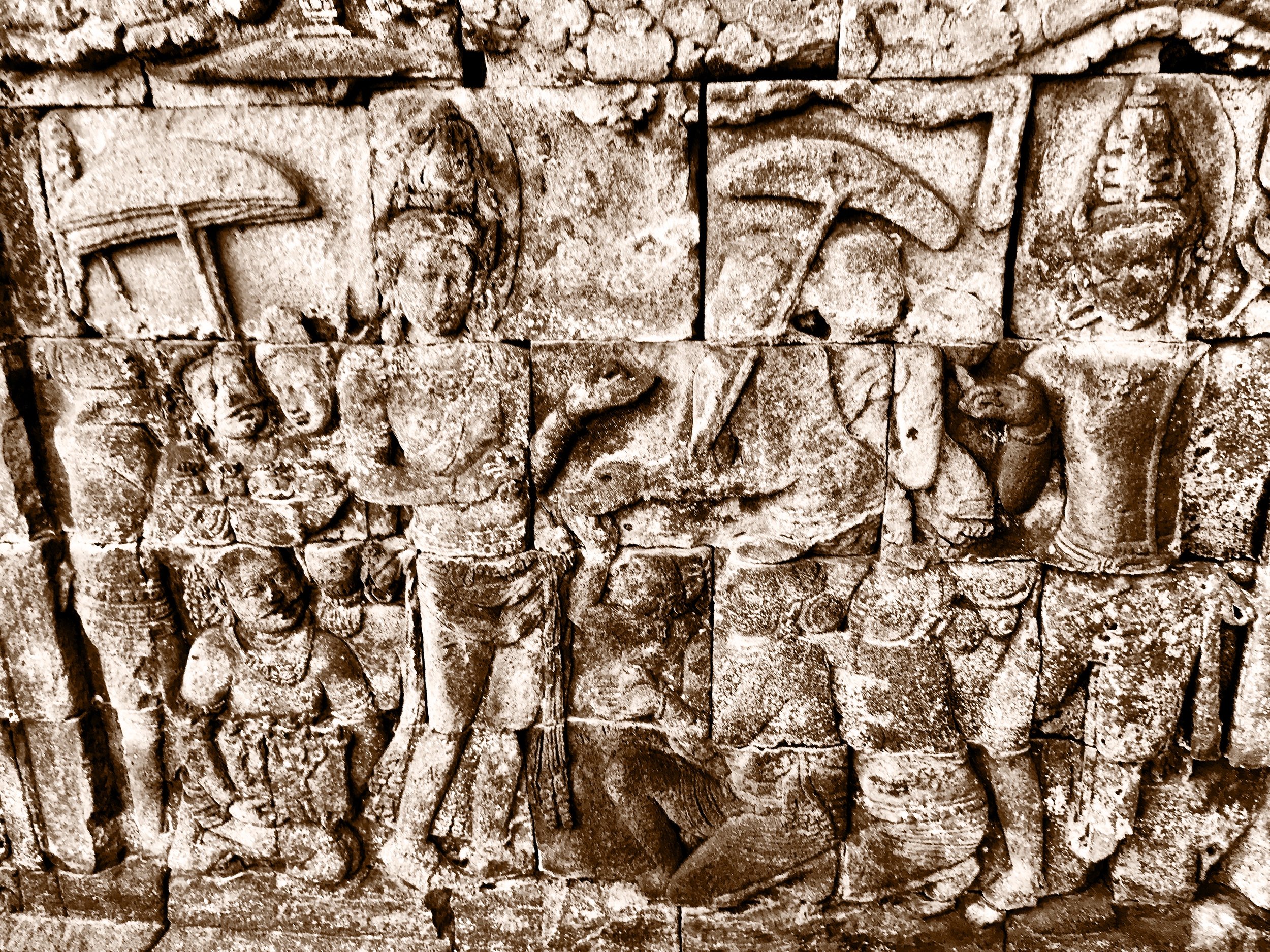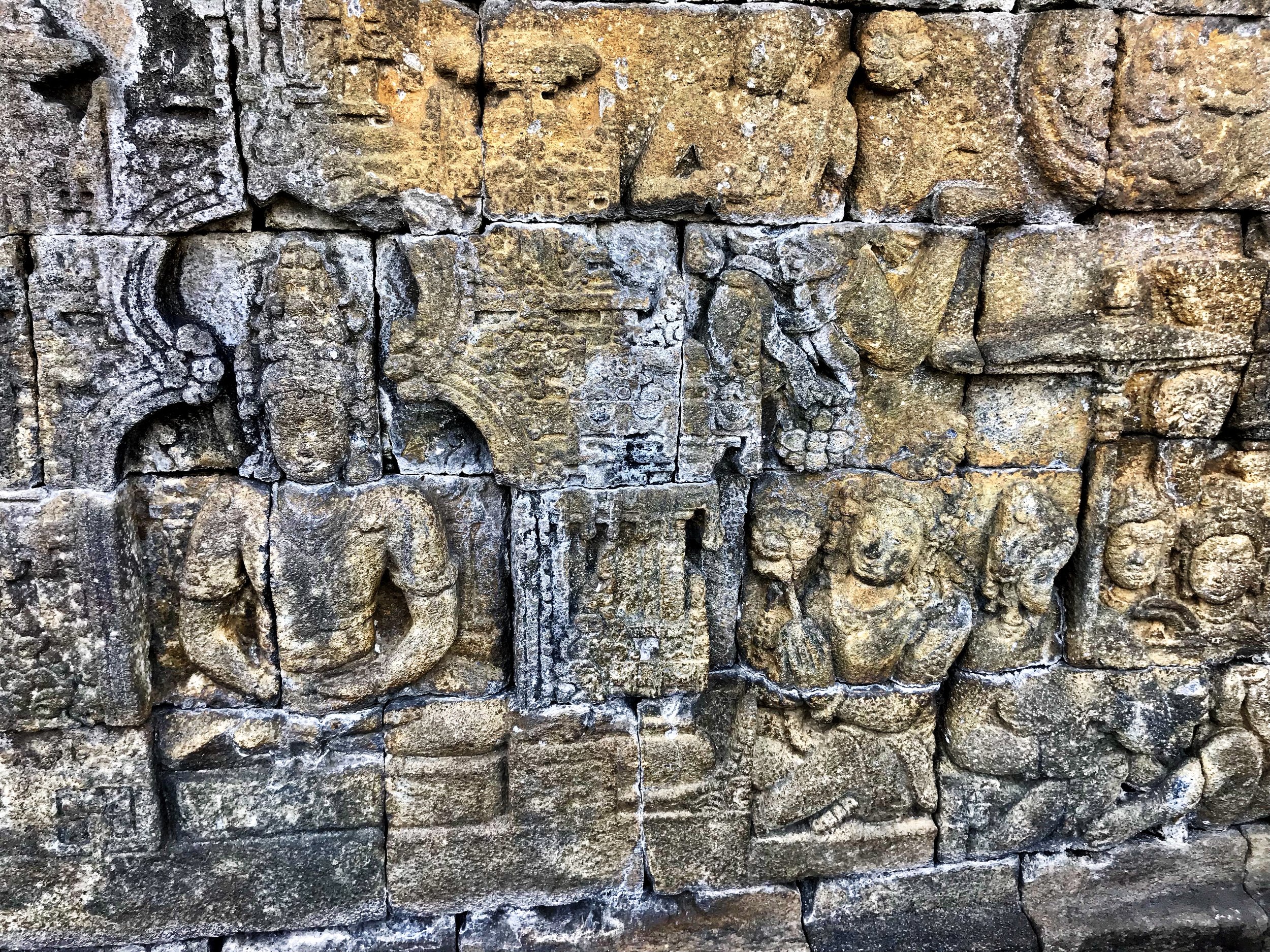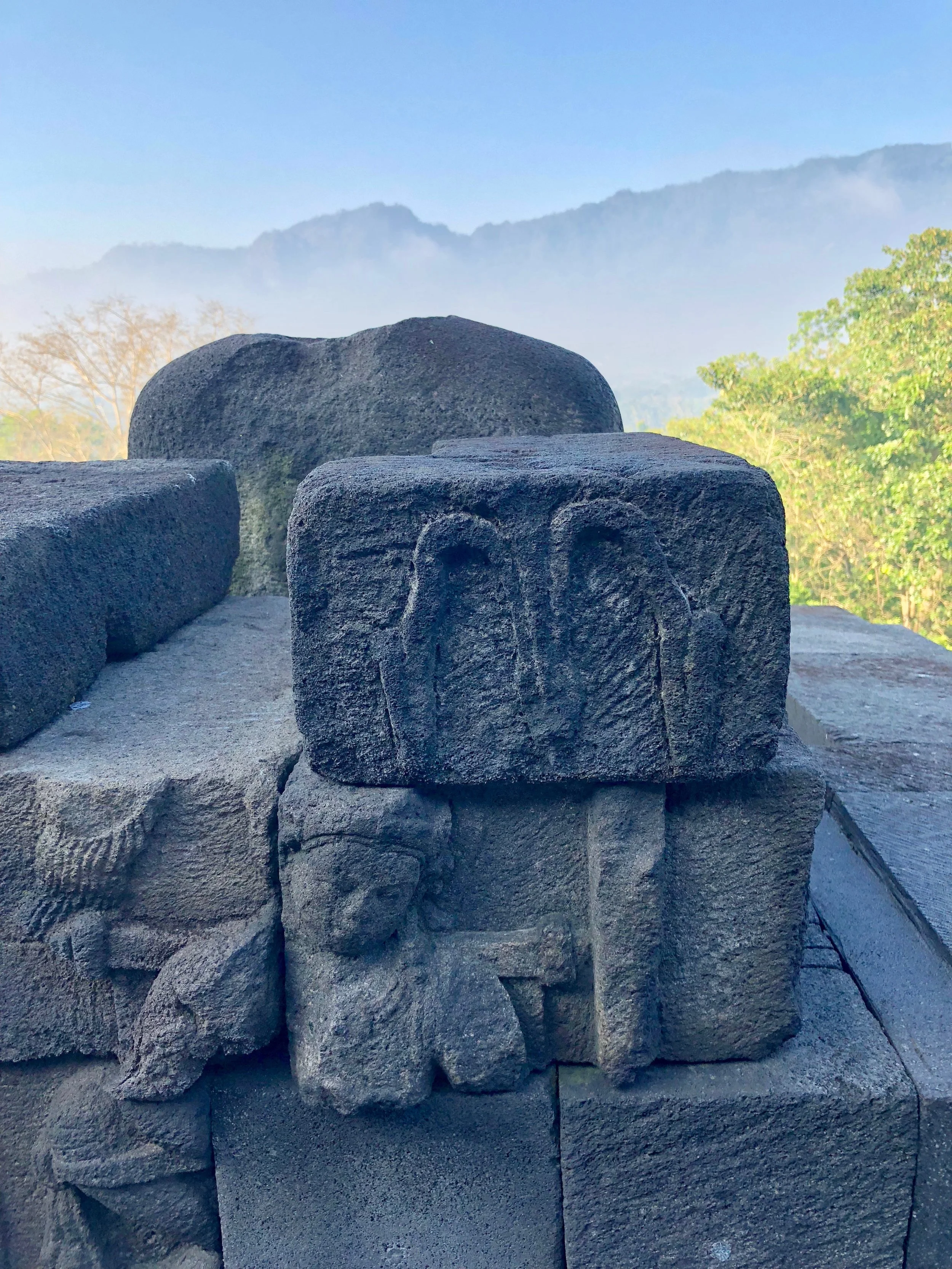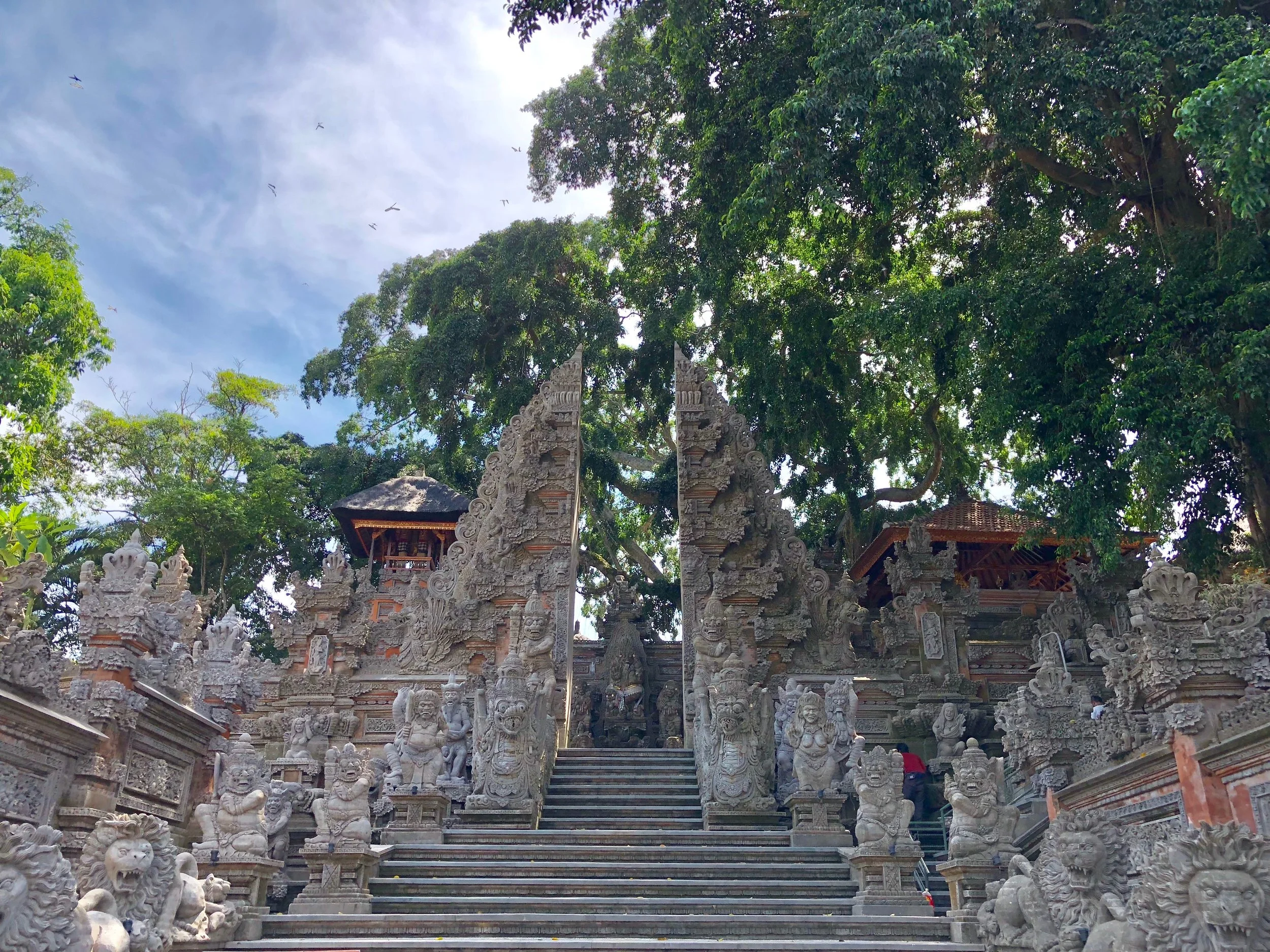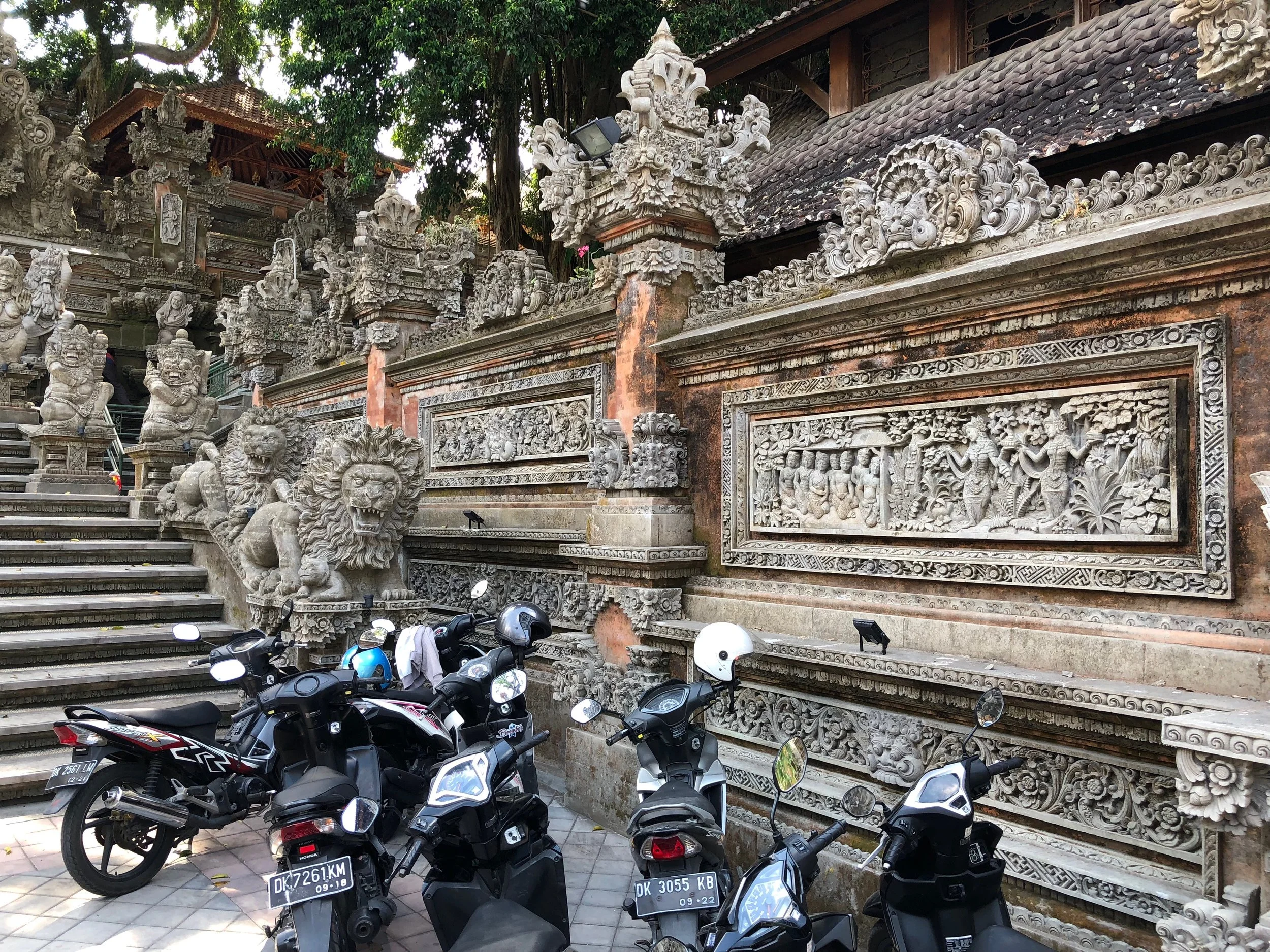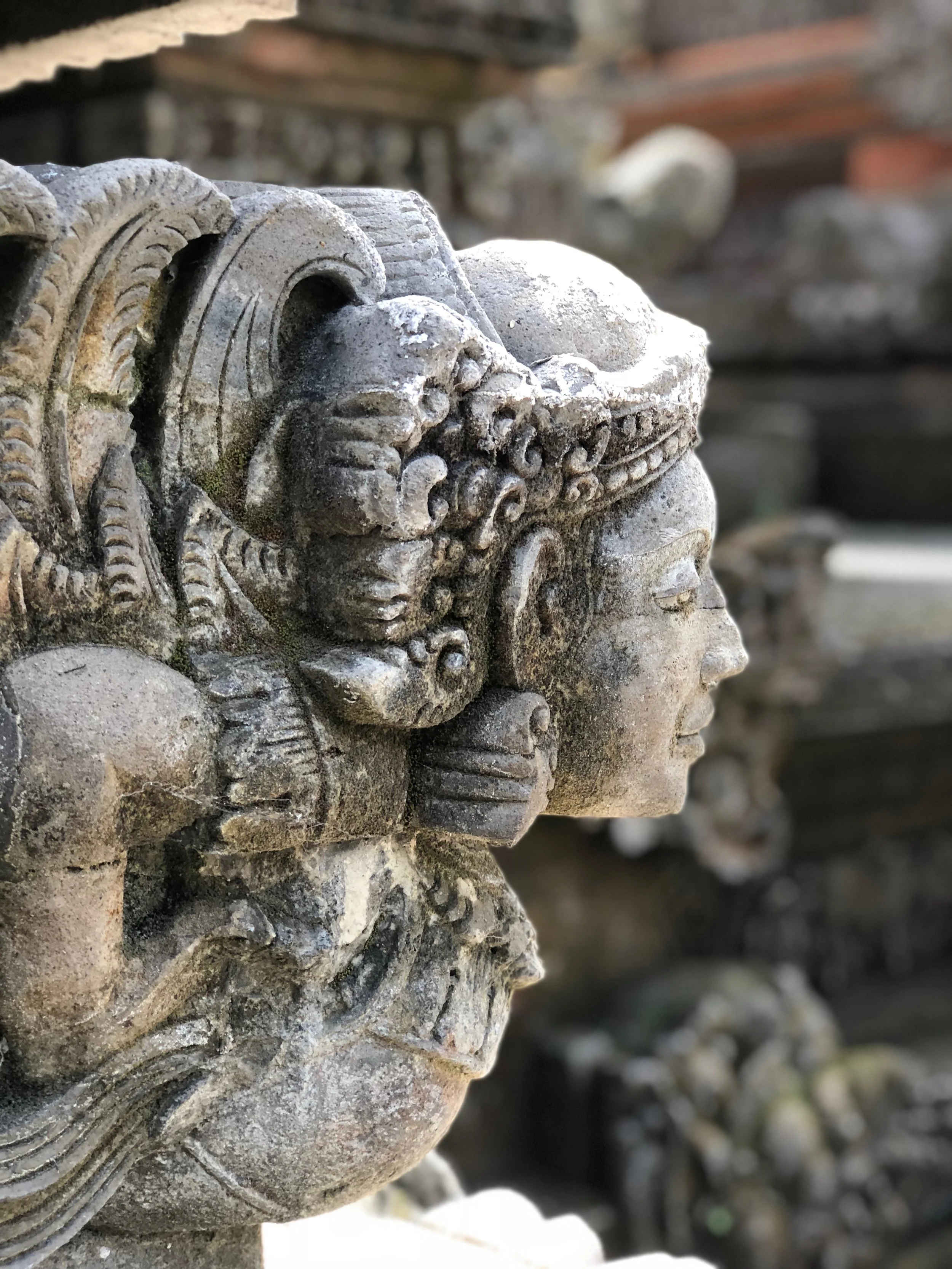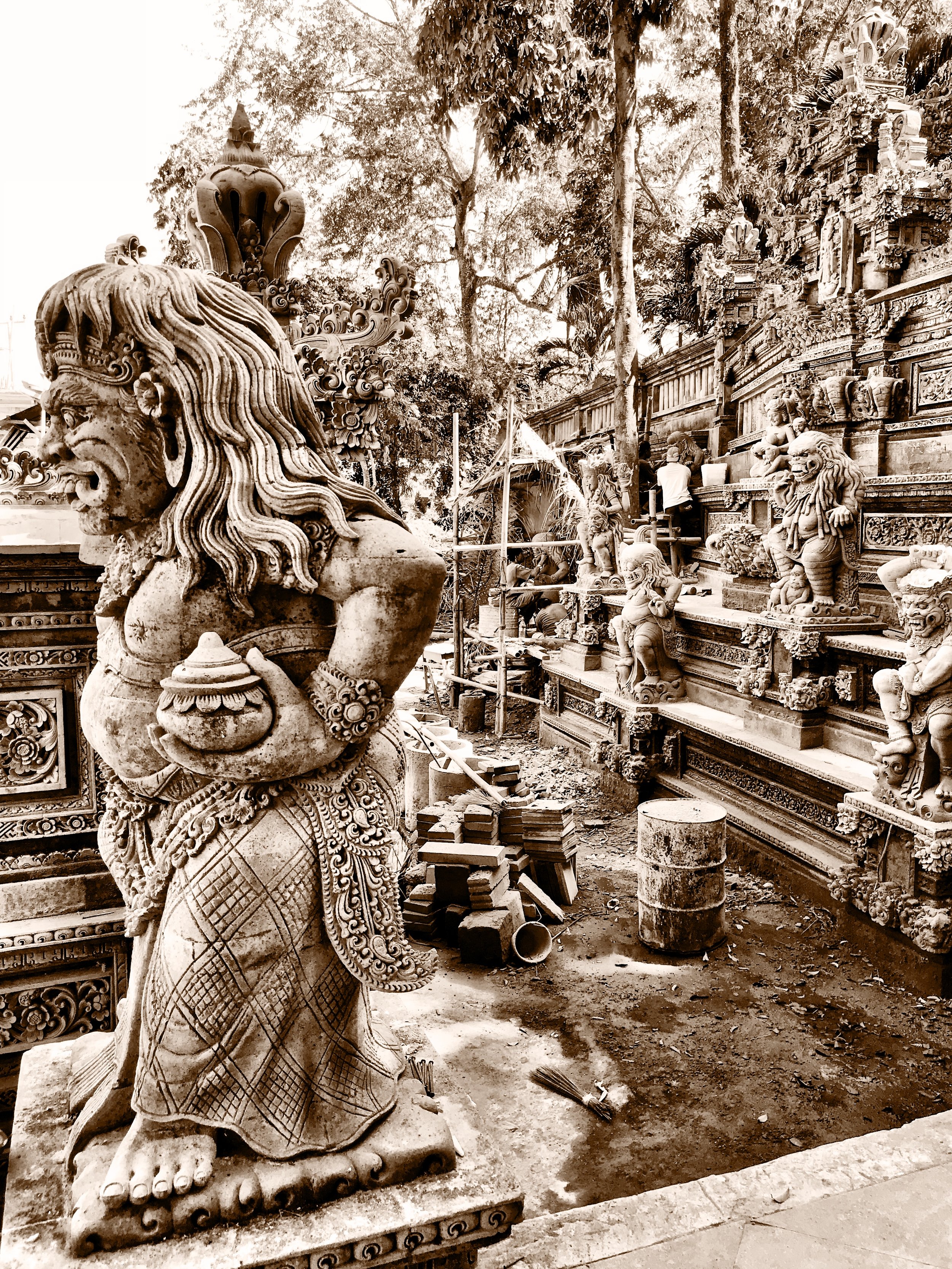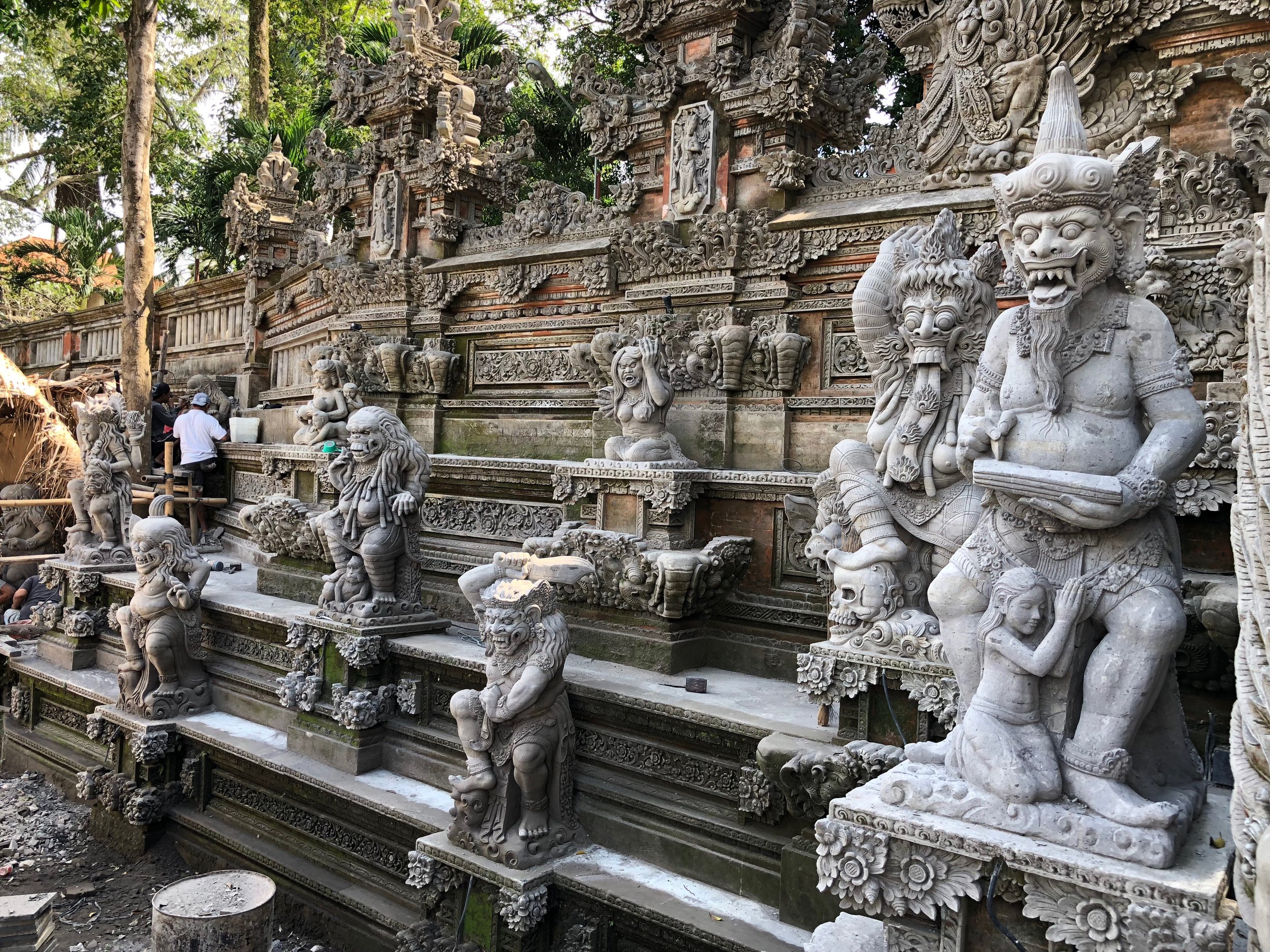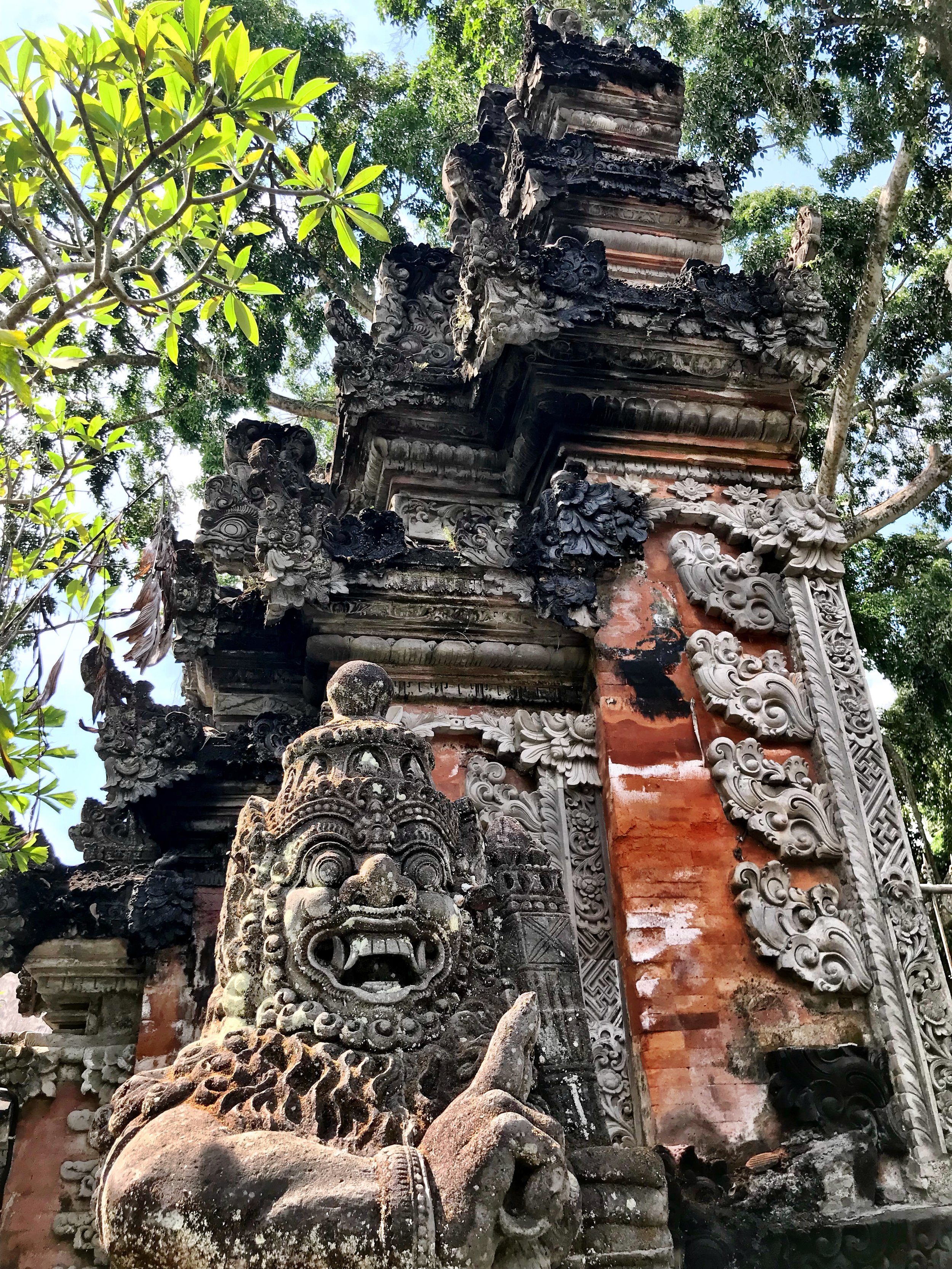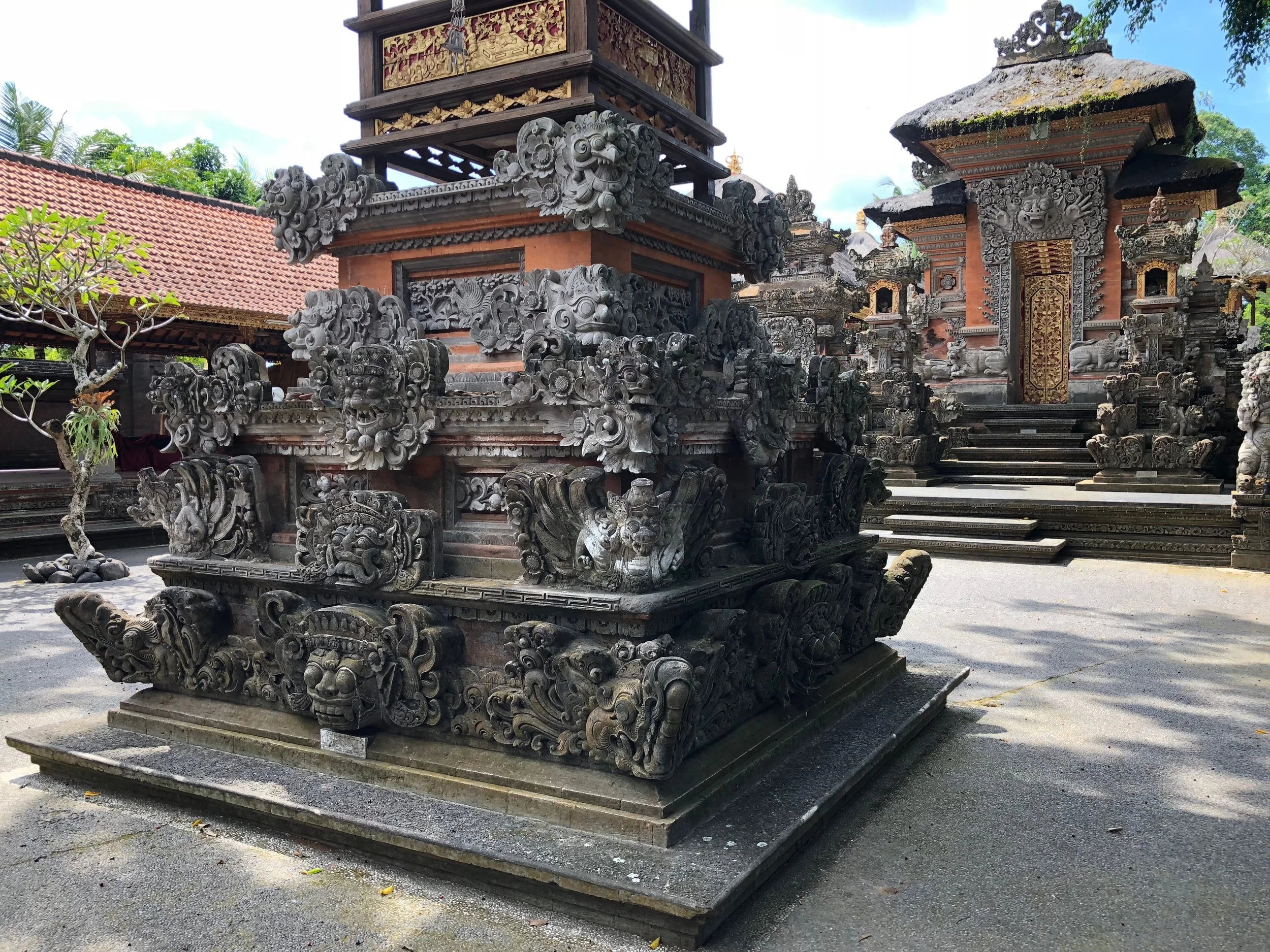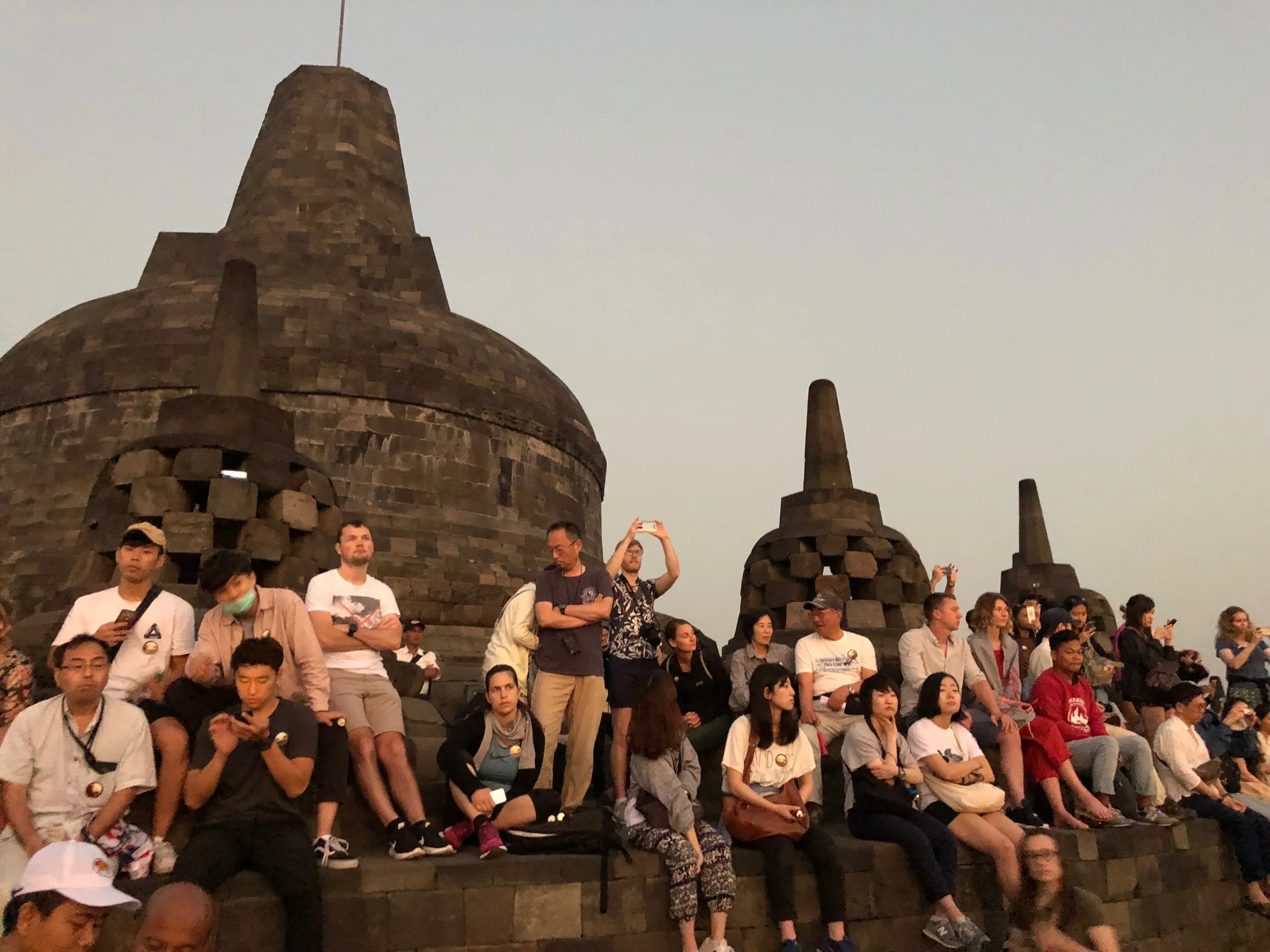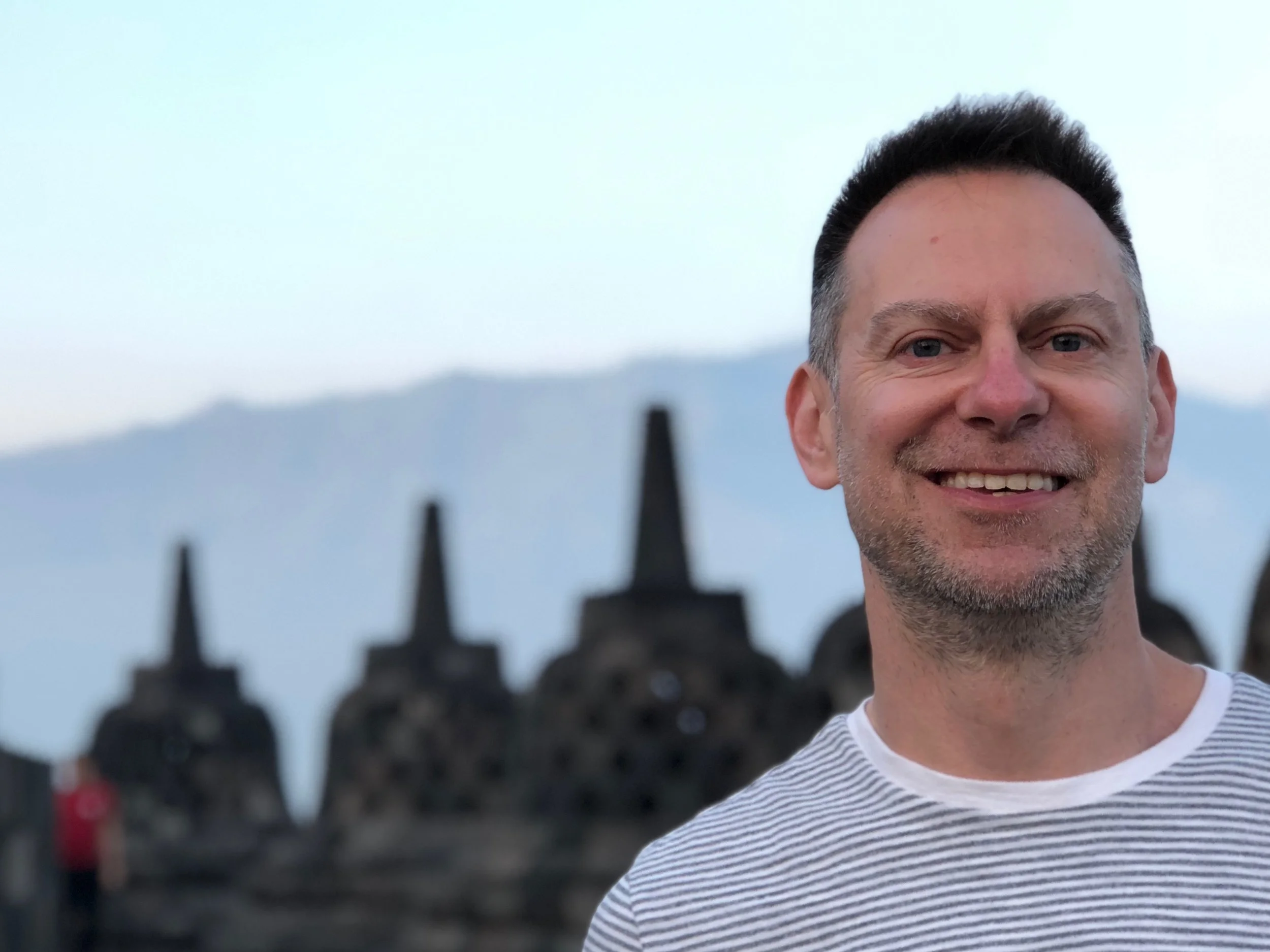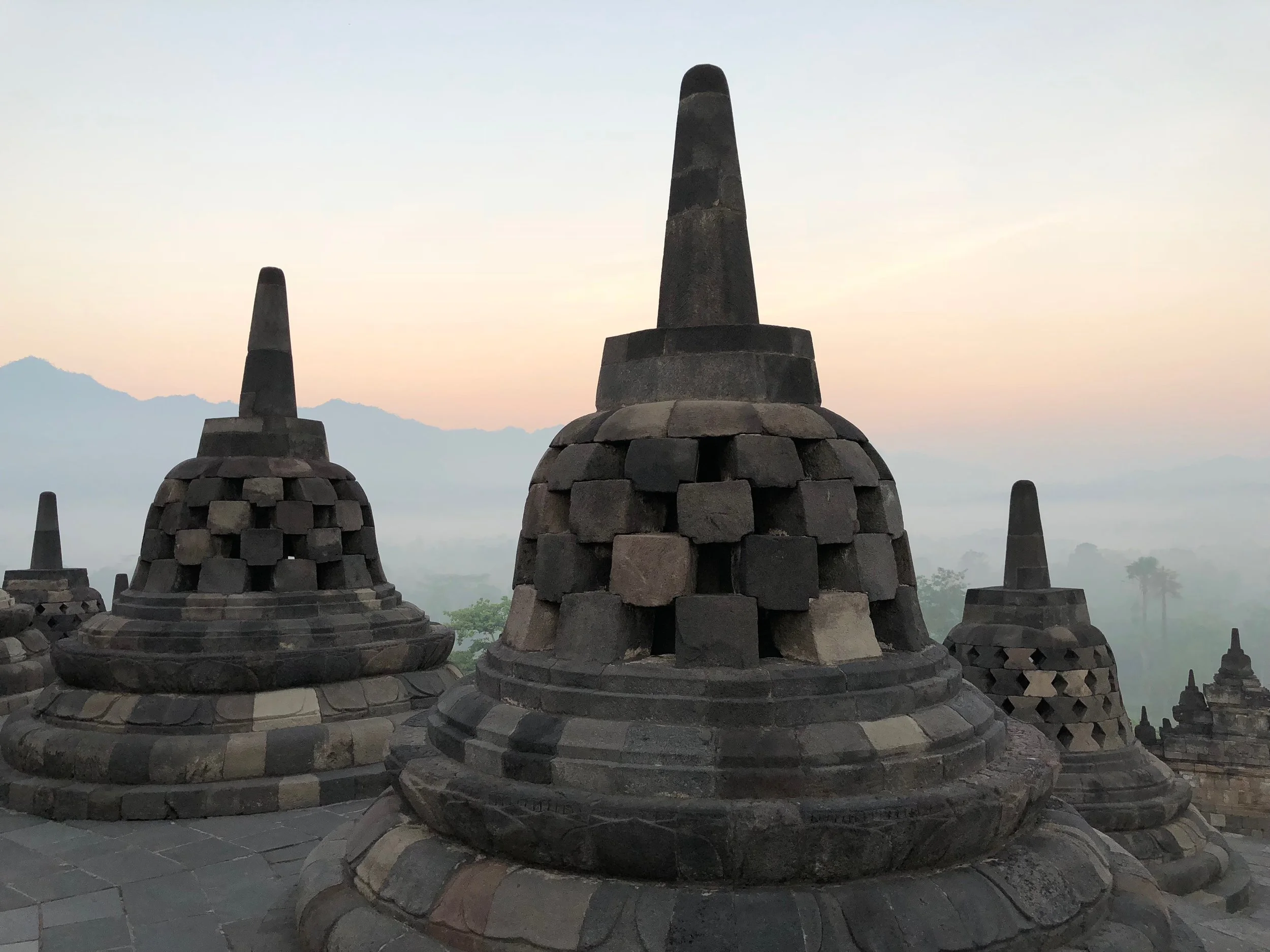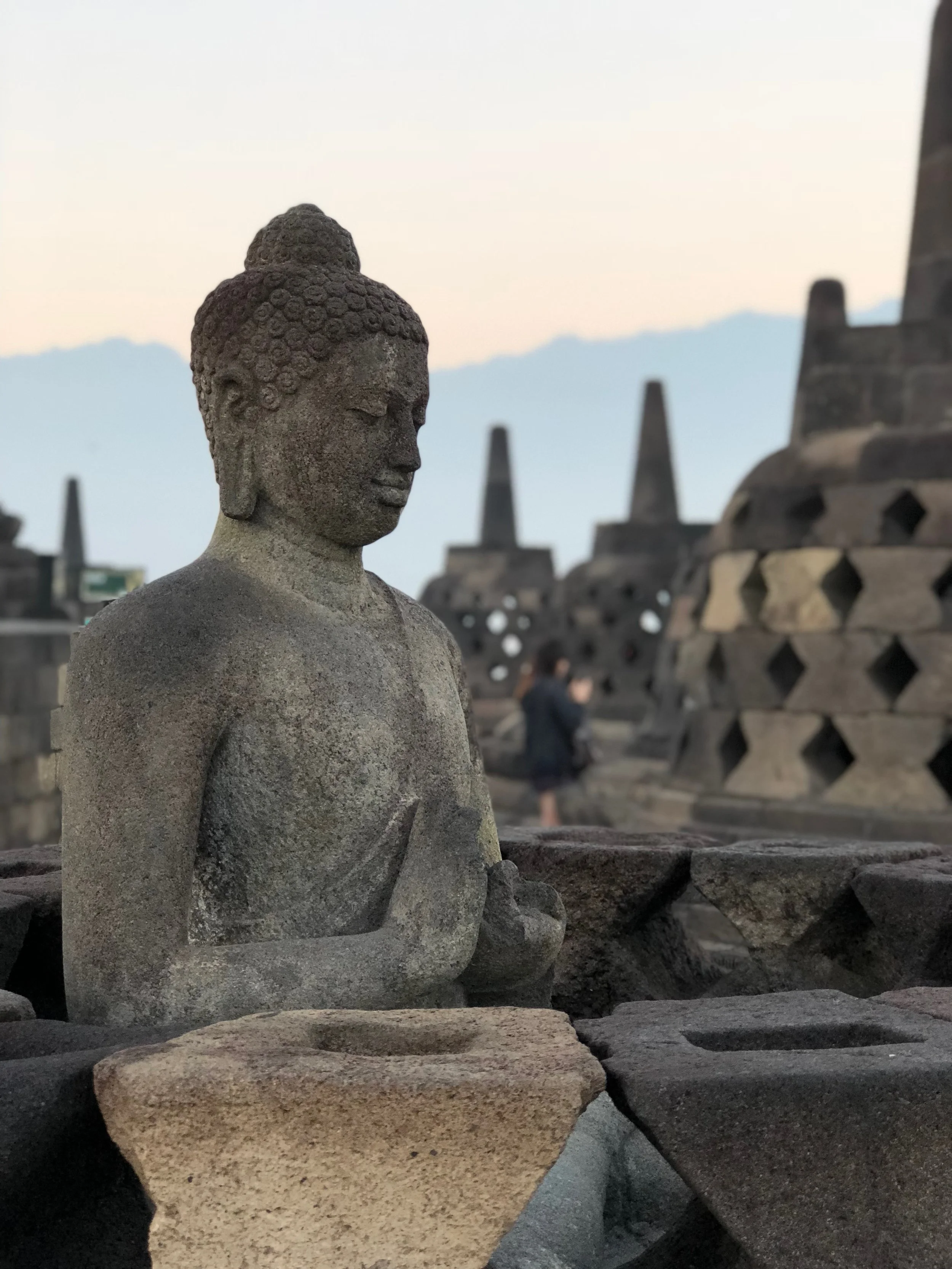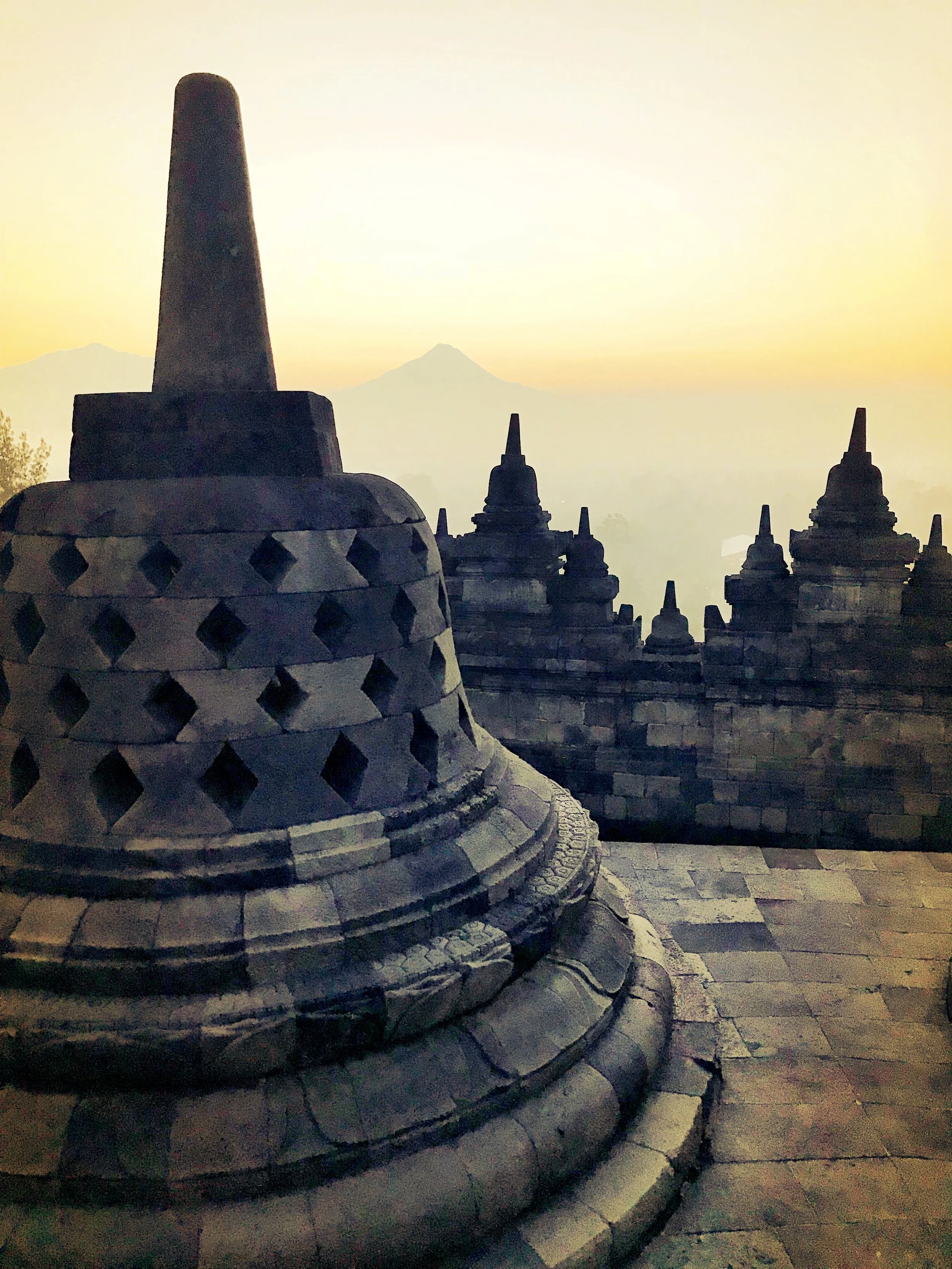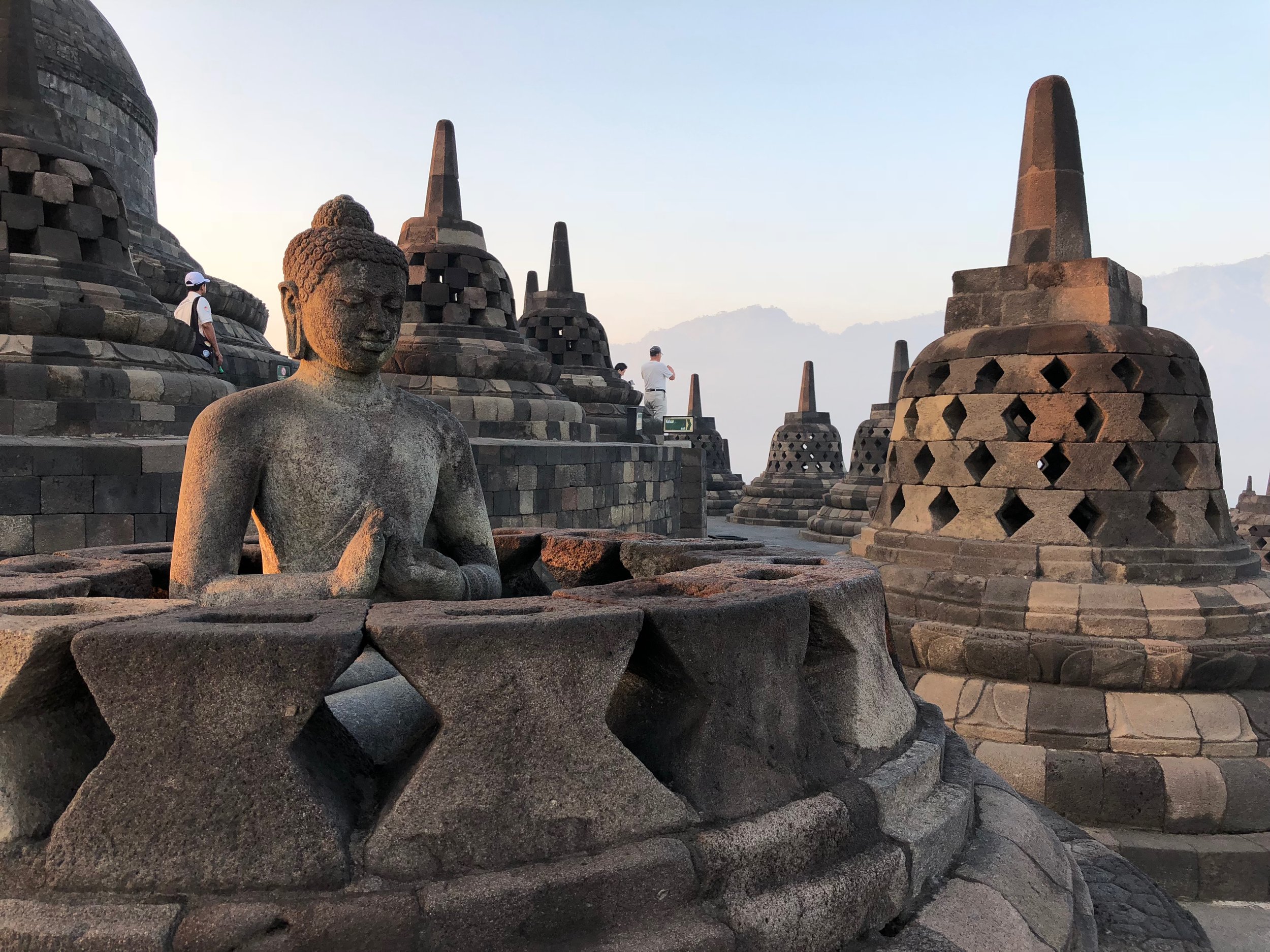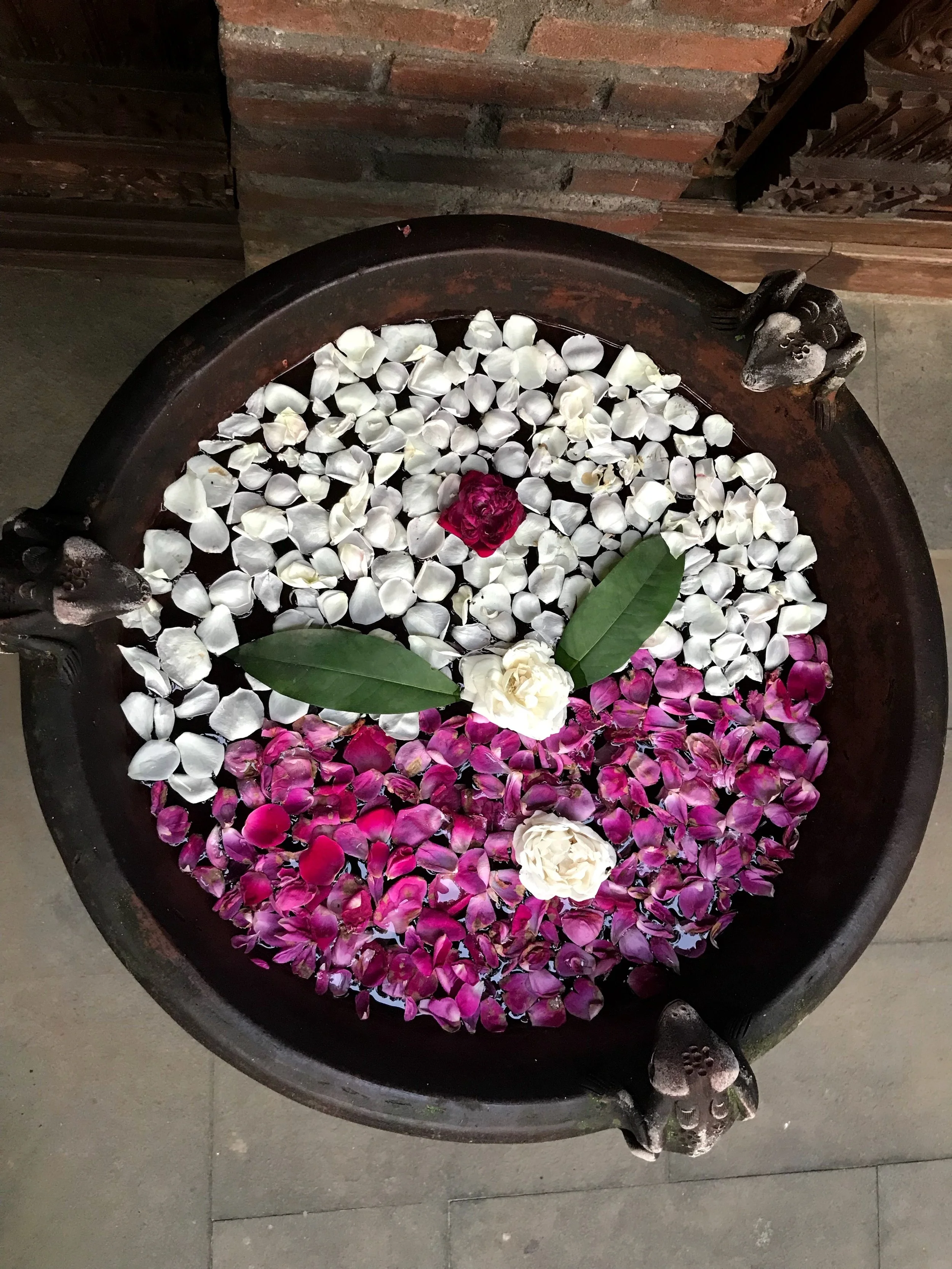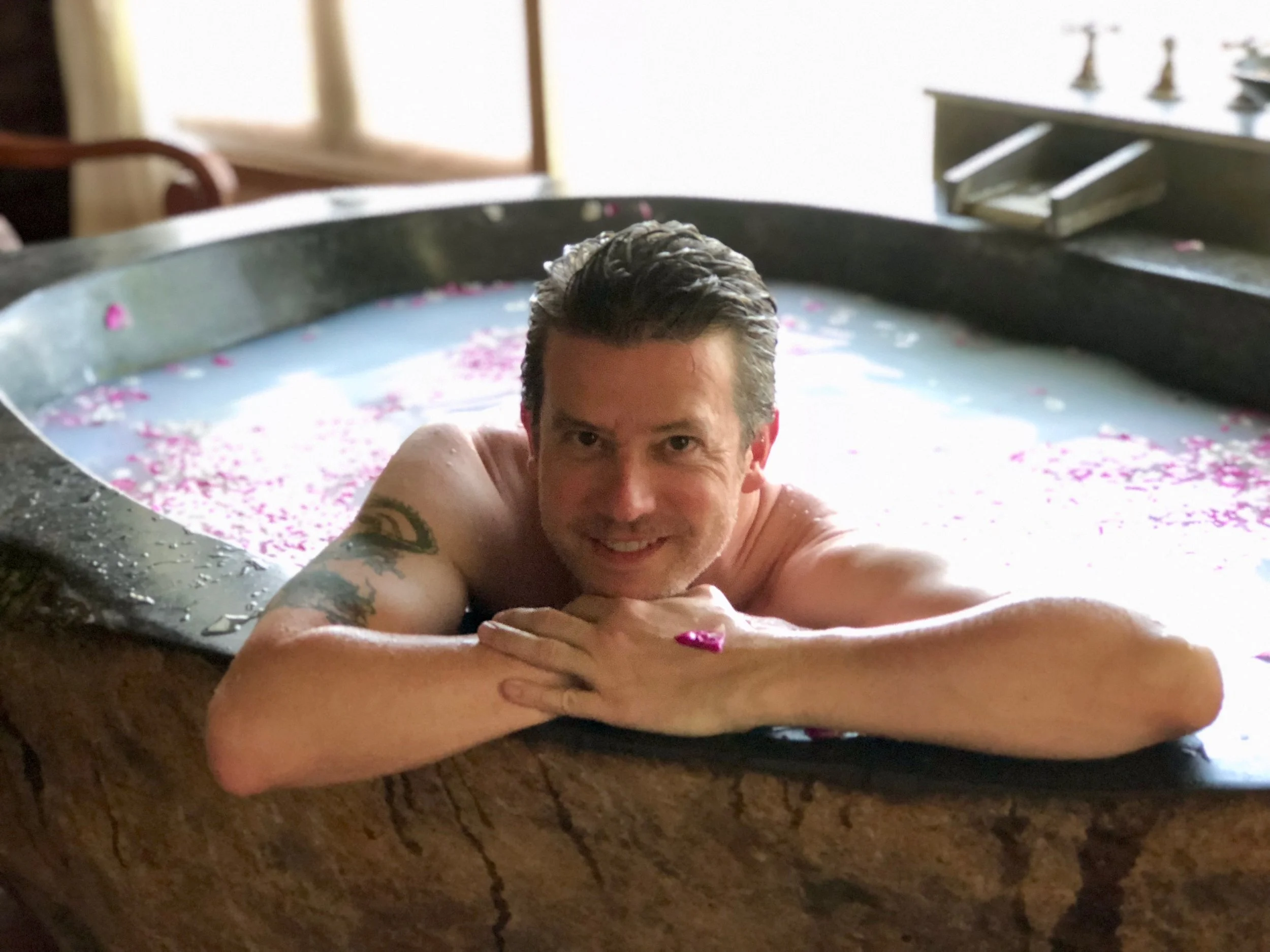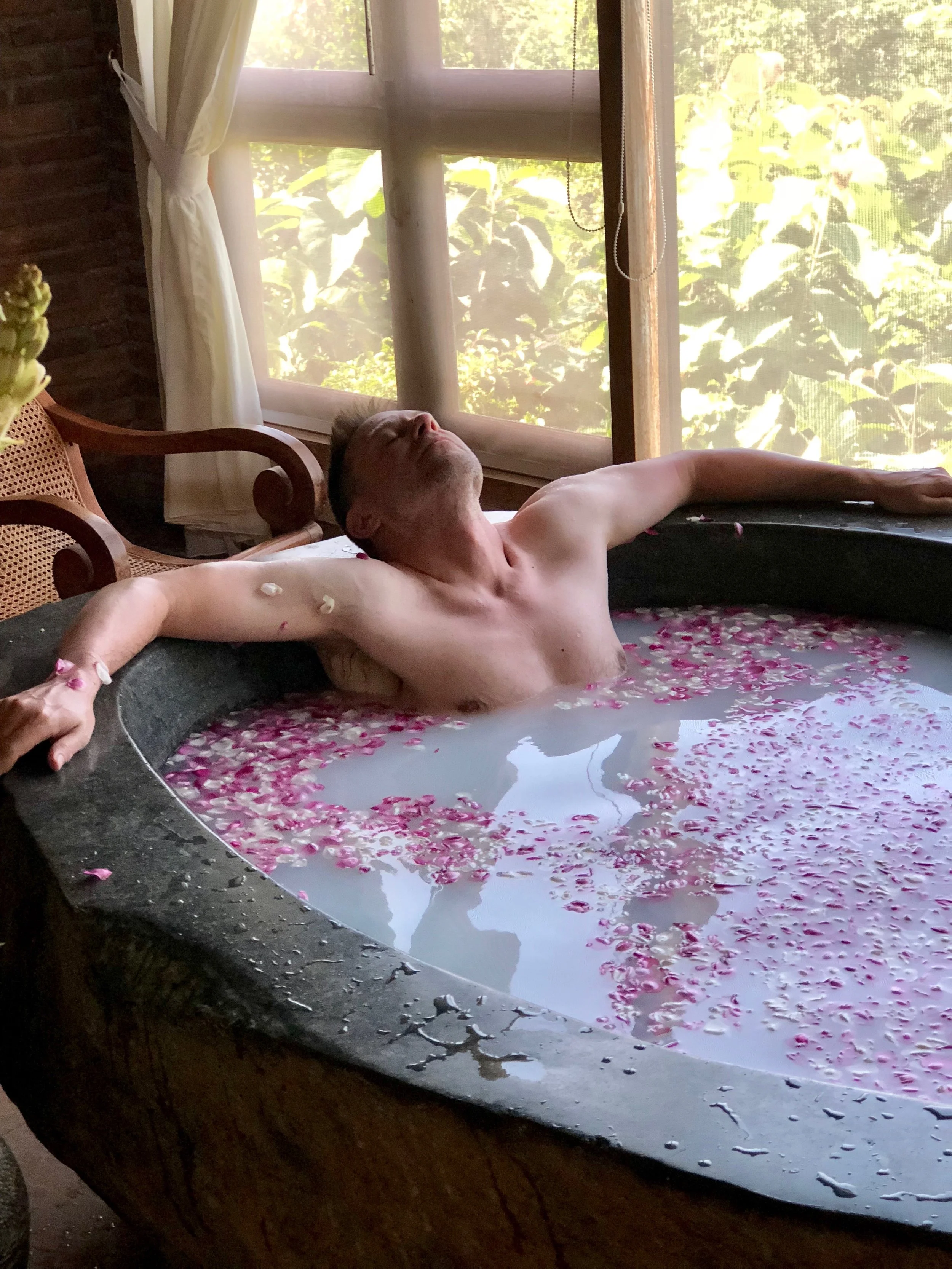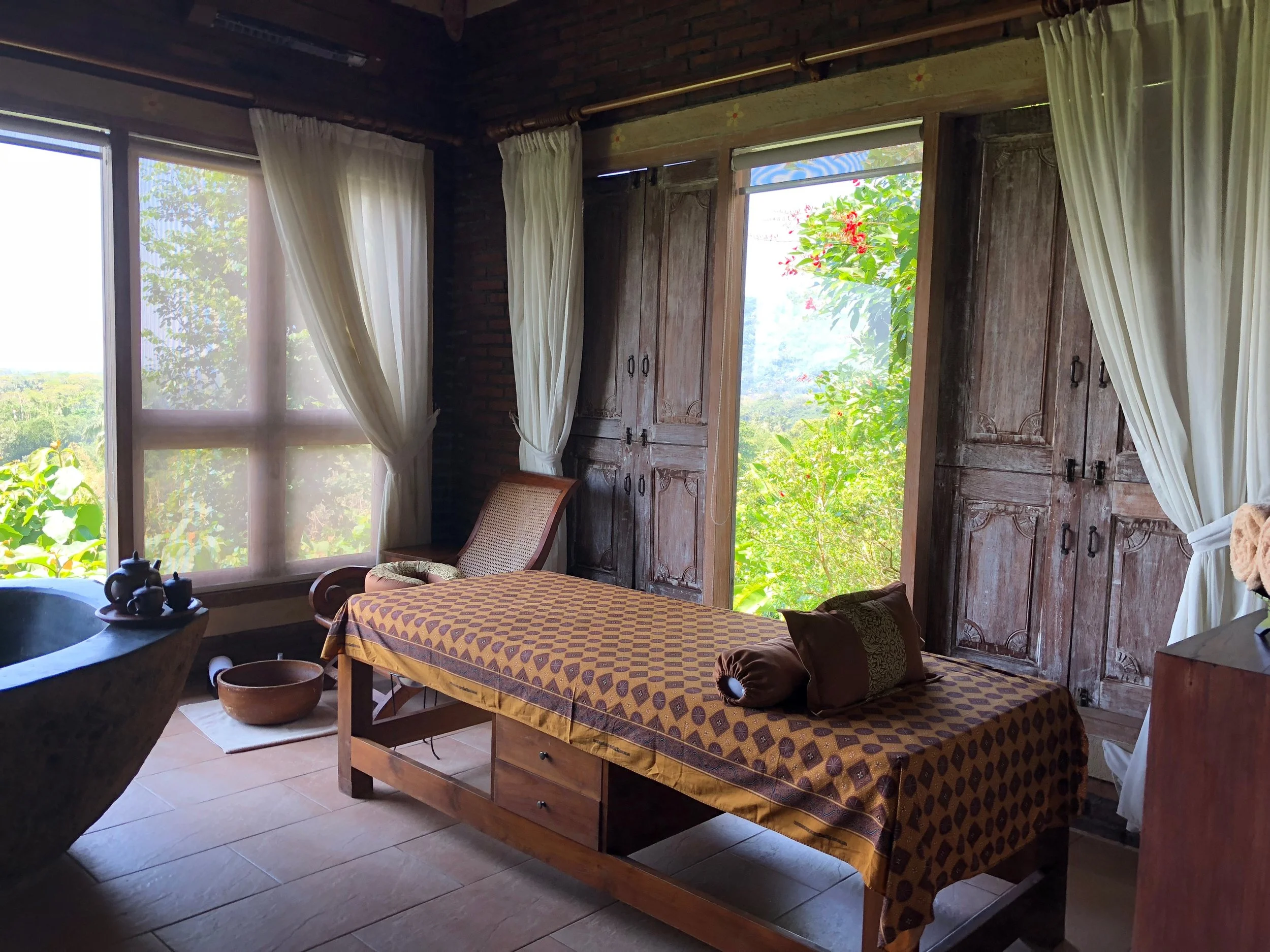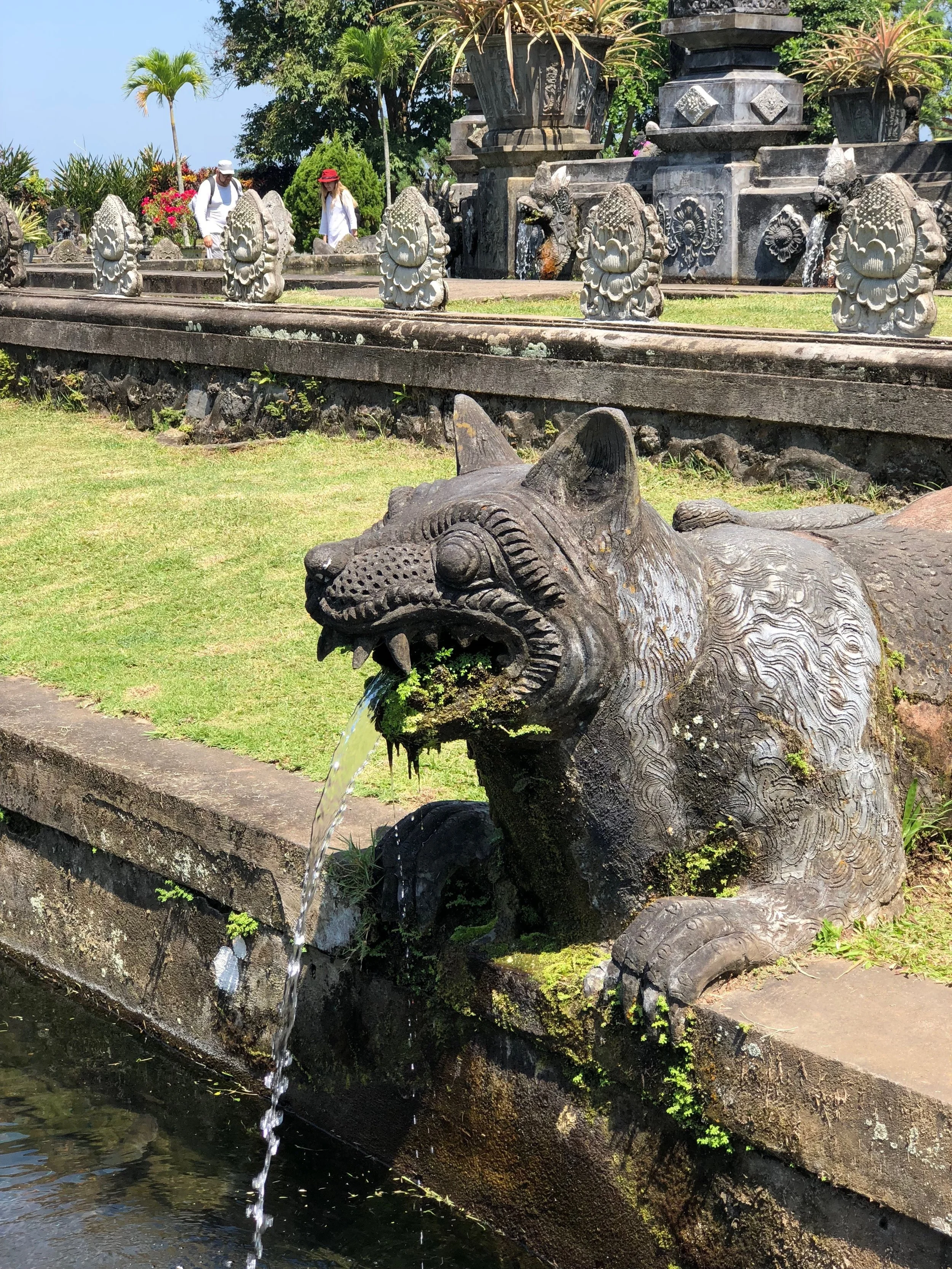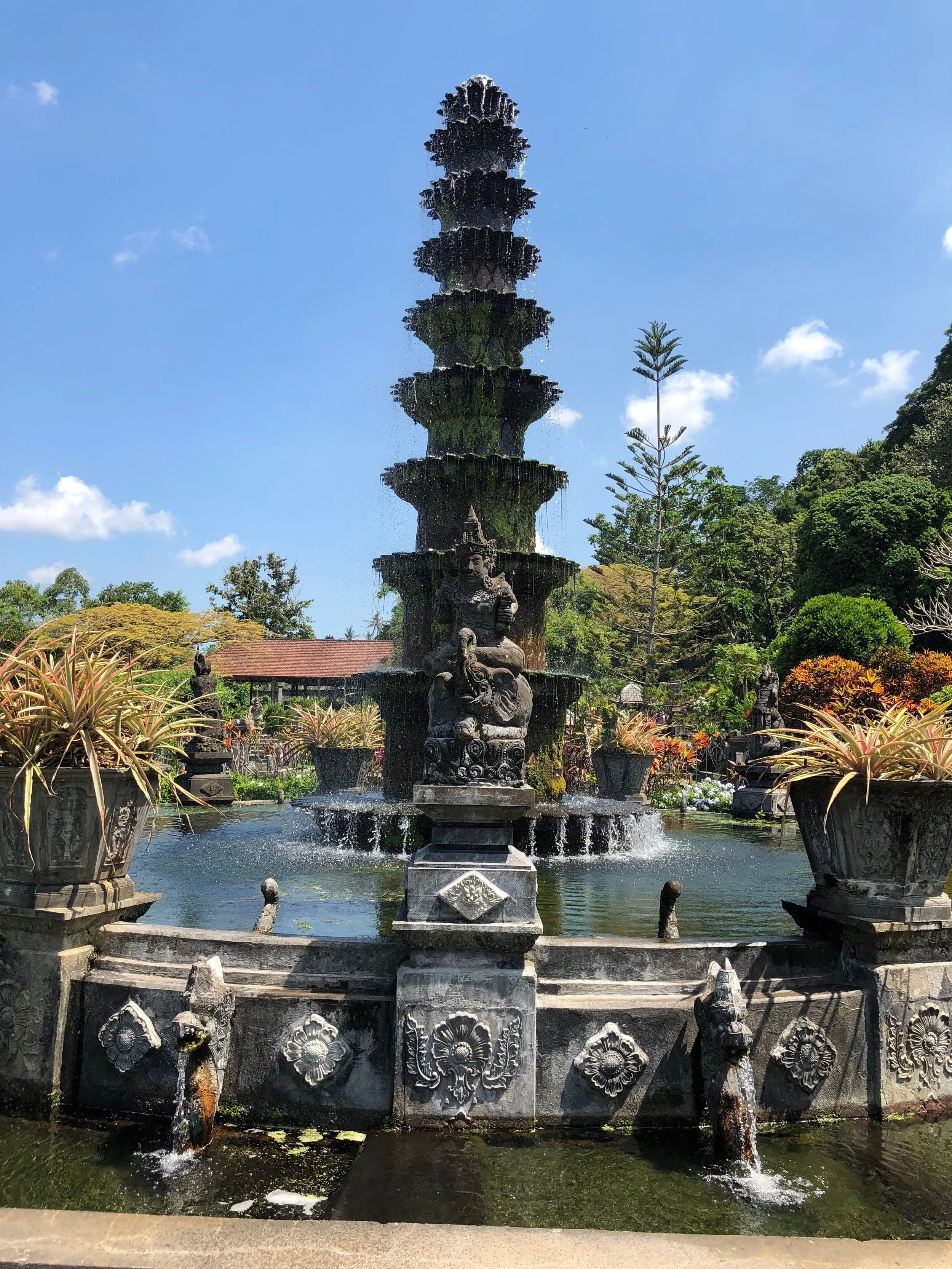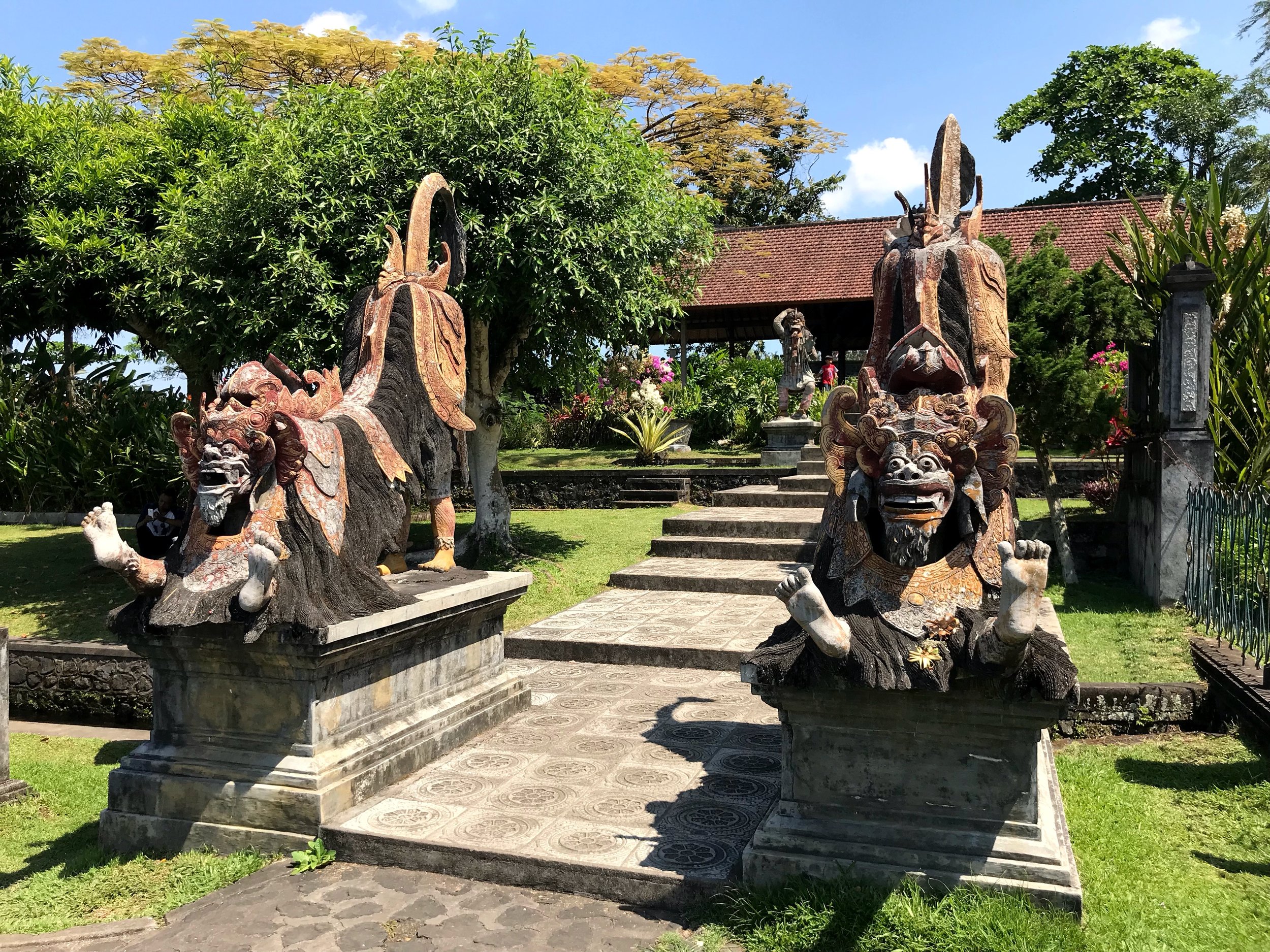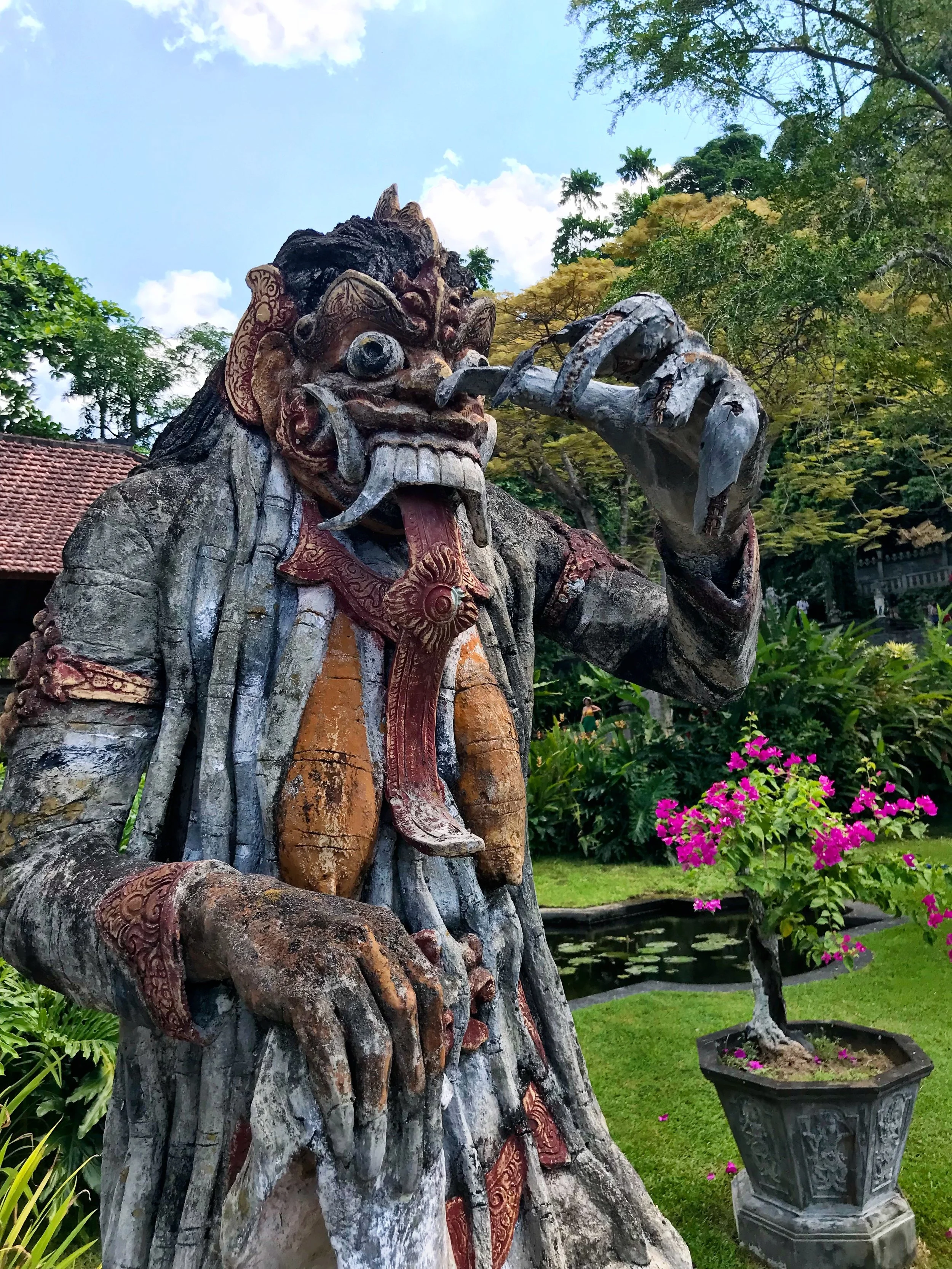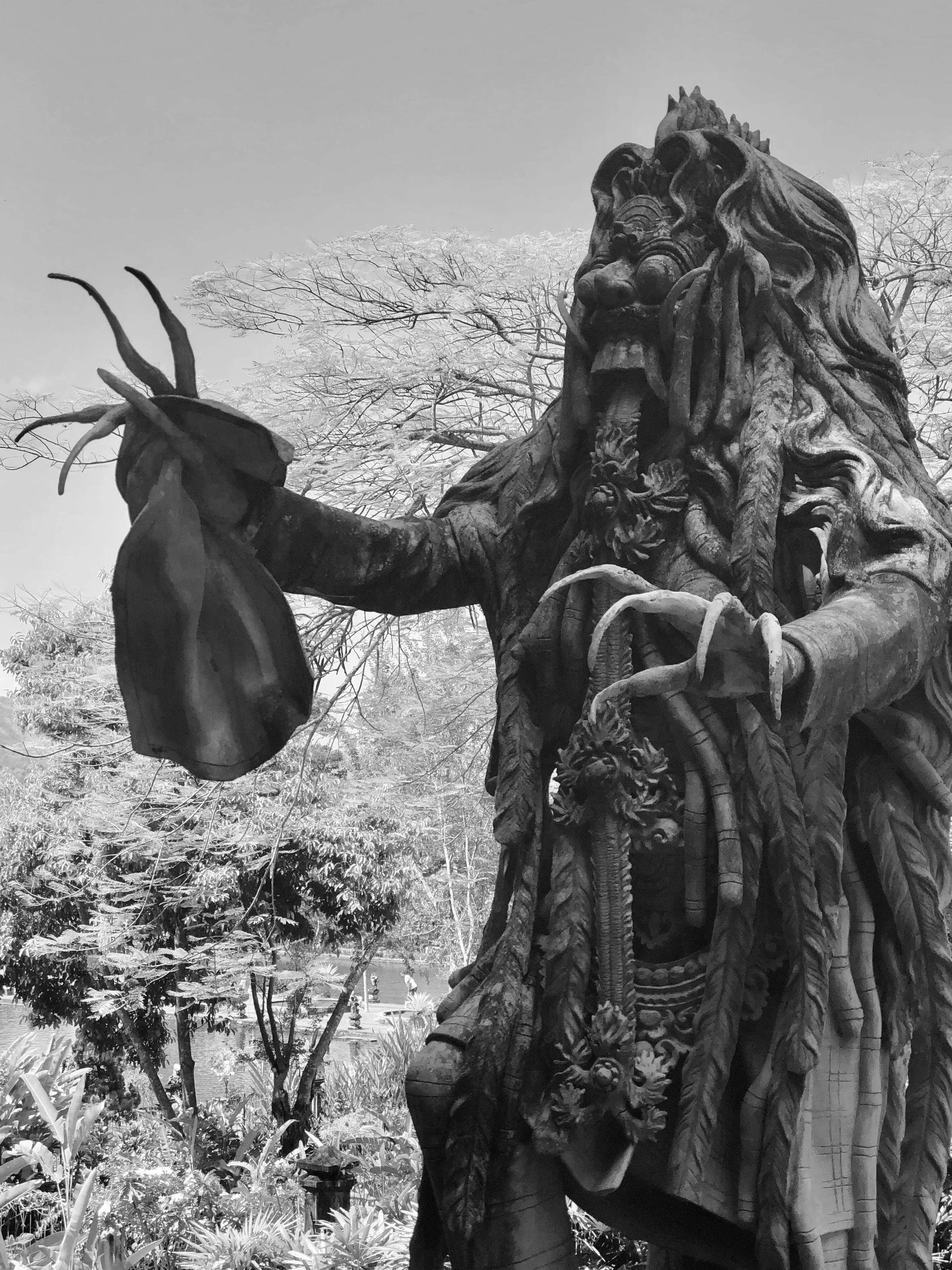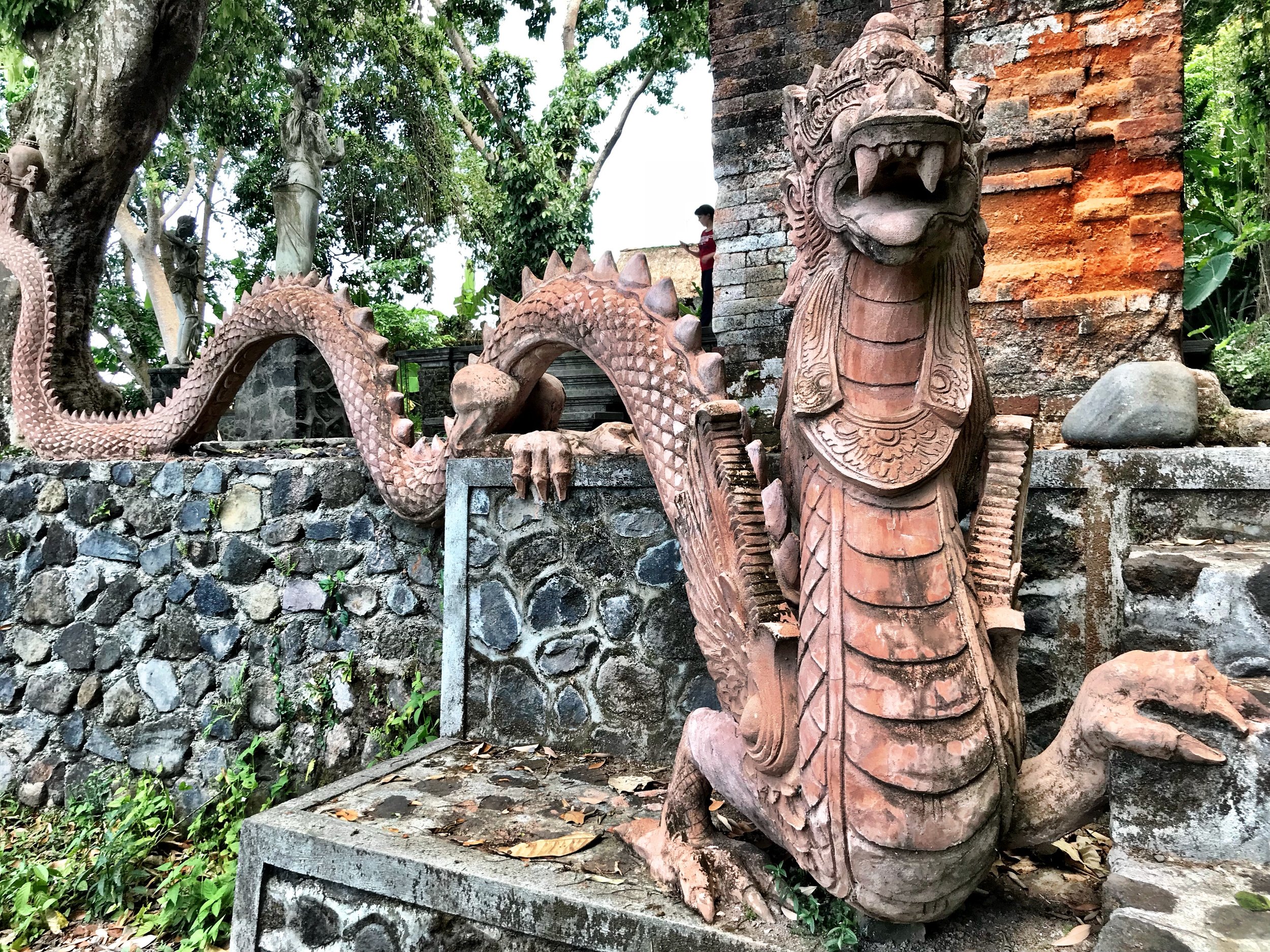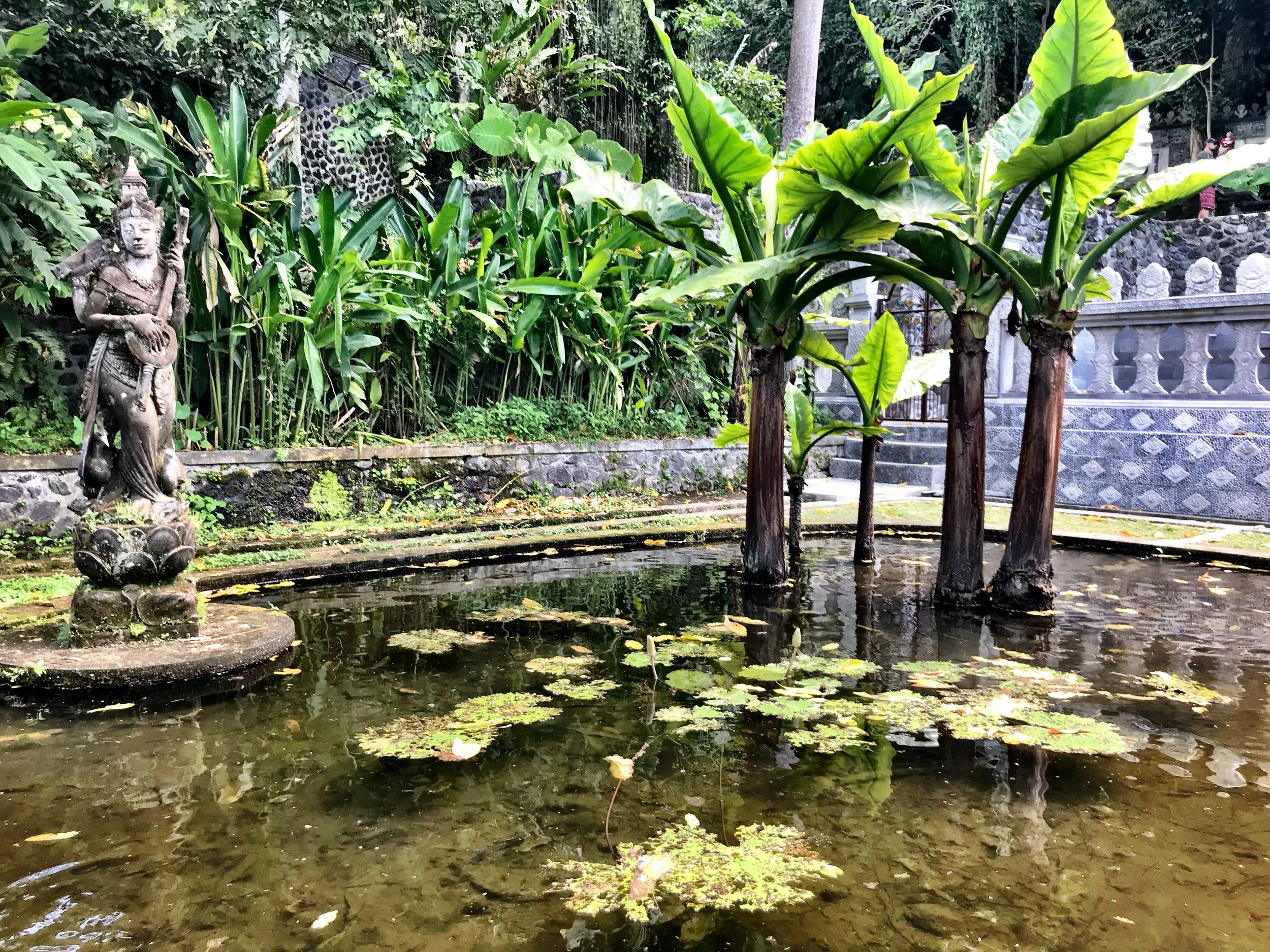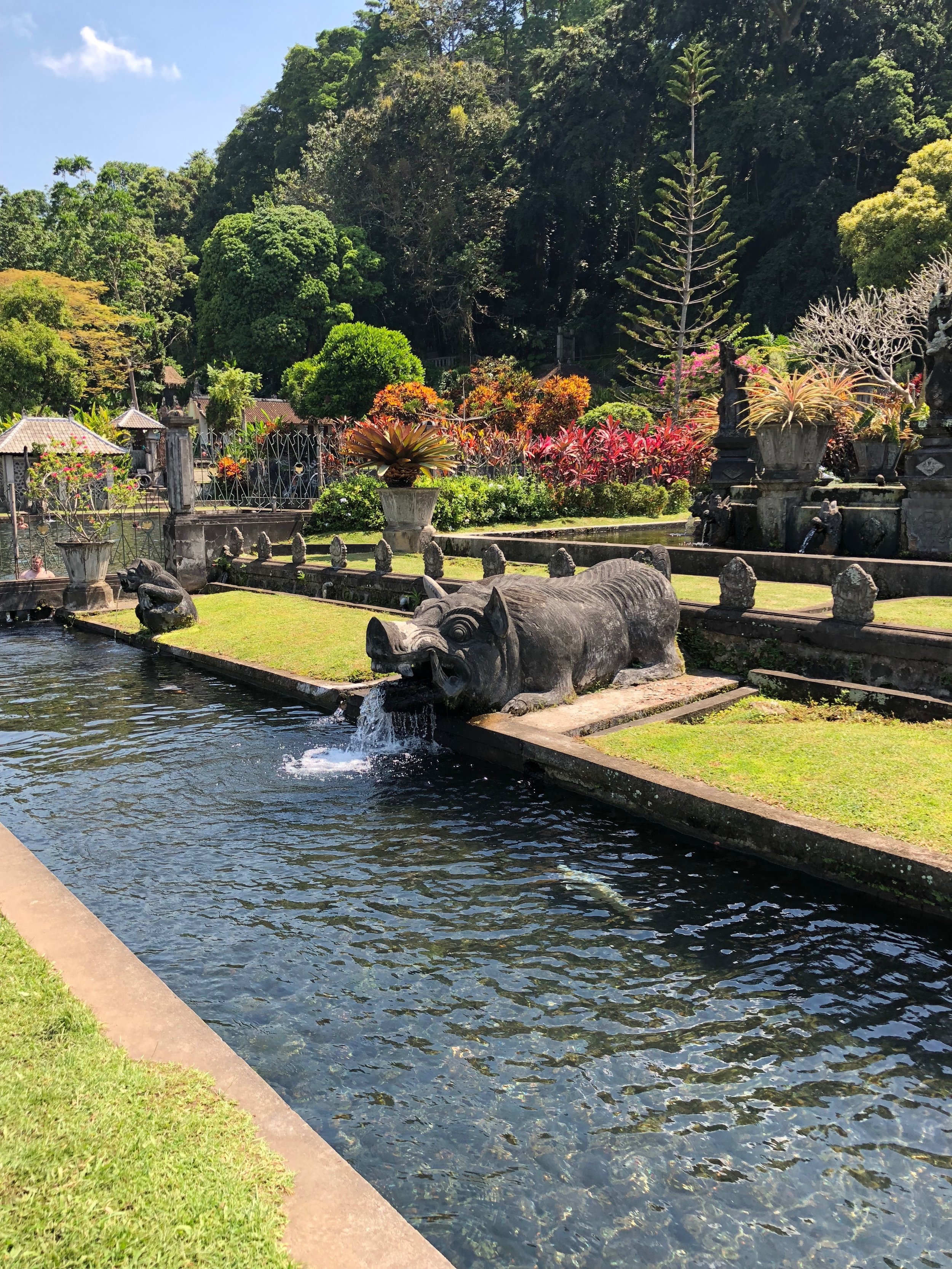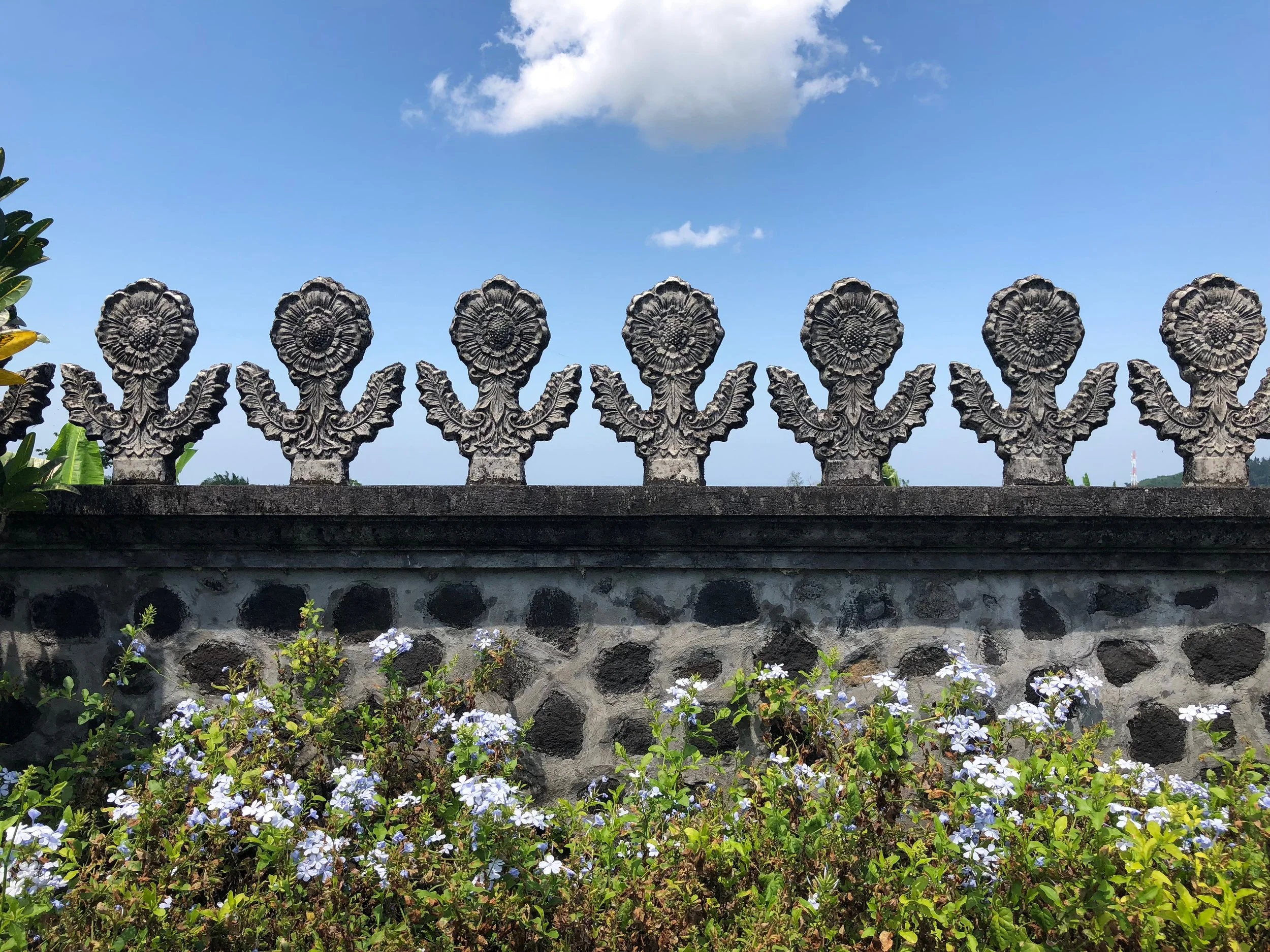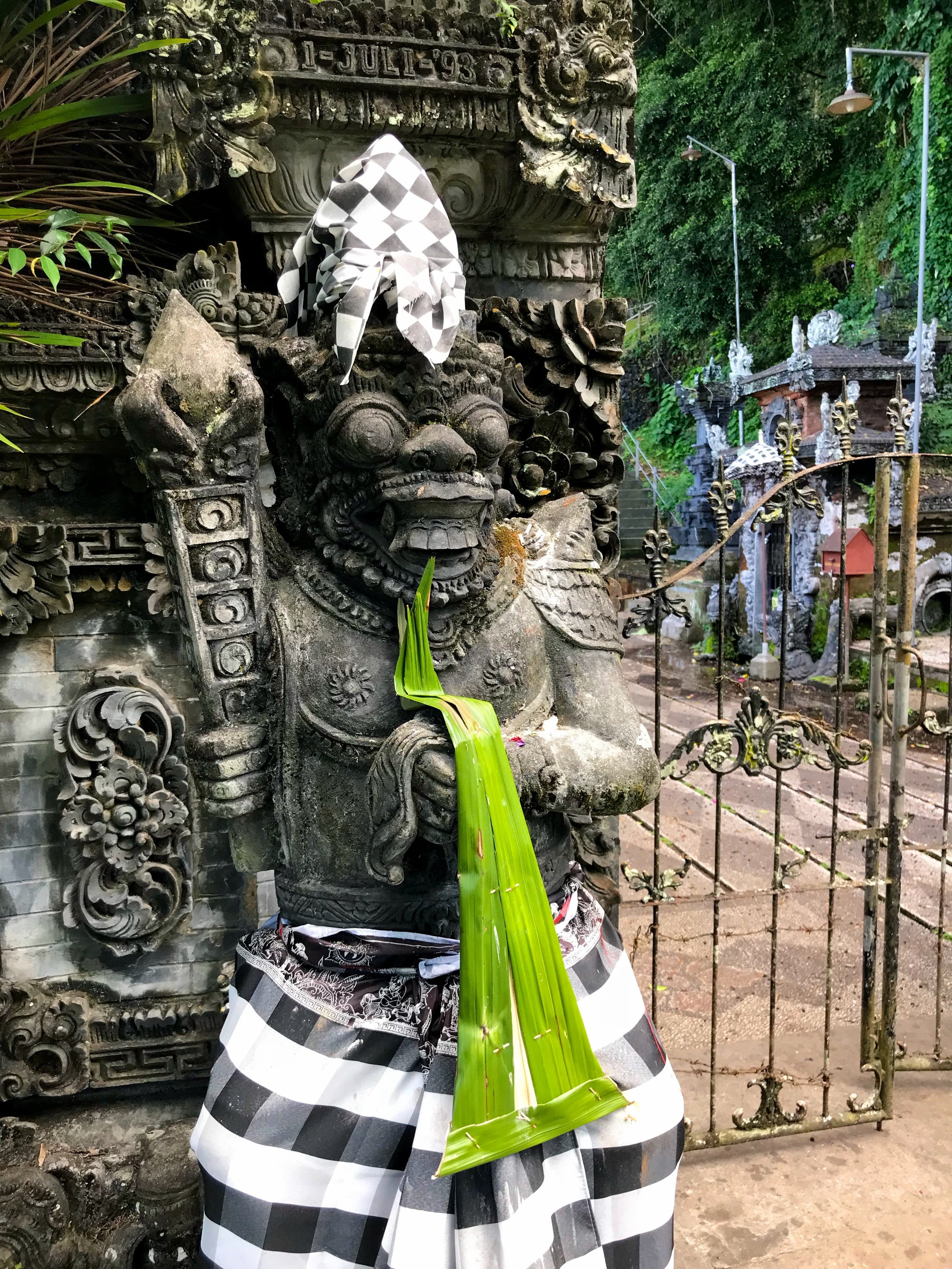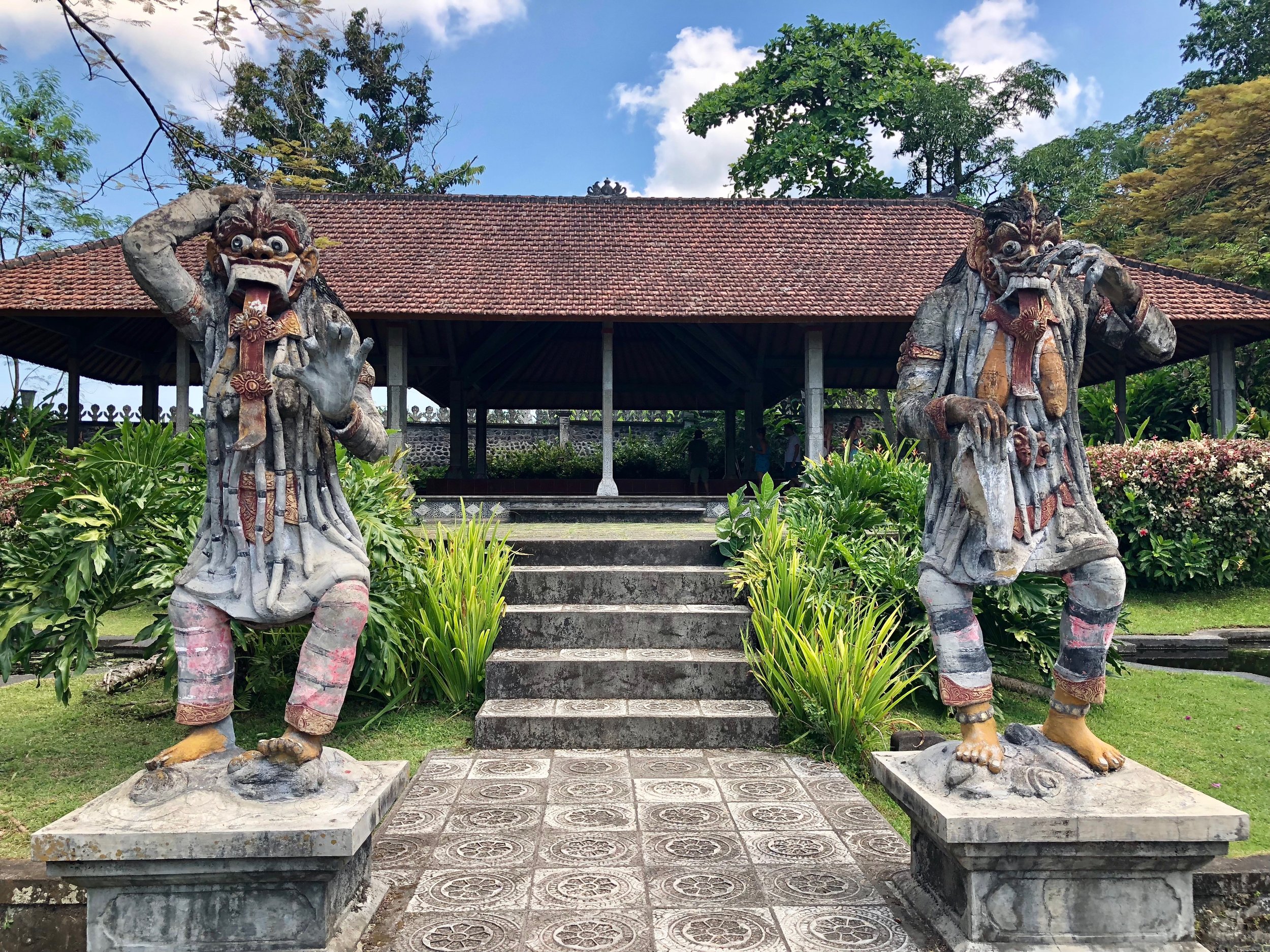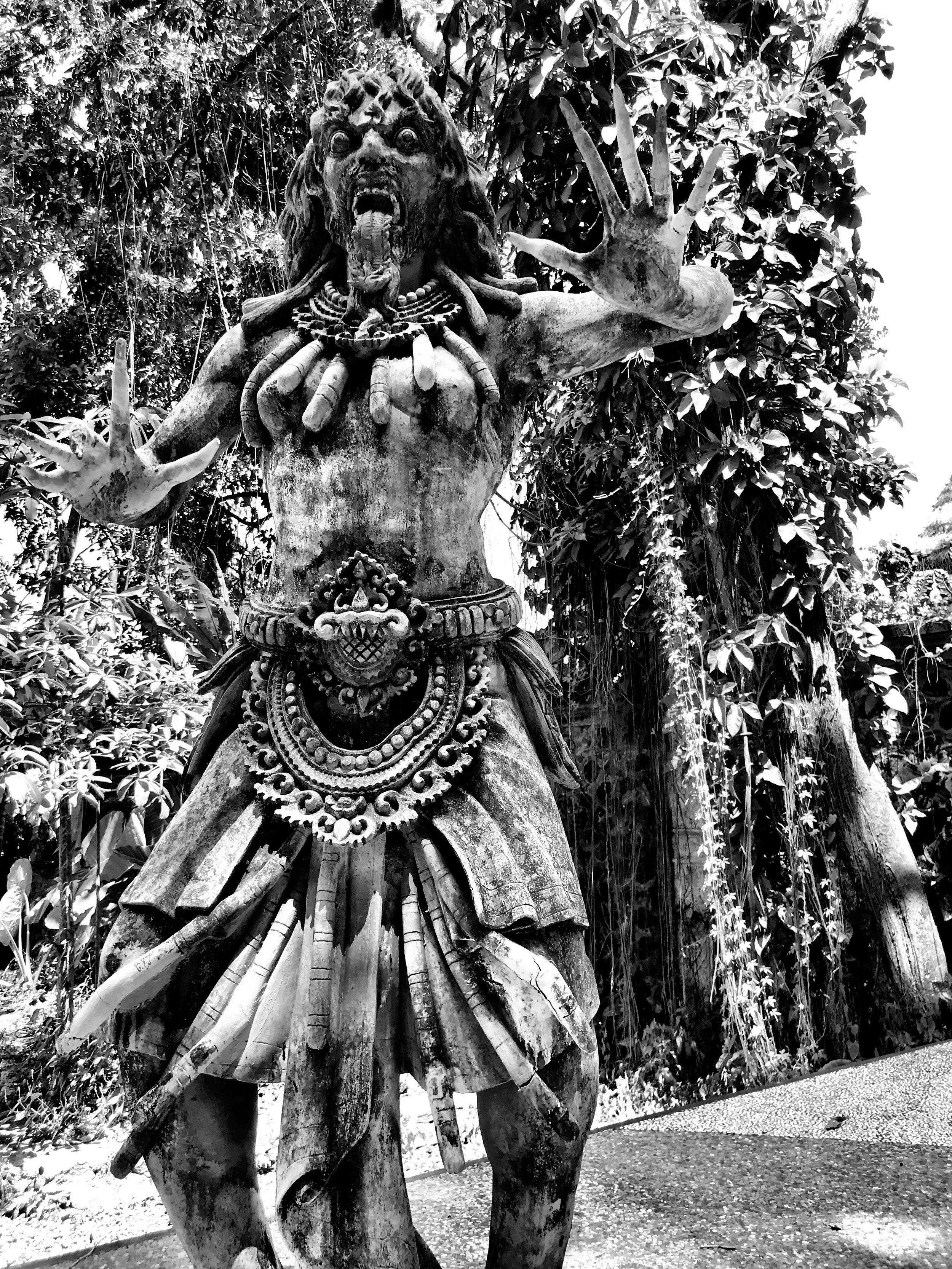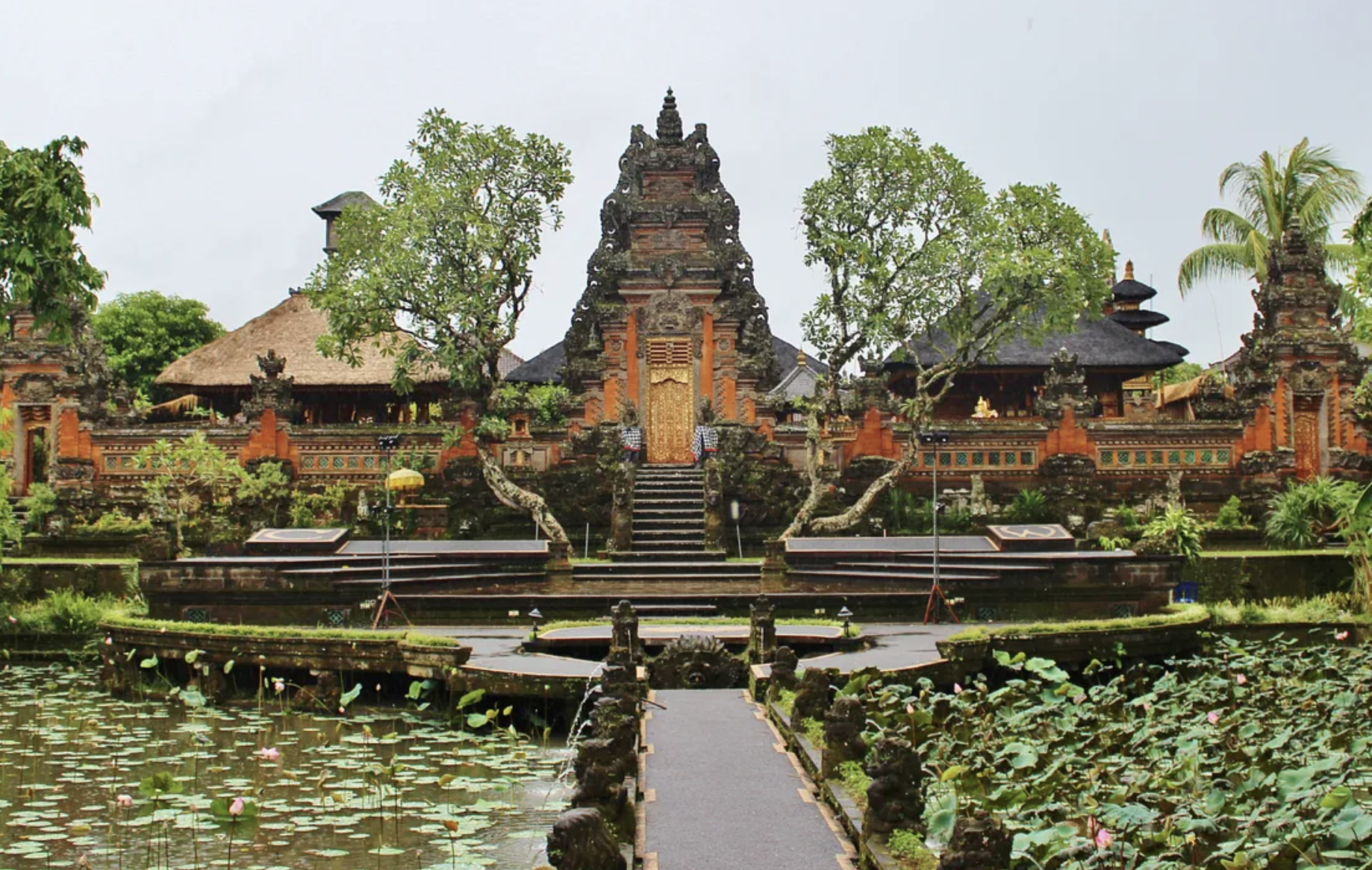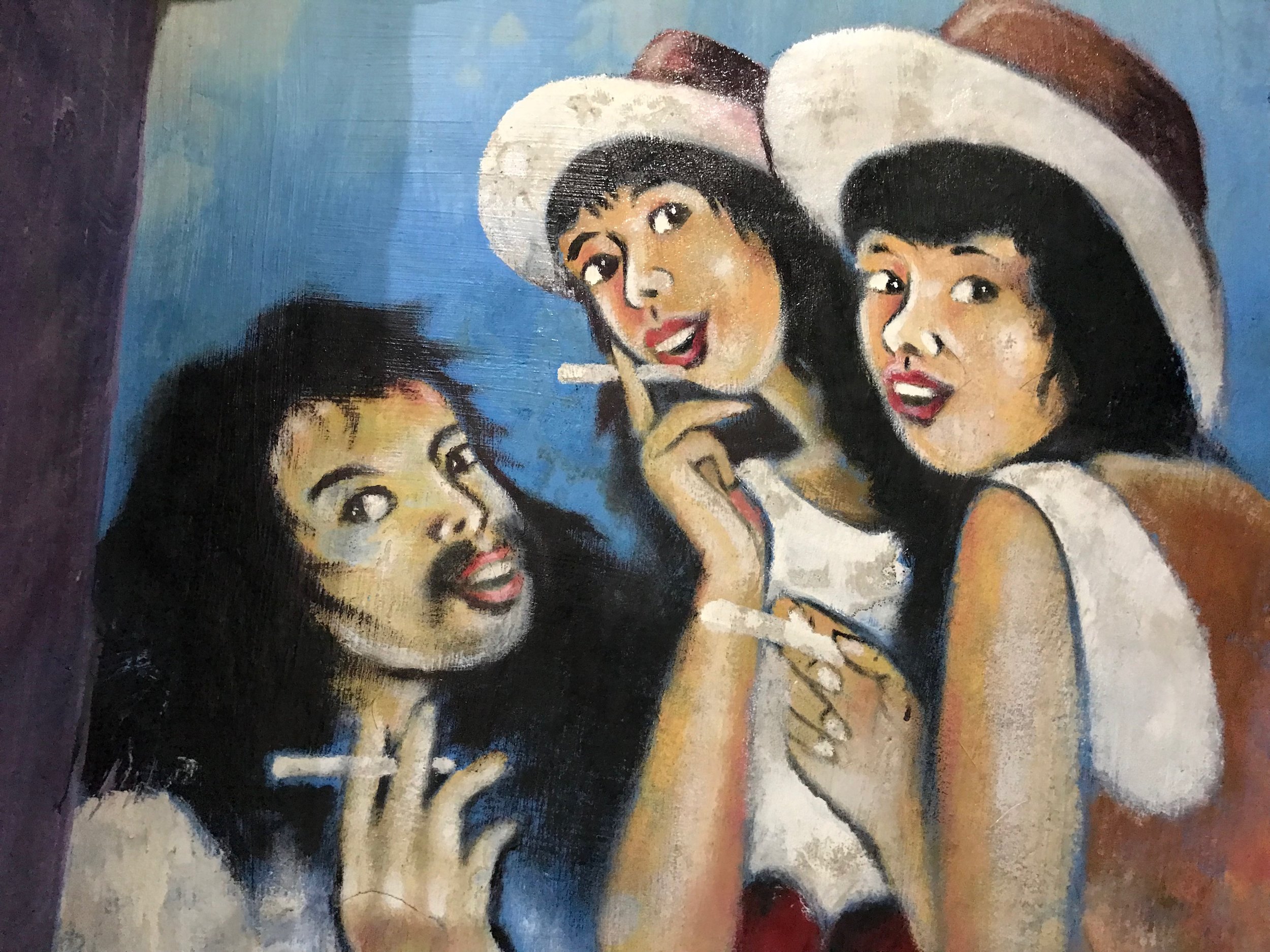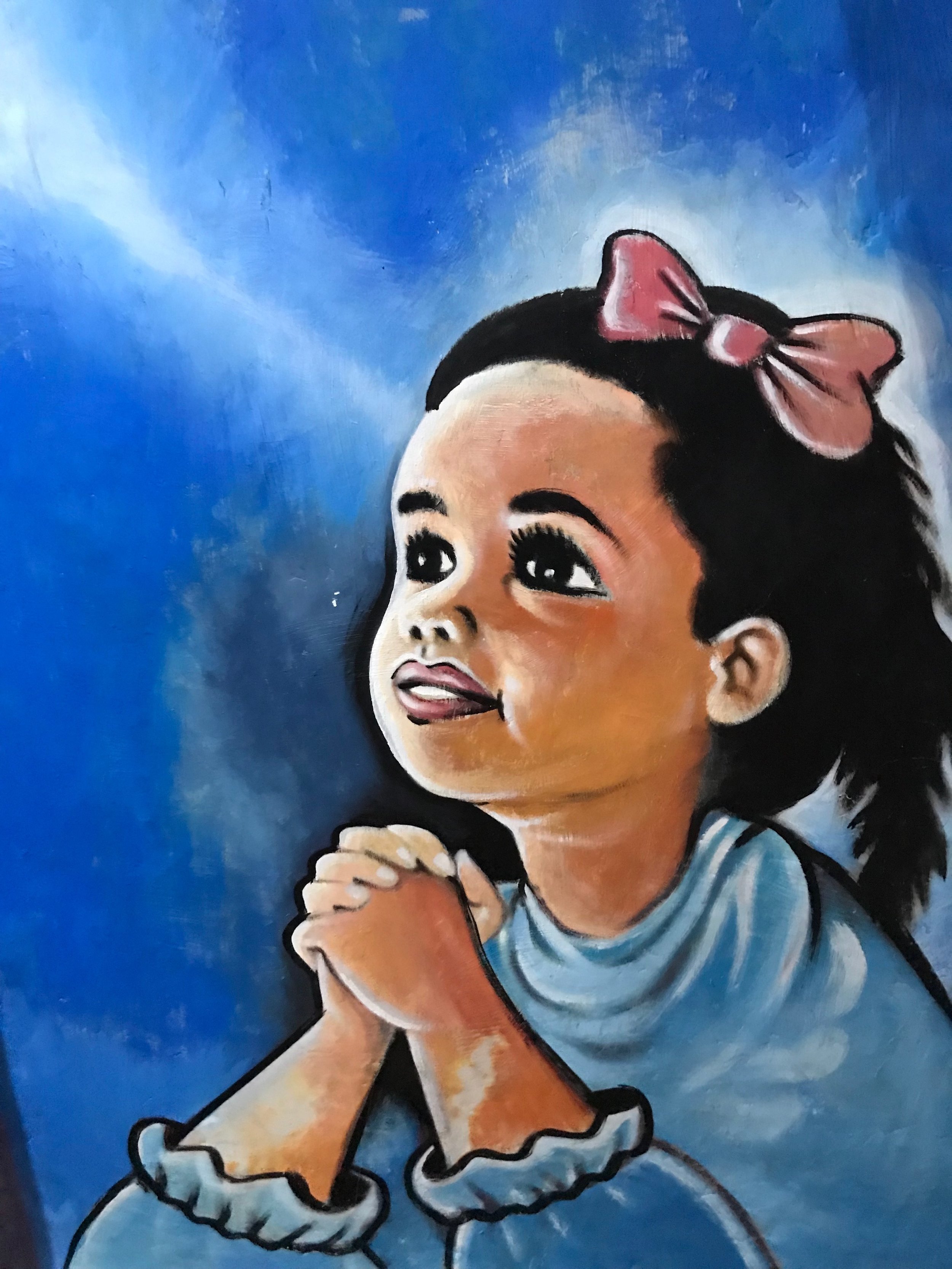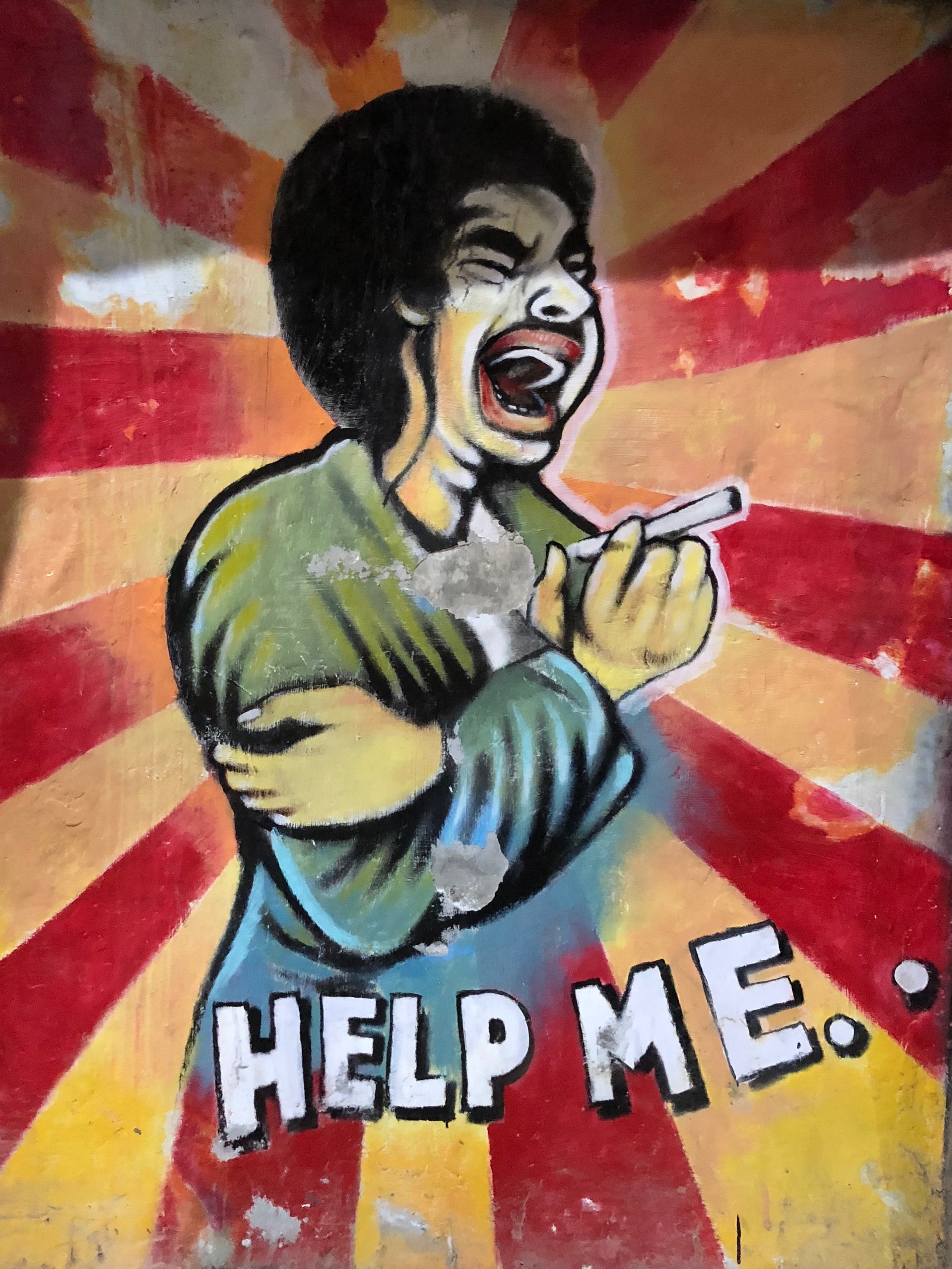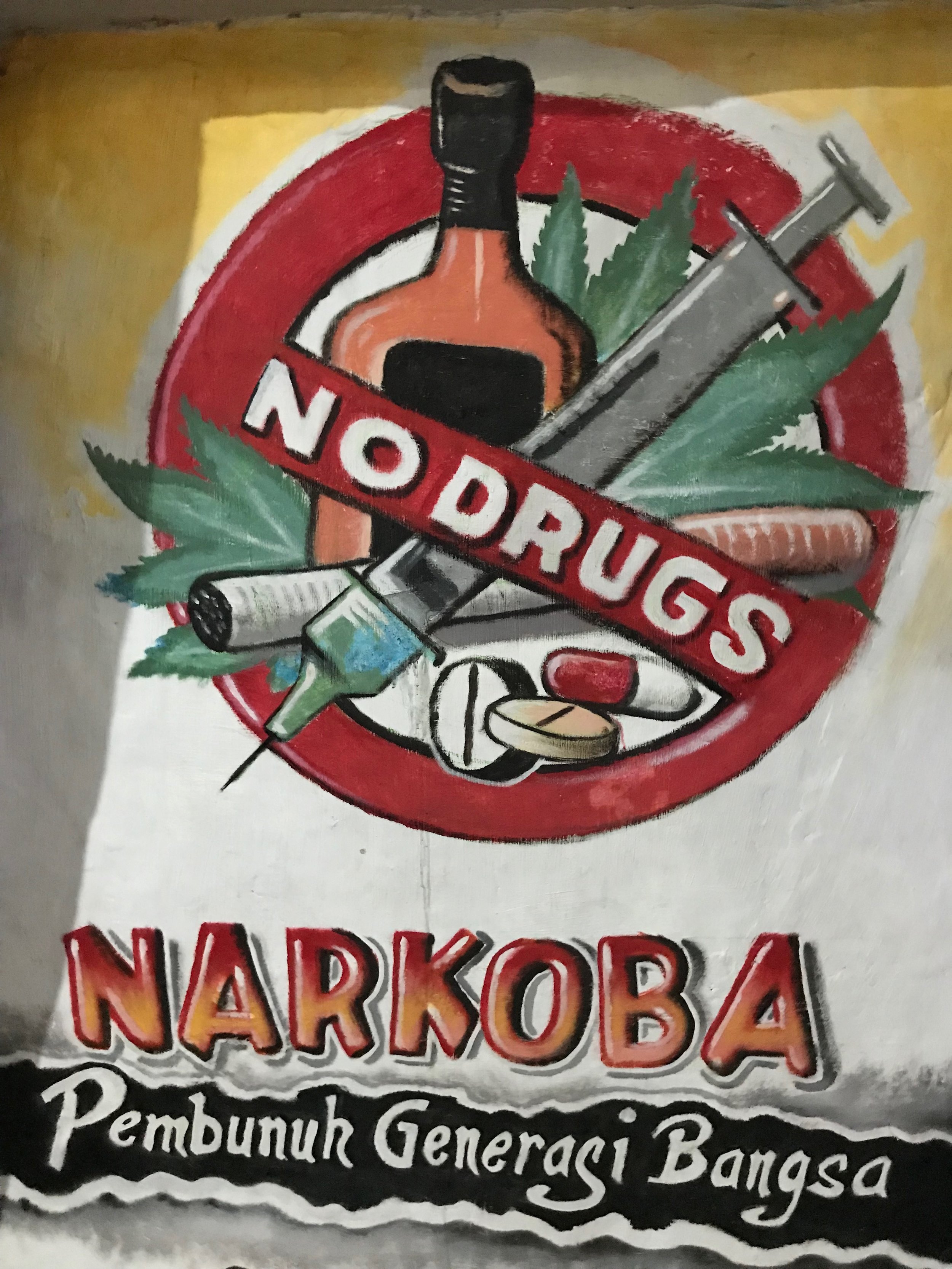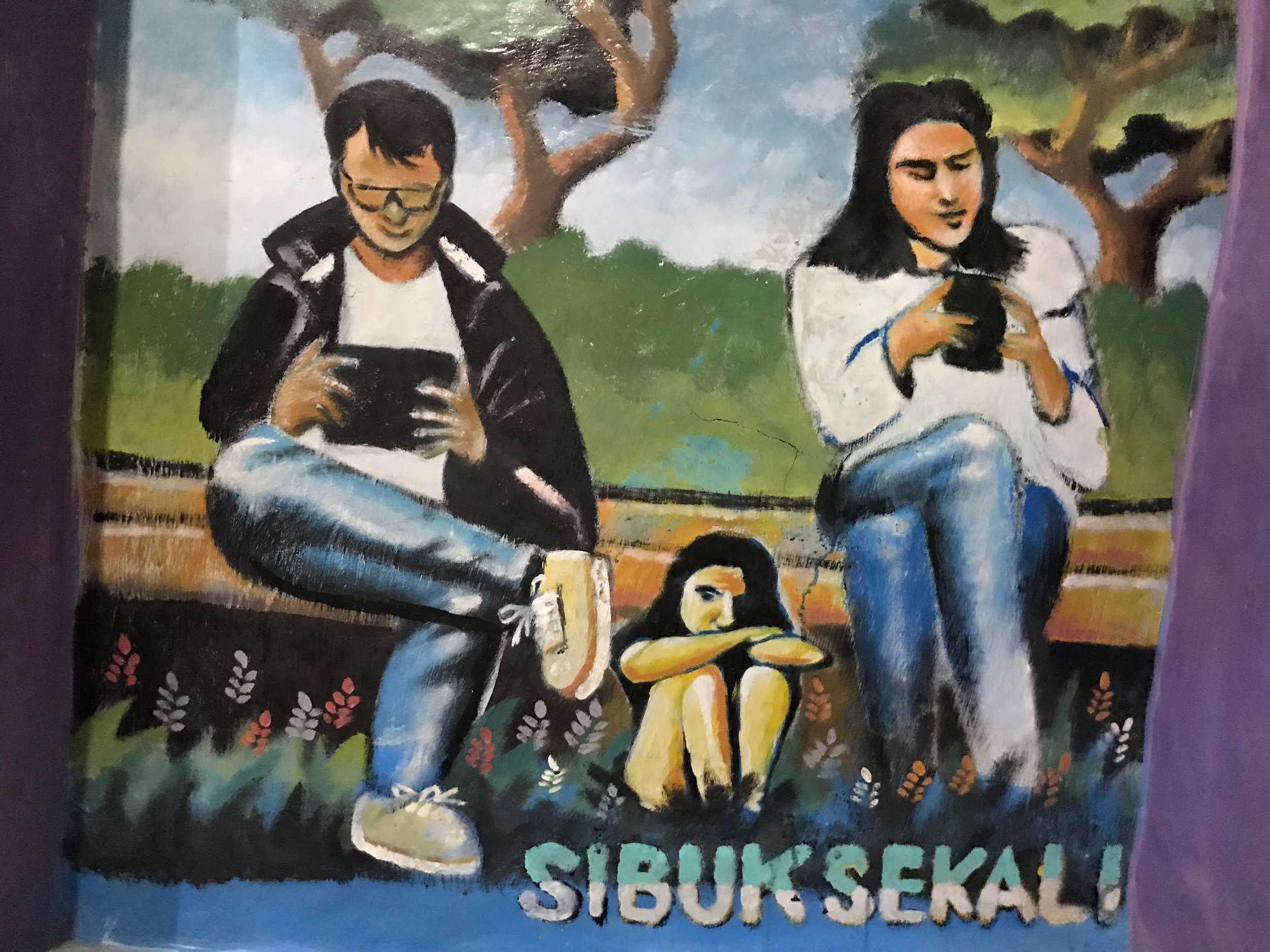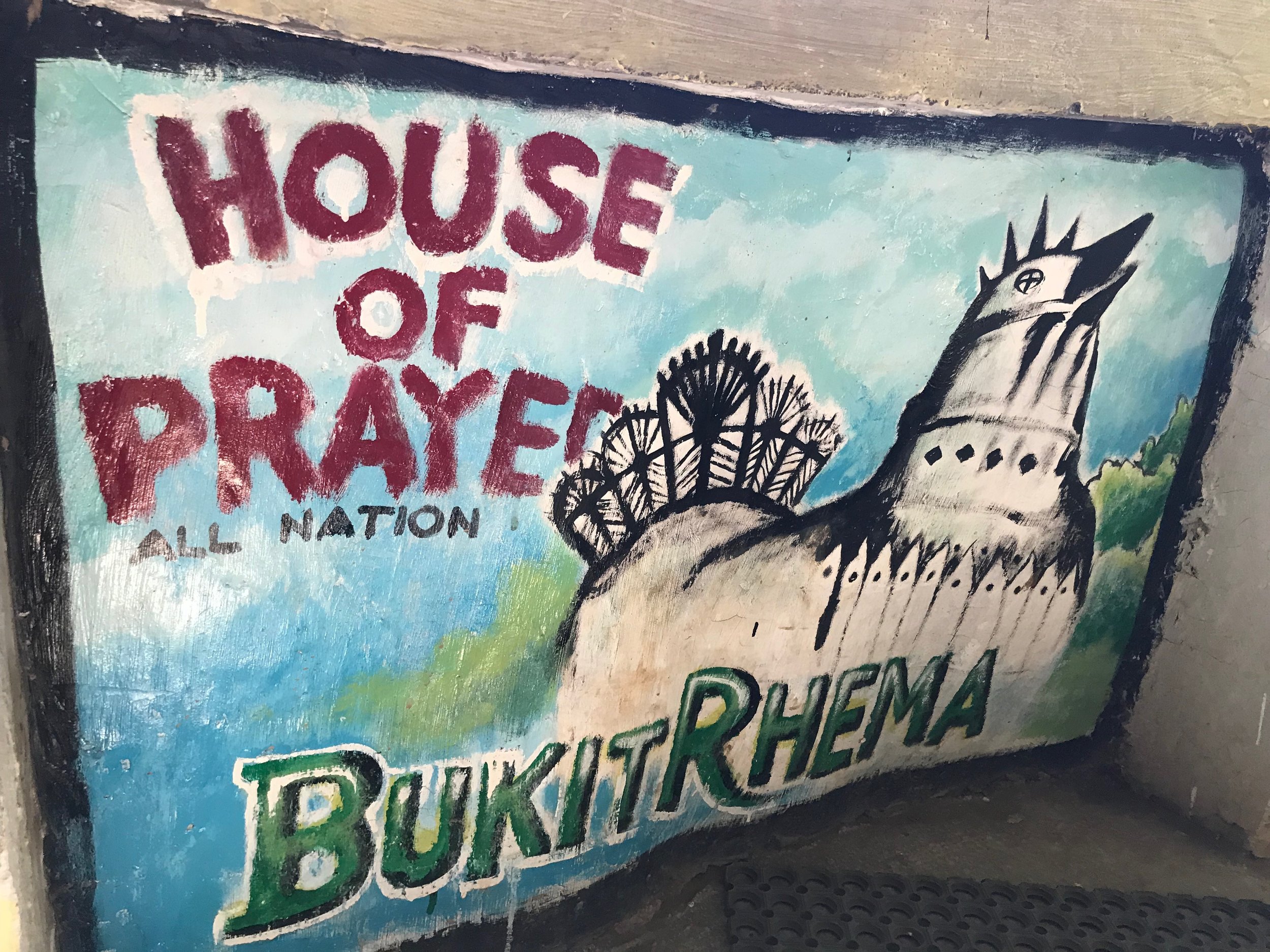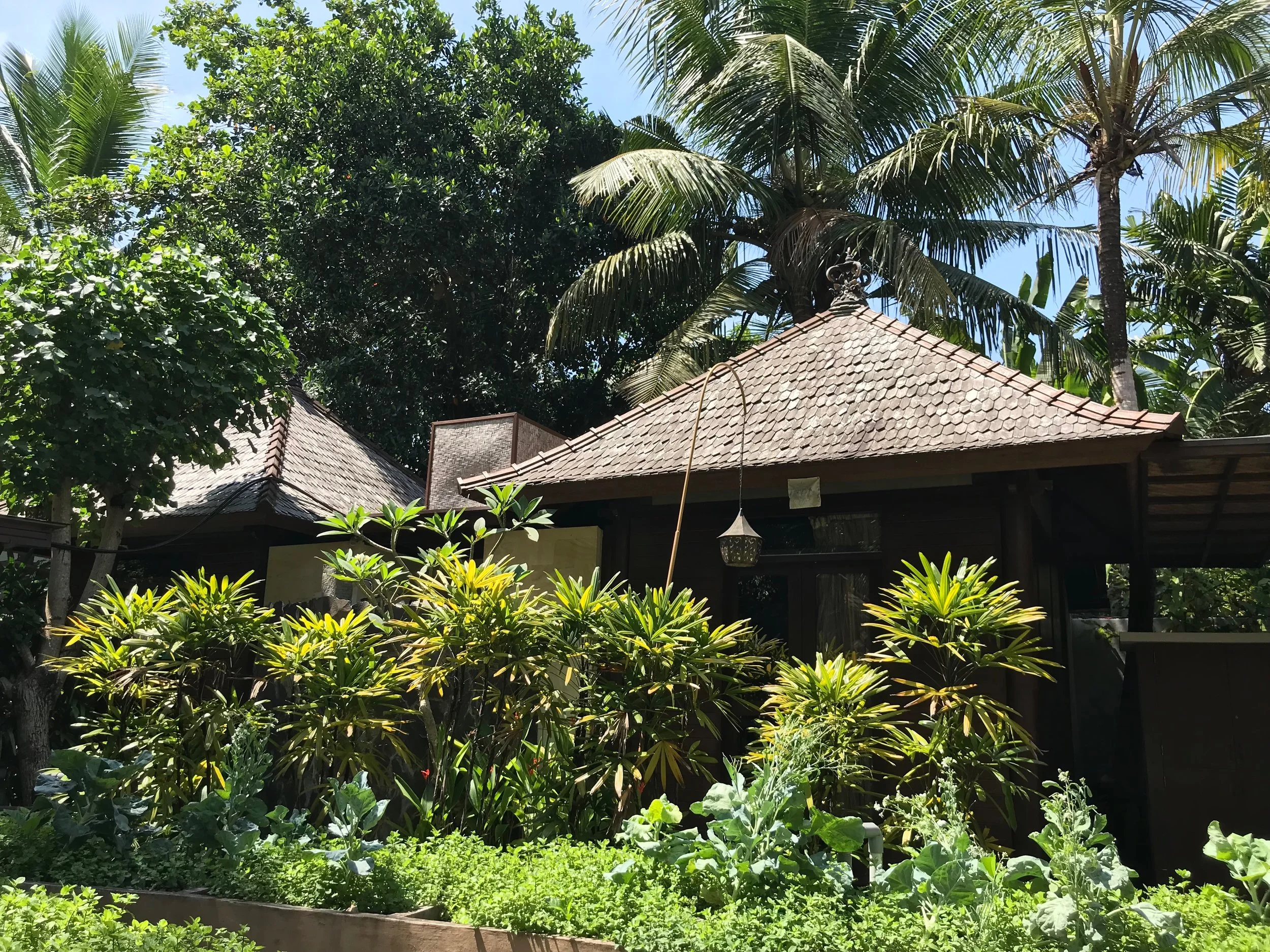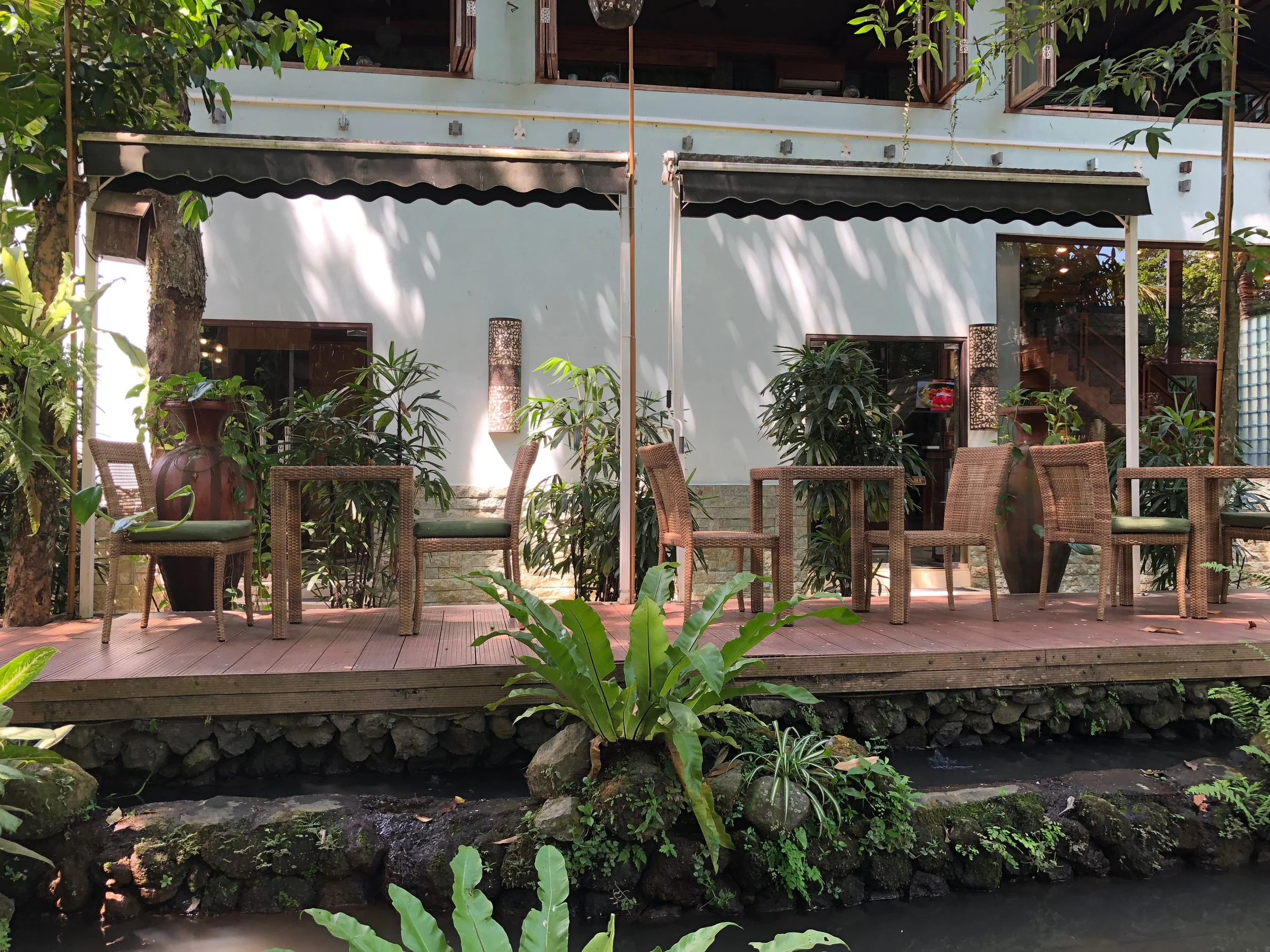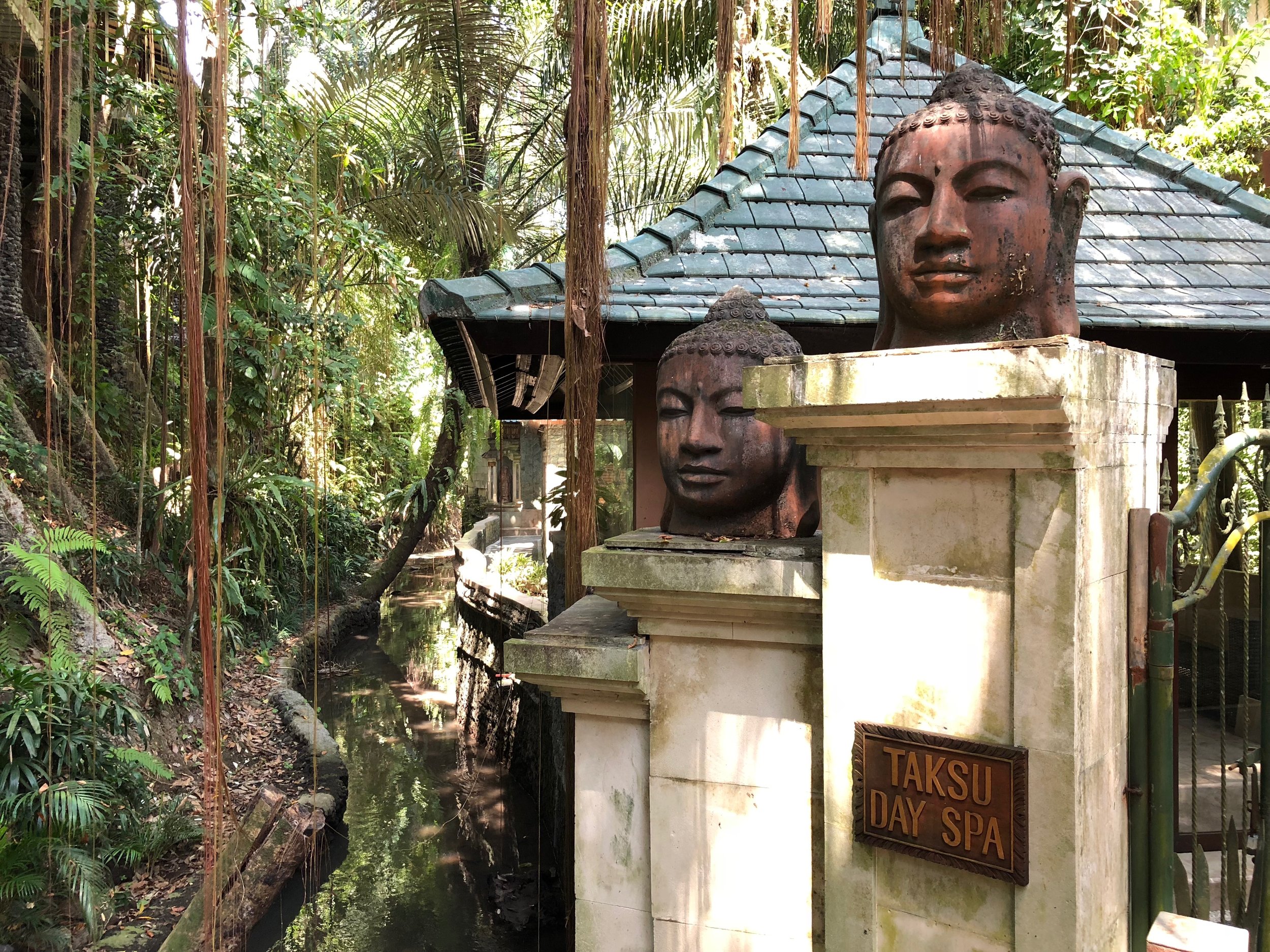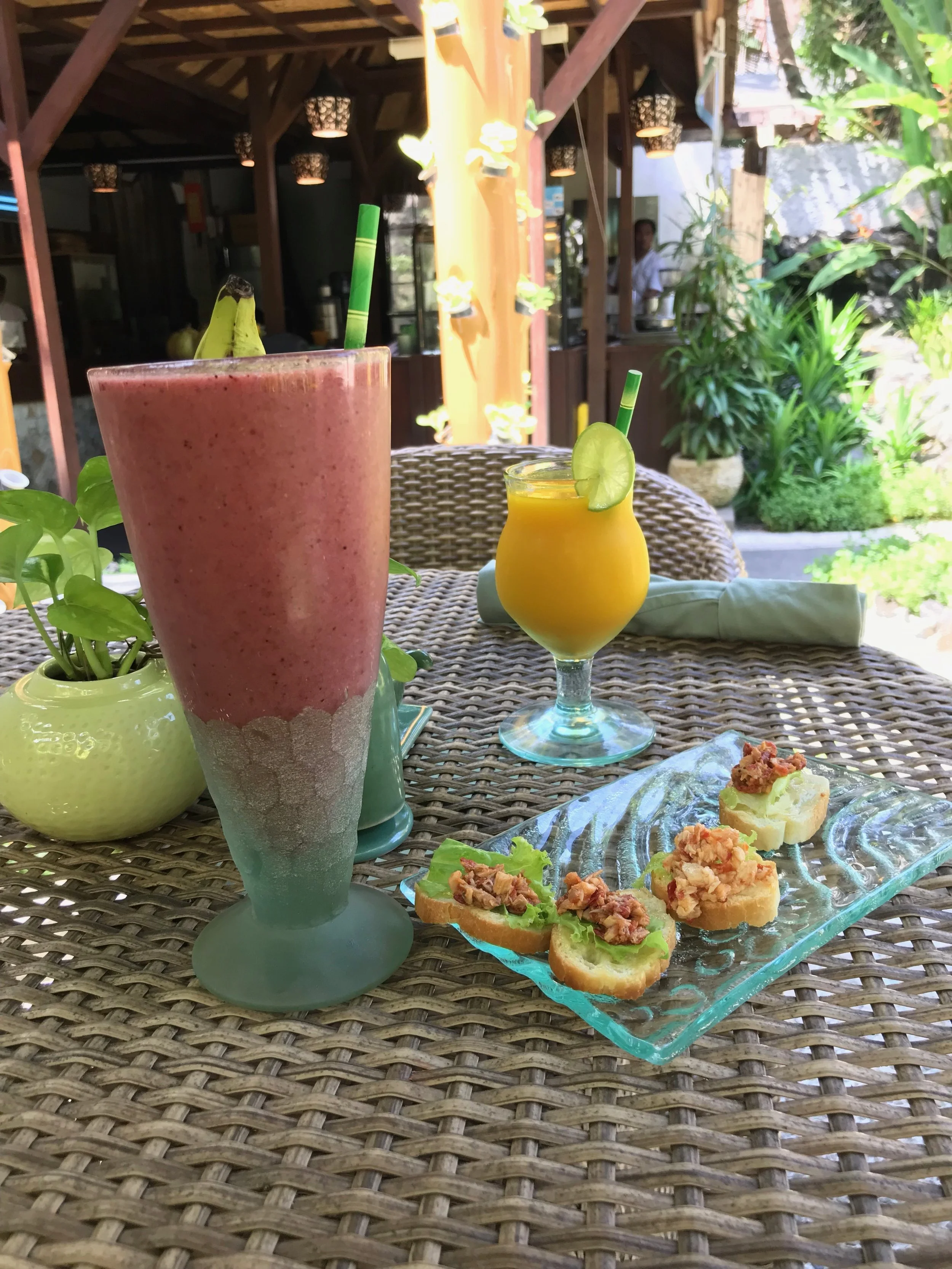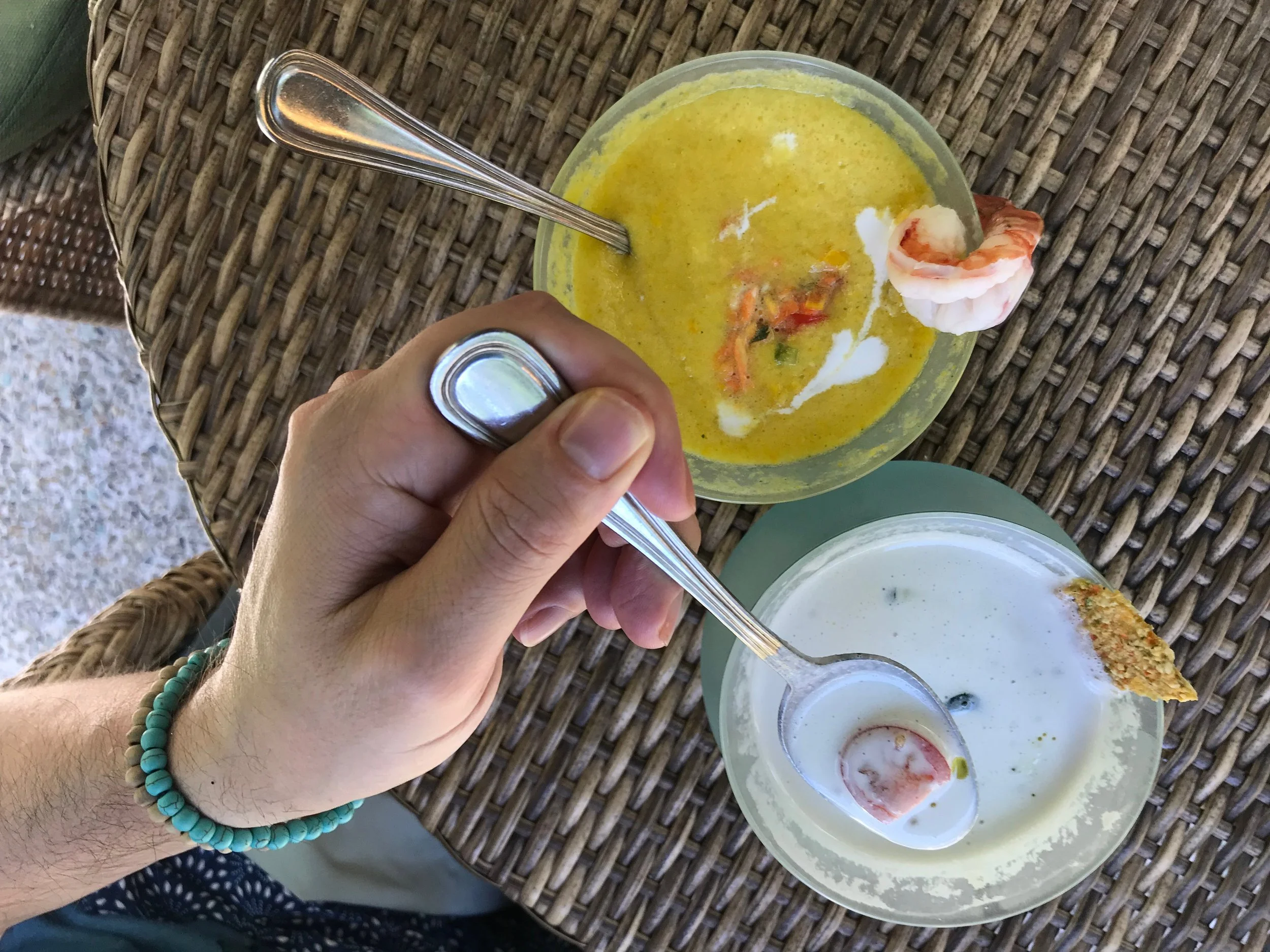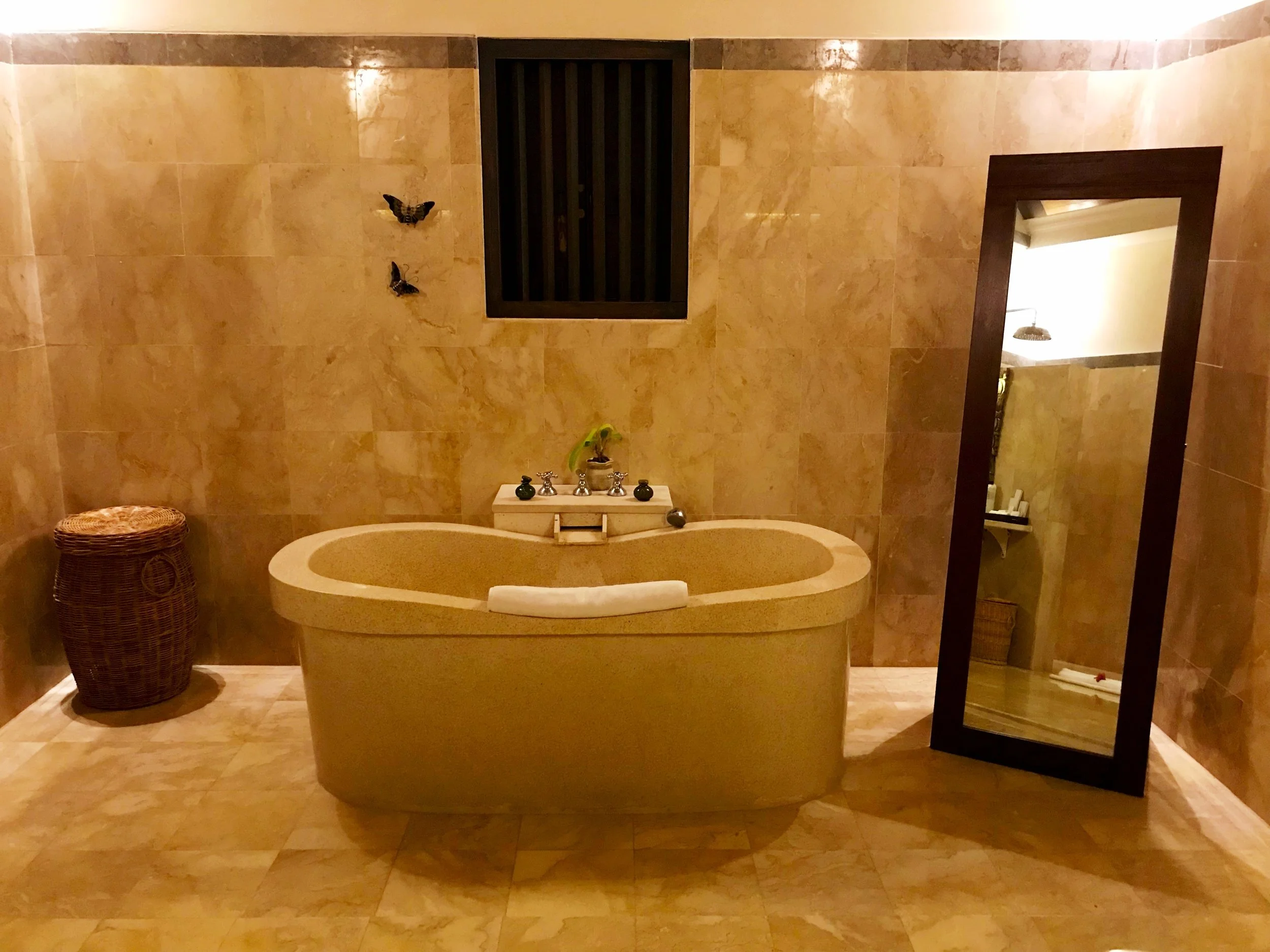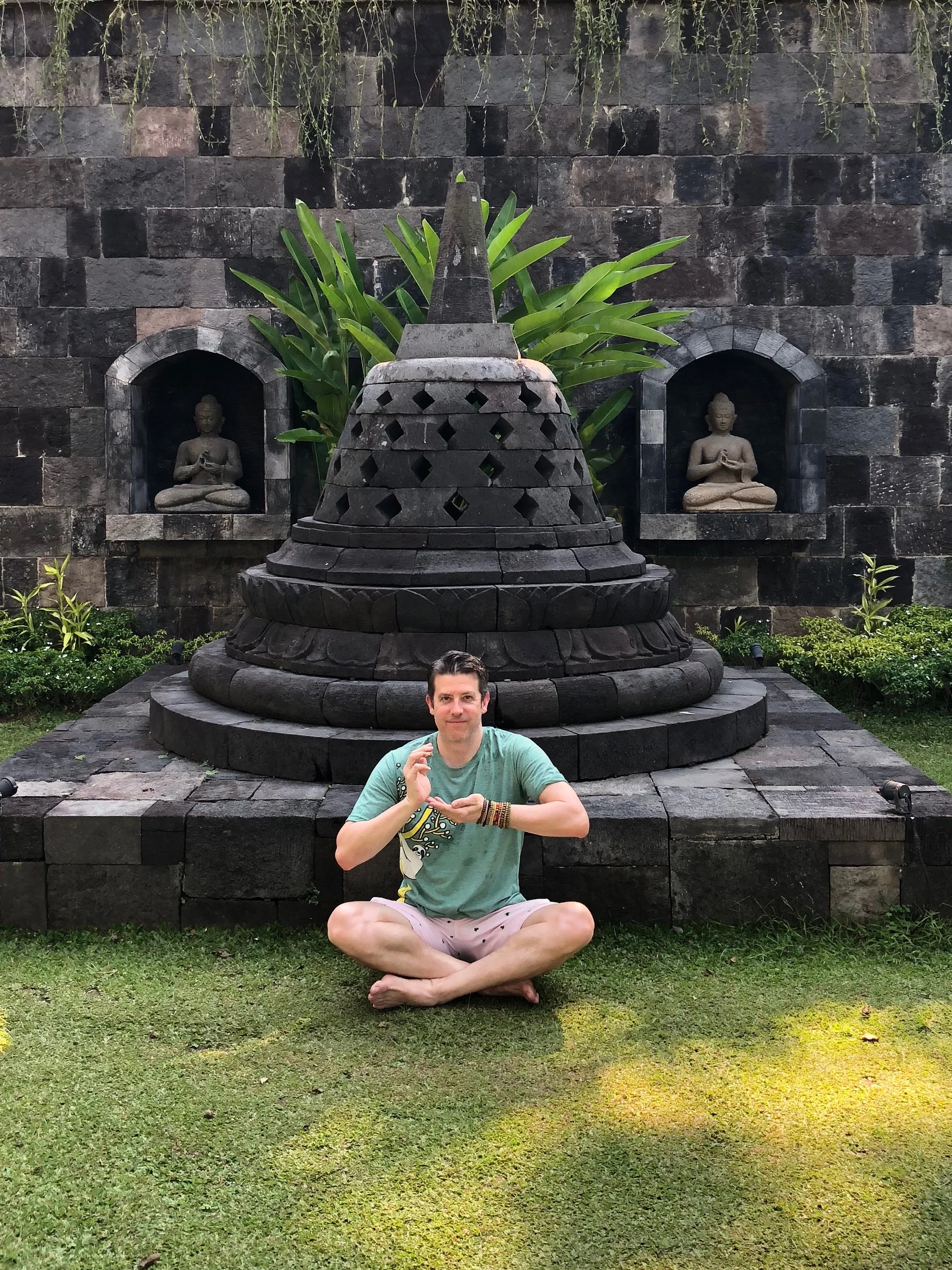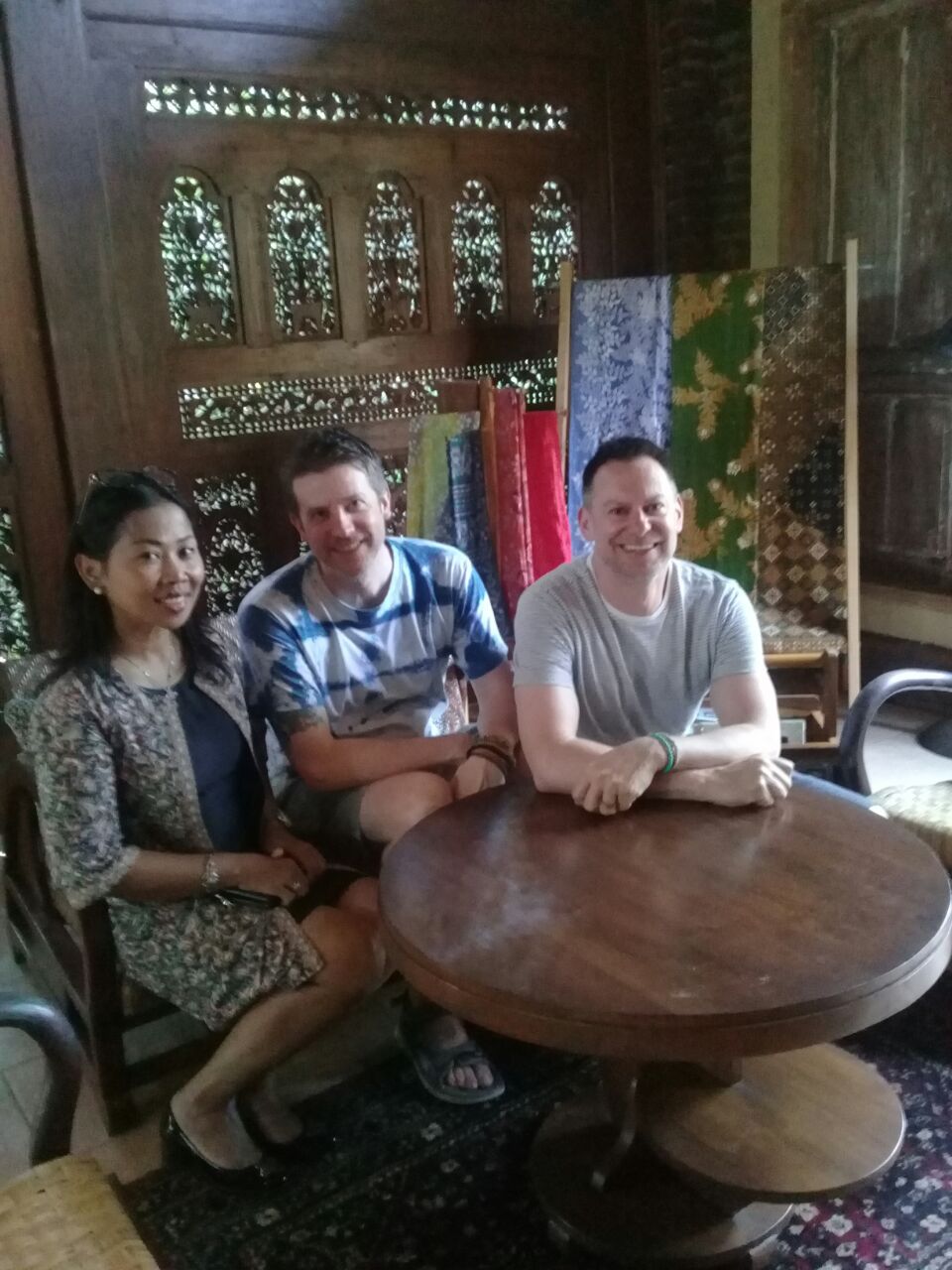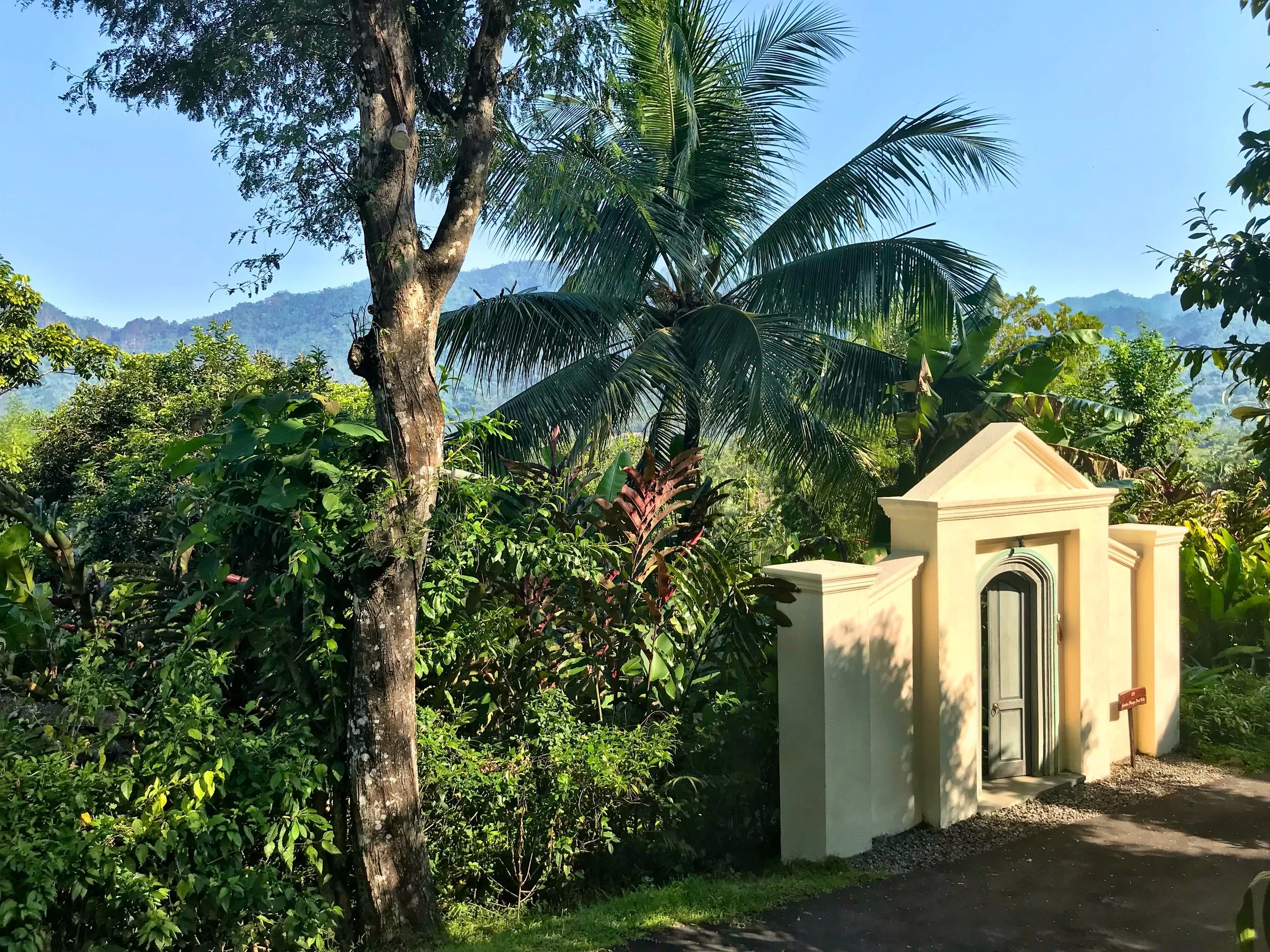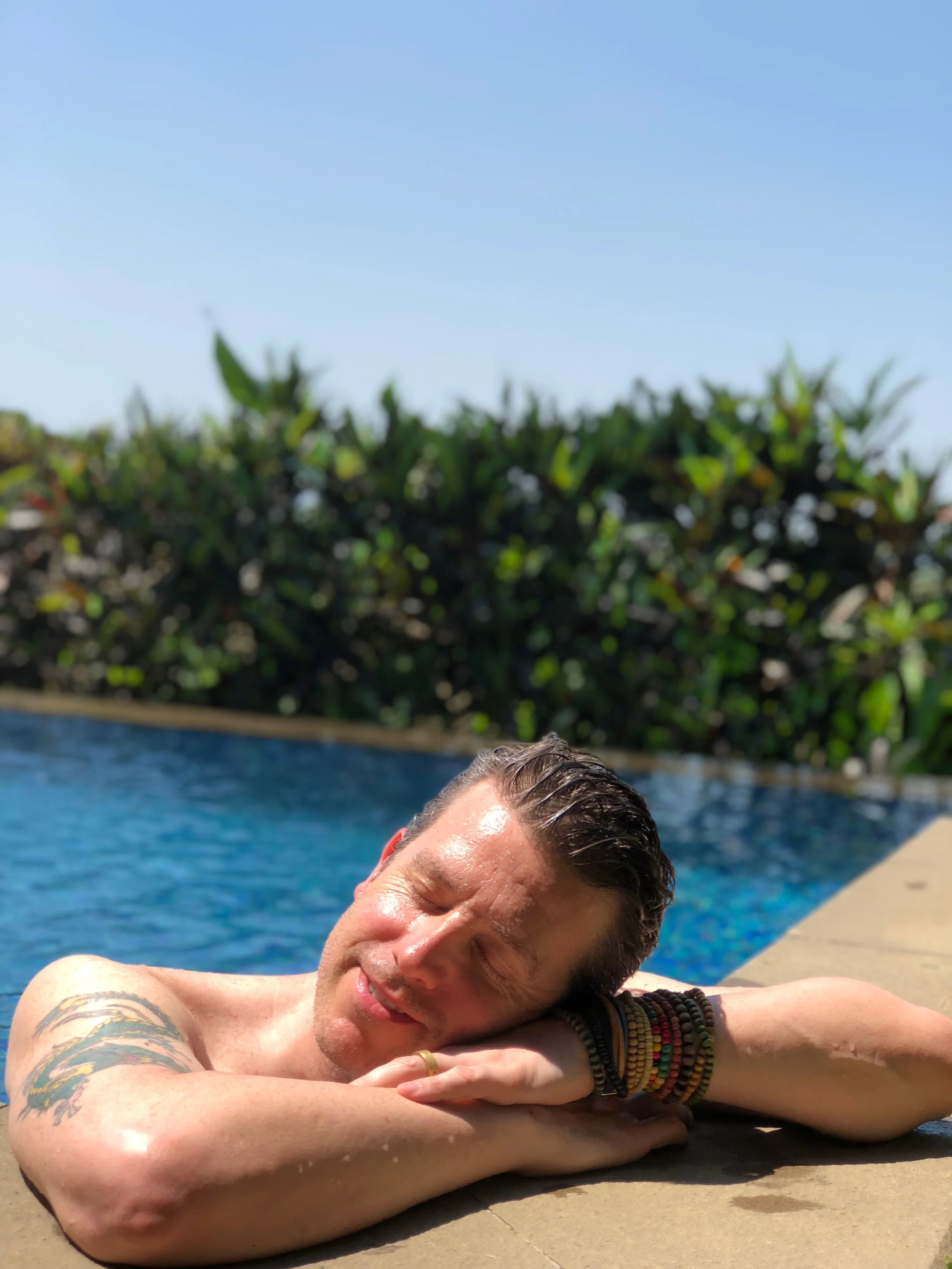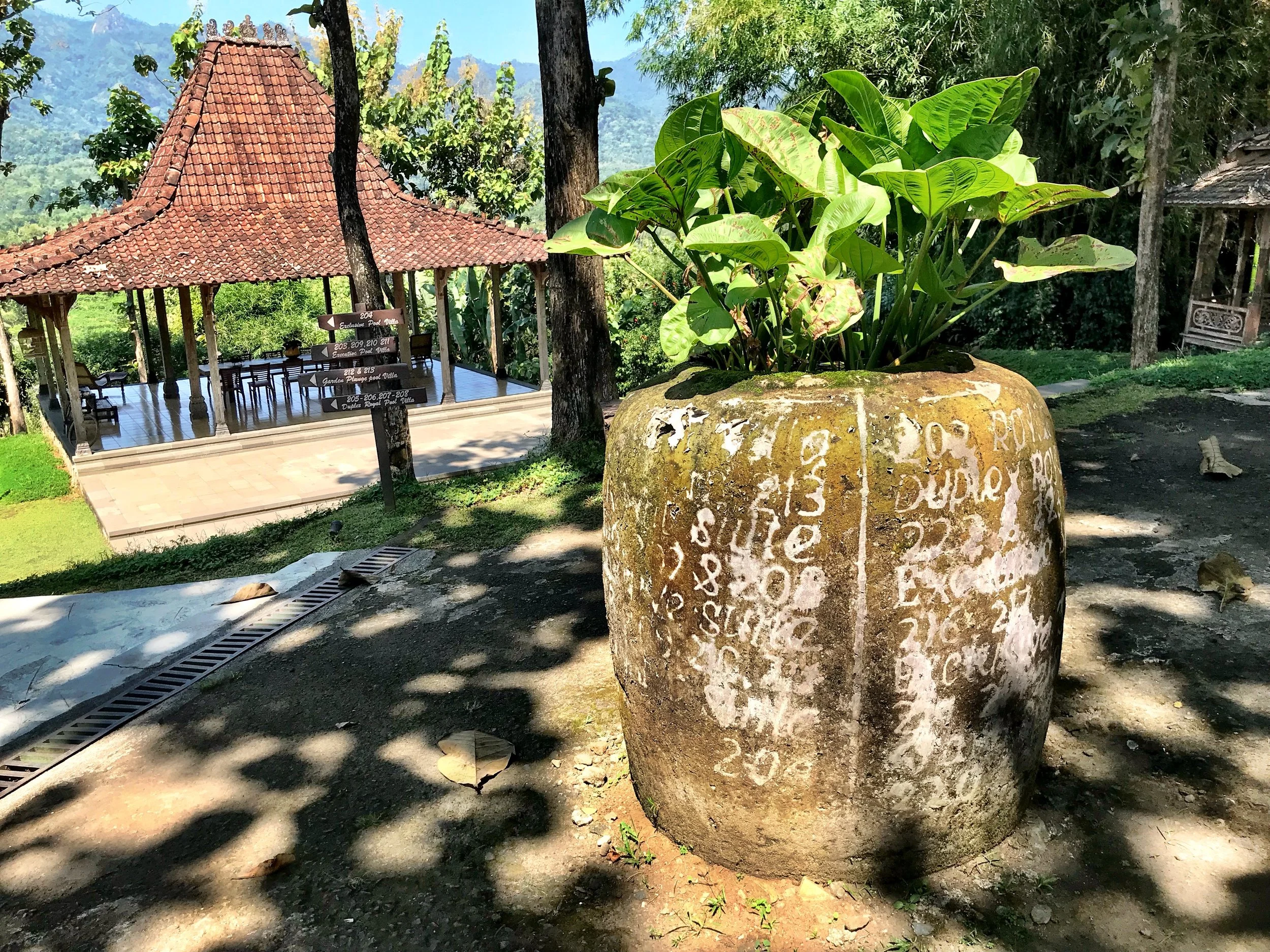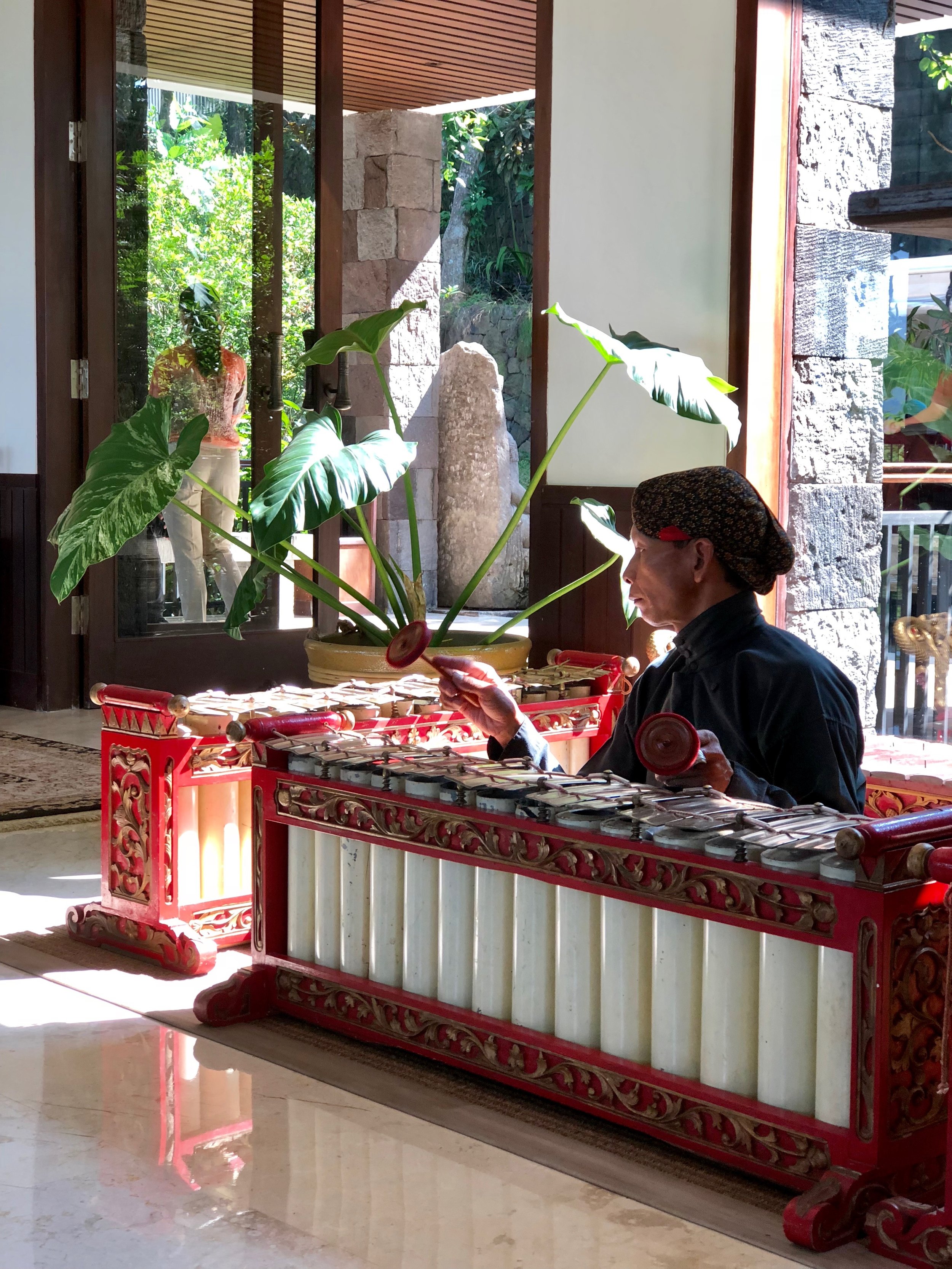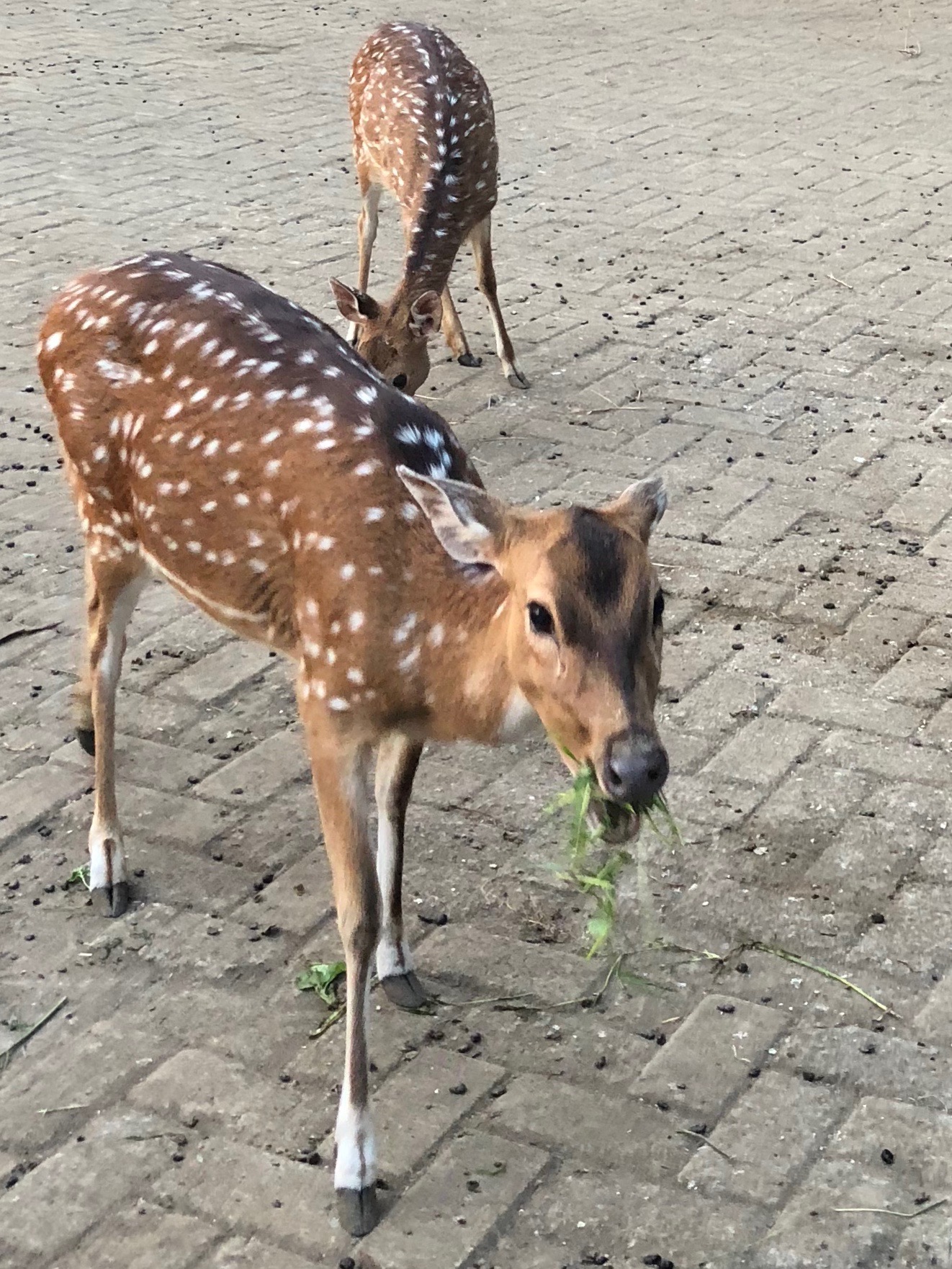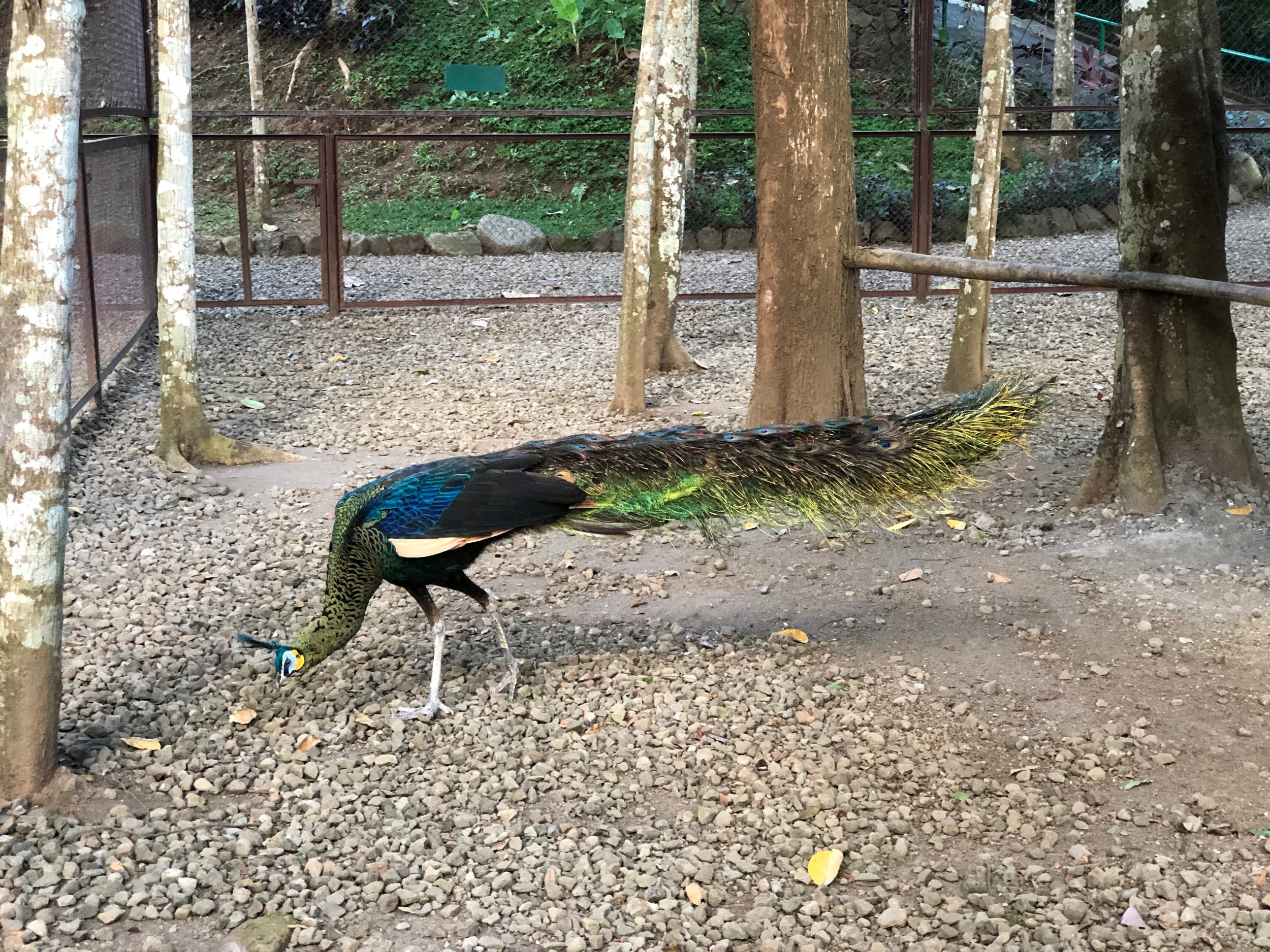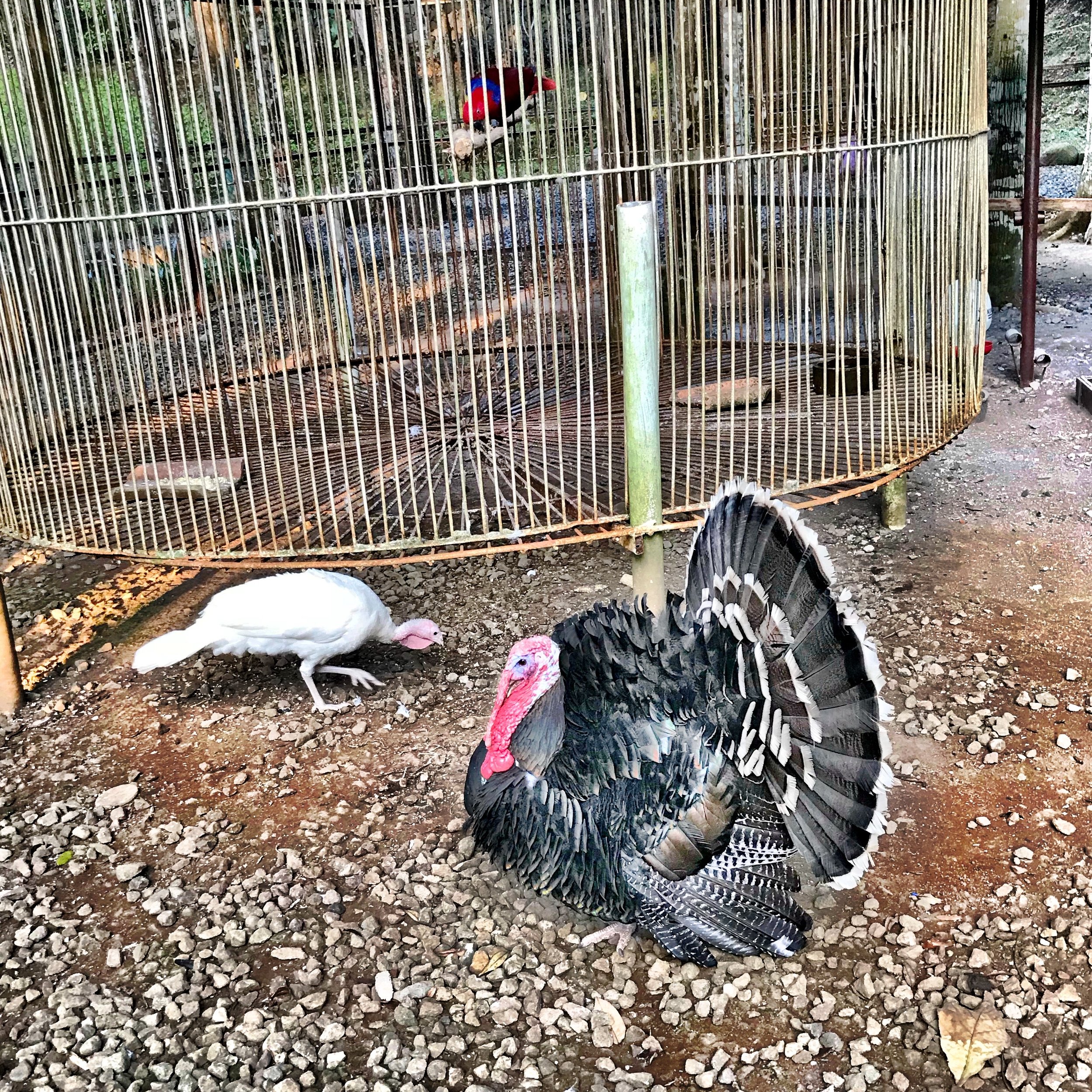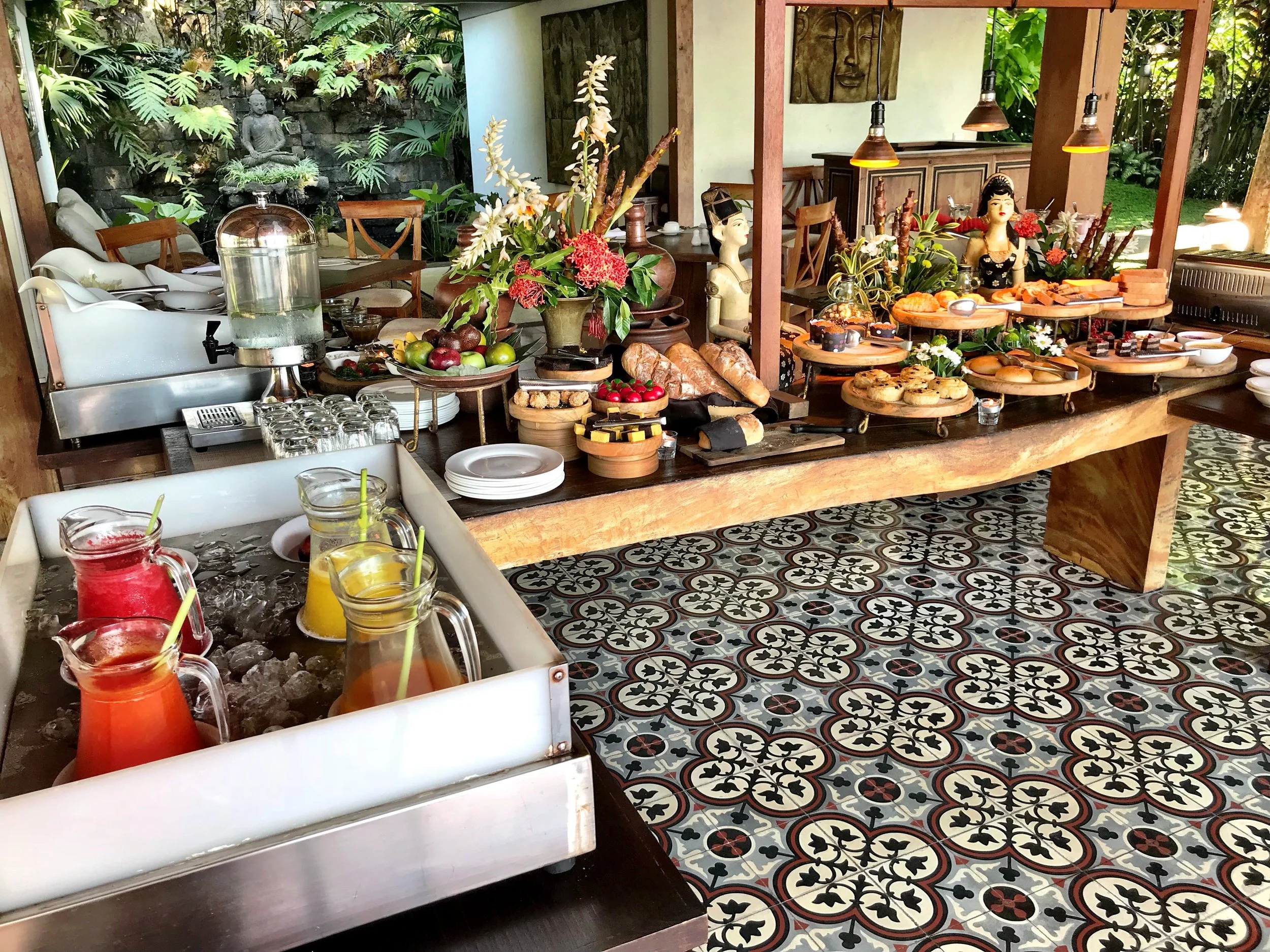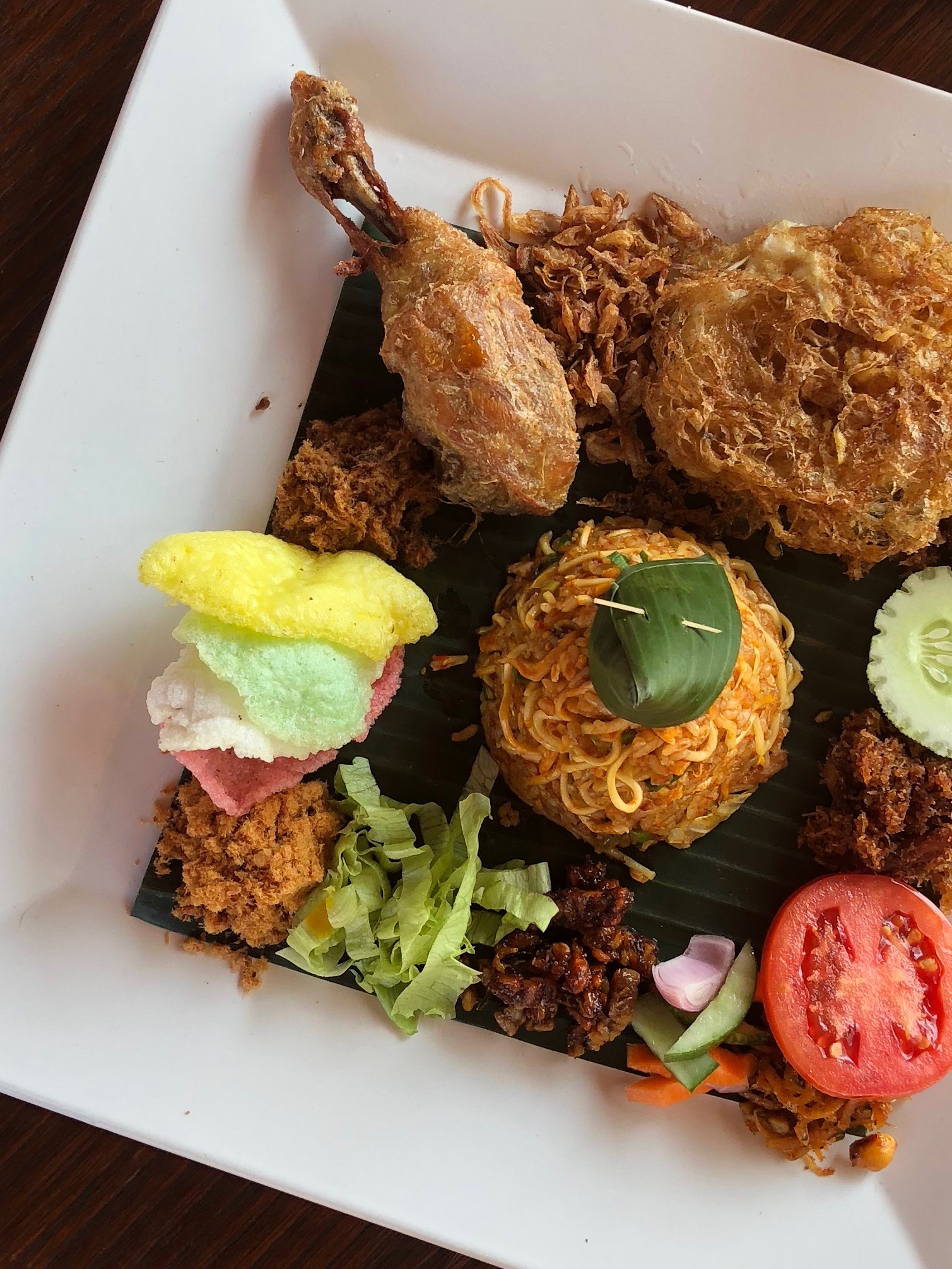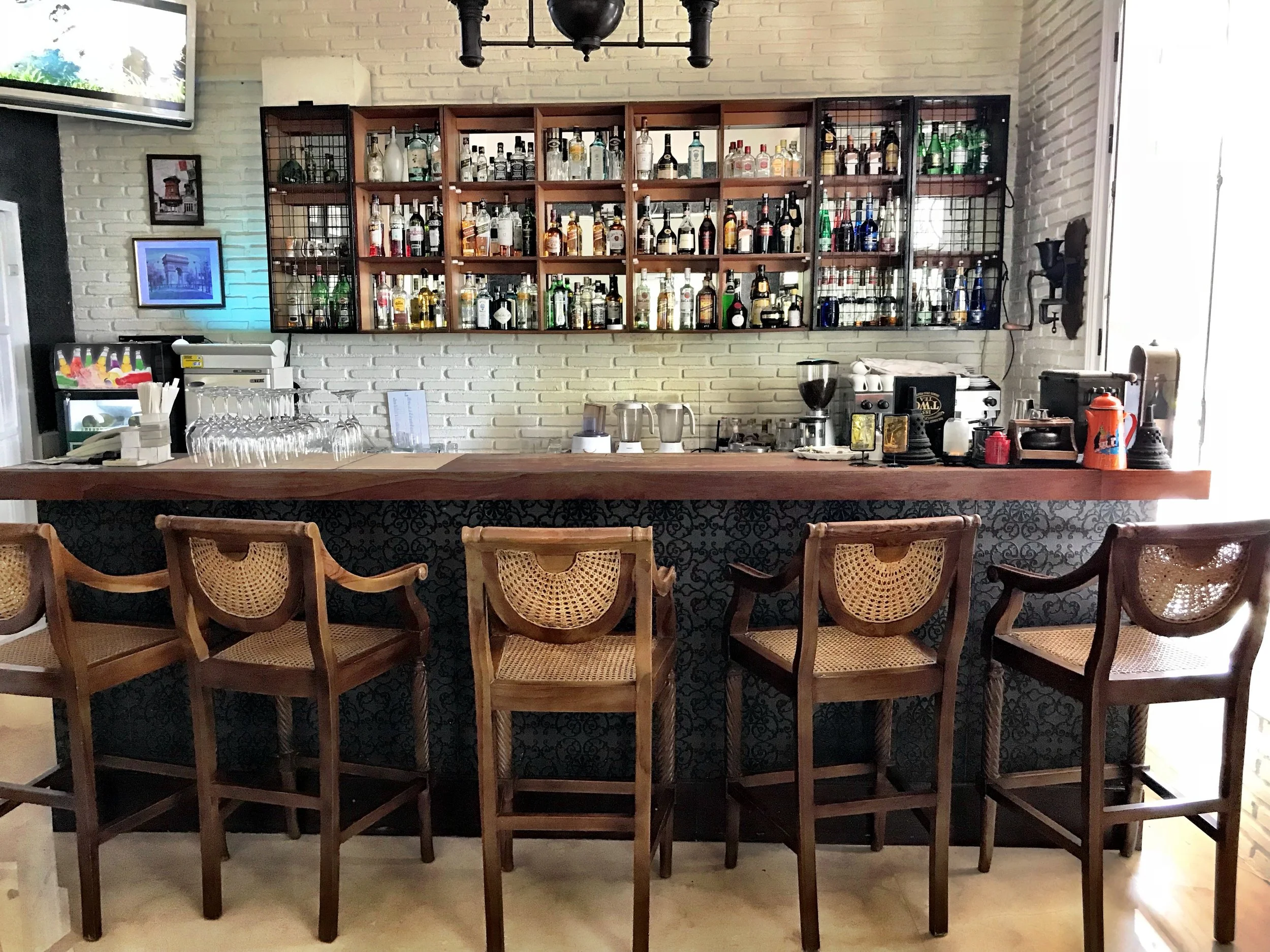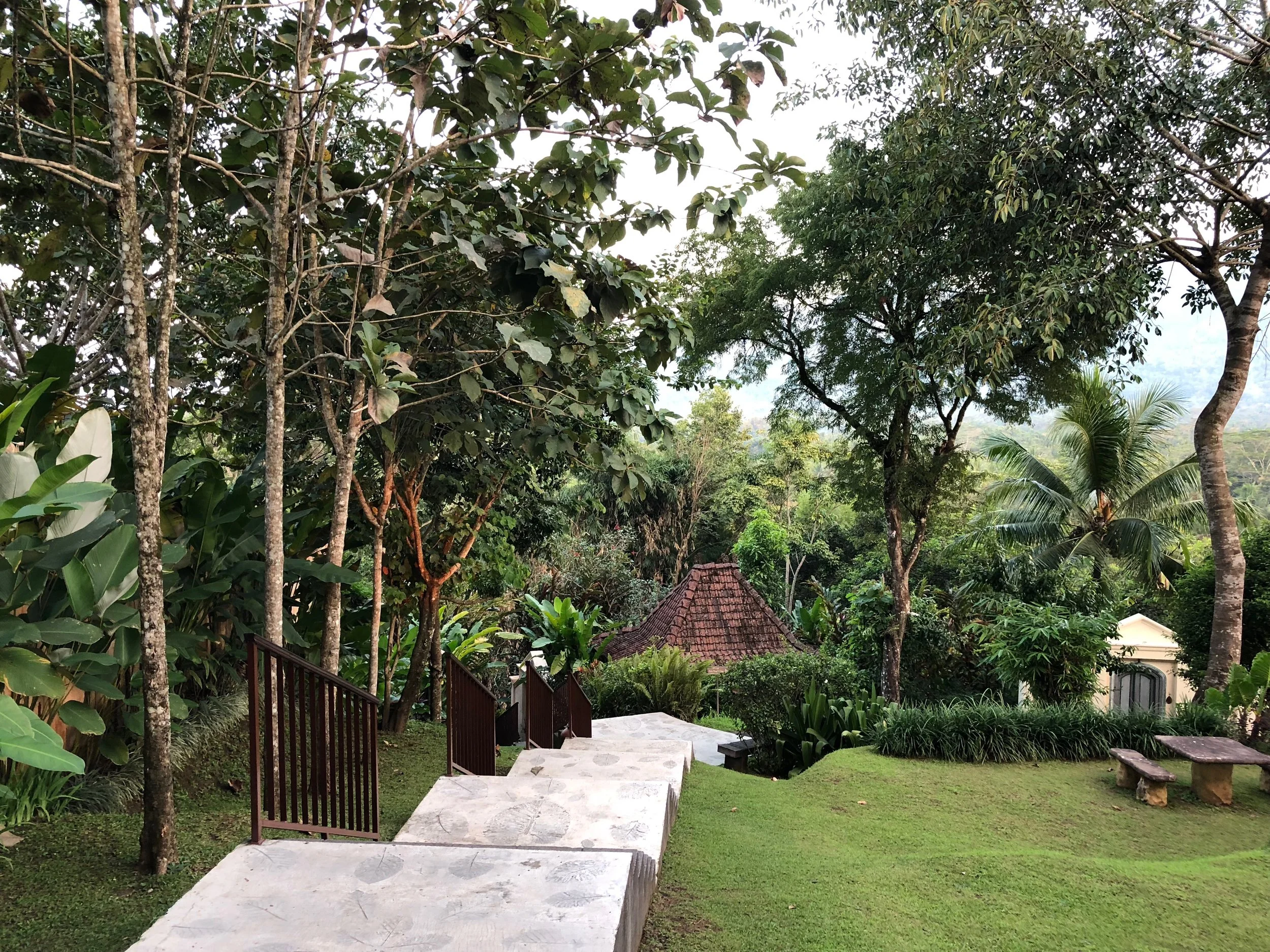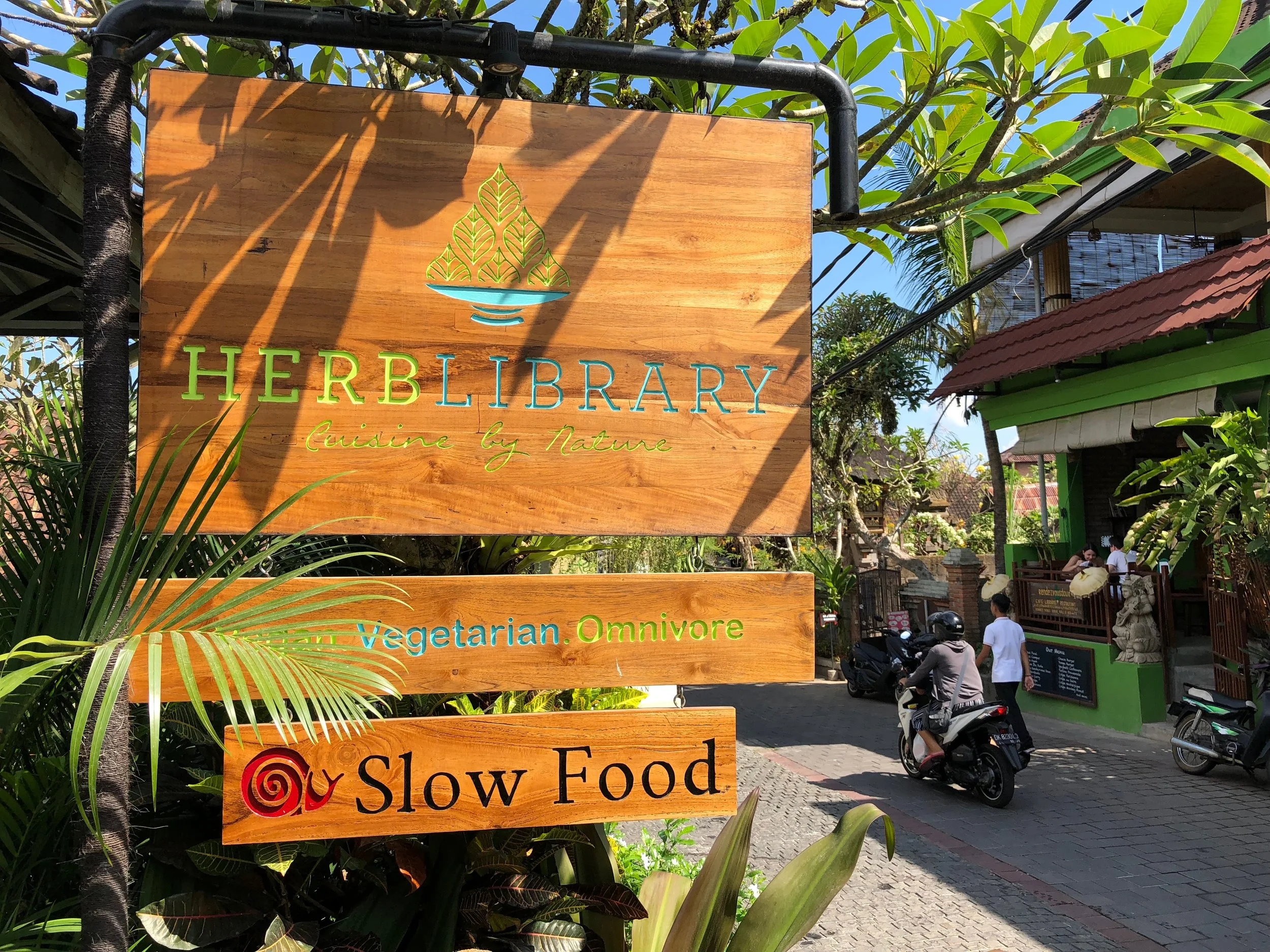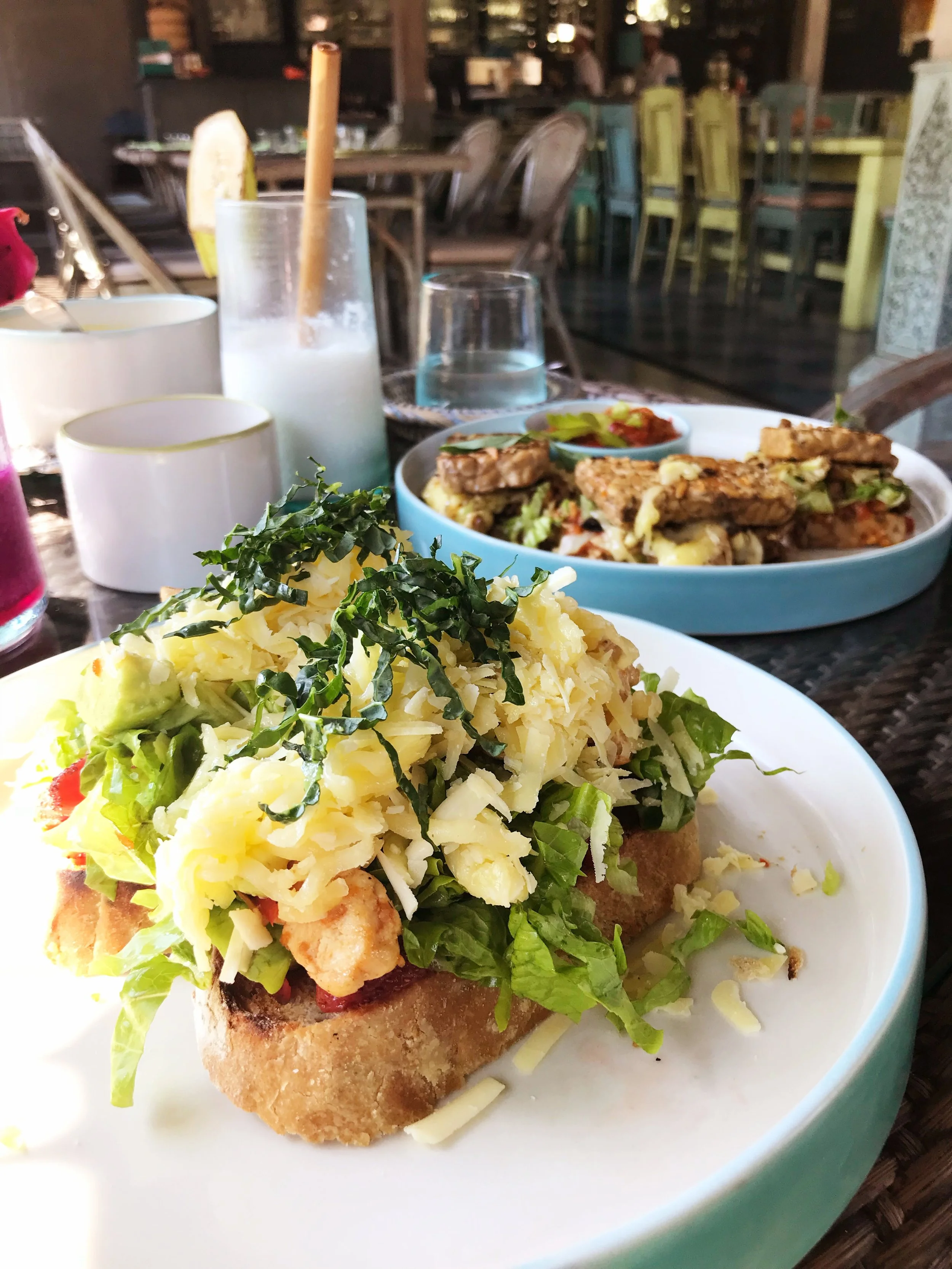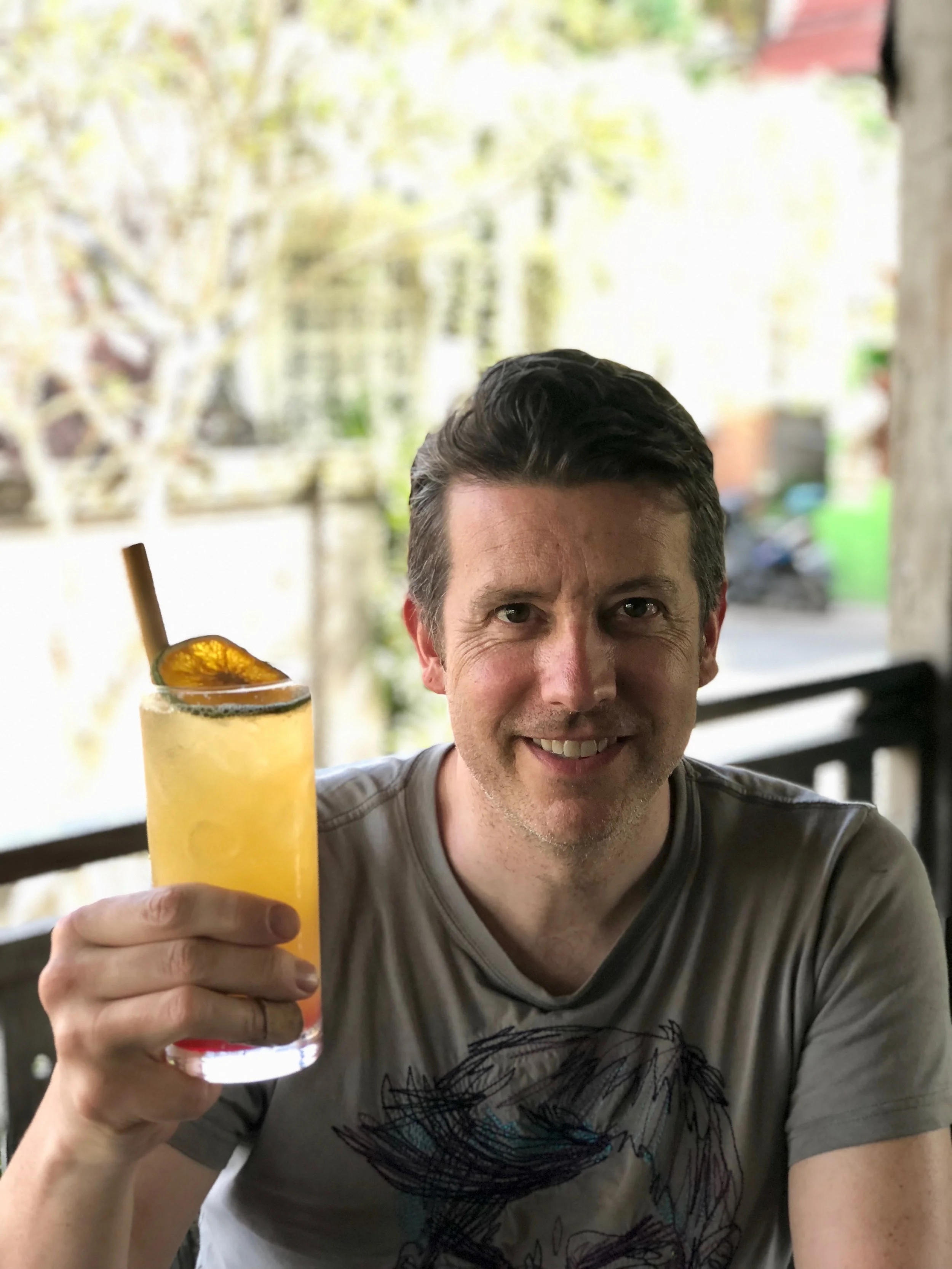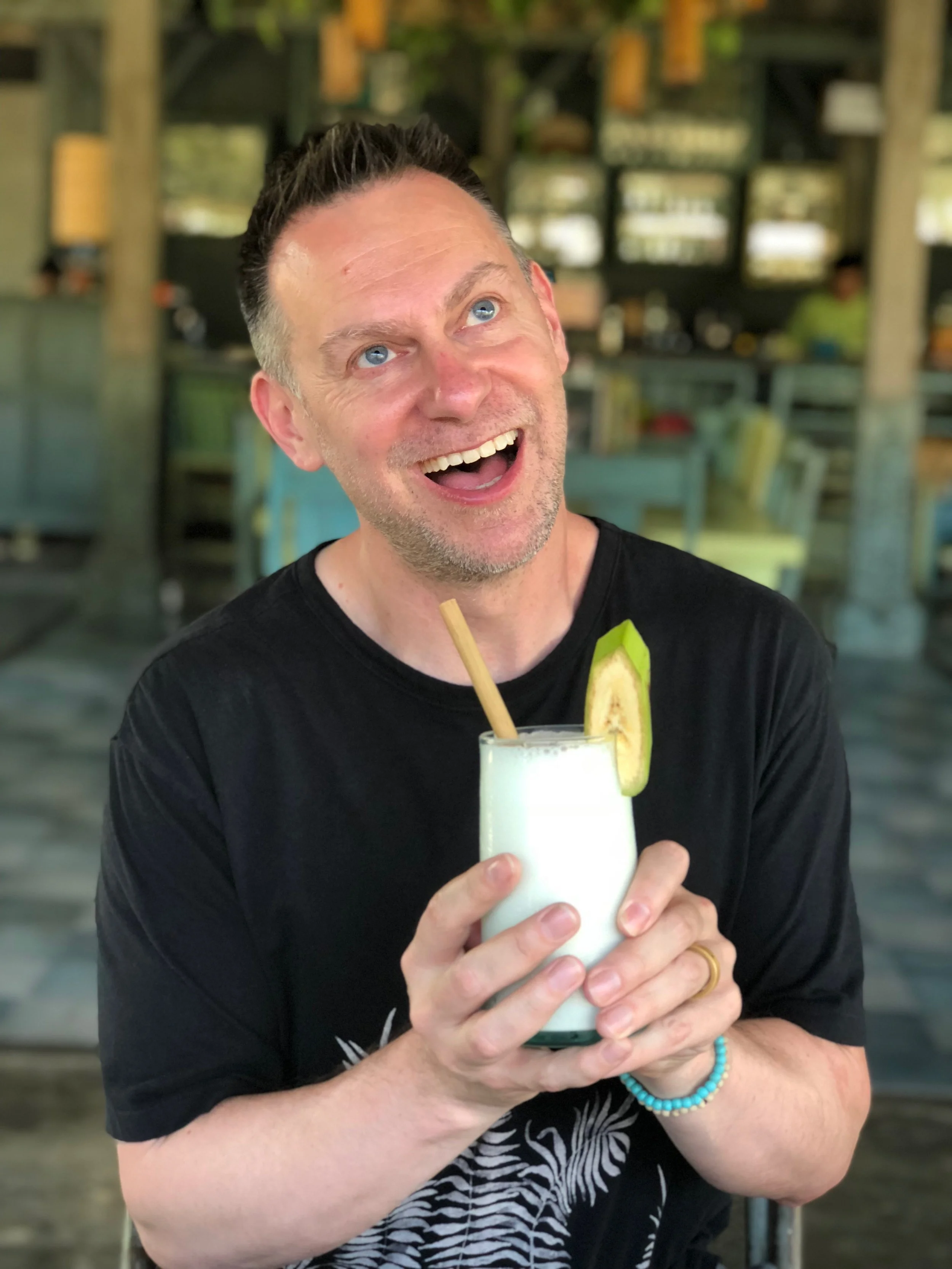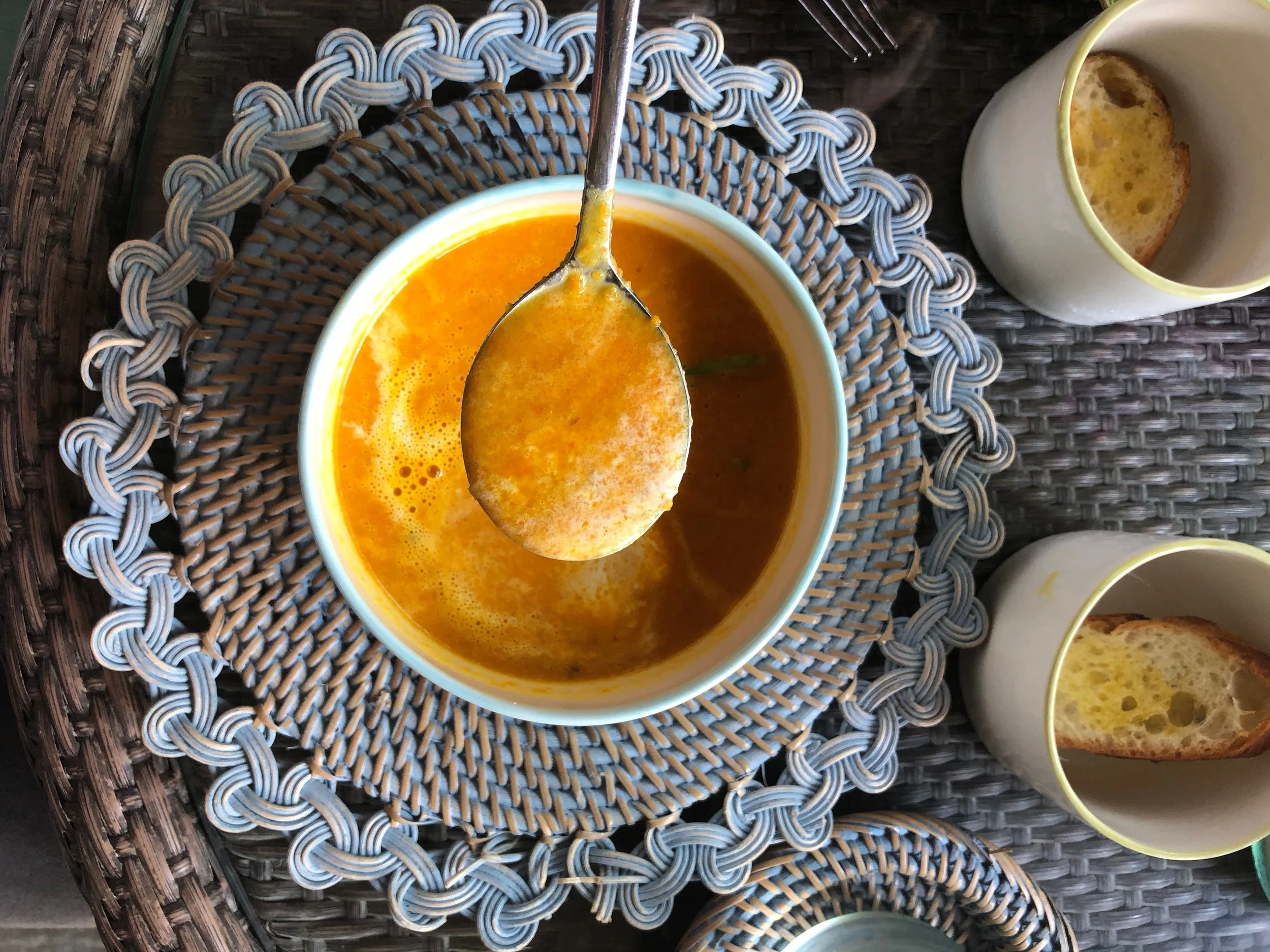The Monkey Forest is worth wandering, but perhaps not with children. It’s fitting that the Great Temple of Death lies within this sanctuary, where people get bitten by monkeys every day.
Gorgeous stonework and mischievous macaques abound in the Monkey Forest
Things might have been much worse if we hadn’t had a somewhat scary encounter the night before we planned to visit the Monkey Sanctuary in Ubud, Bali, Indonesia.
We were wandering down Monkey Forest Road, right at the turn, near one of the entrances to the forest. A large macaque monkey scampered down a power line and stopped a few feet in front of Duke.
He was looking up at another monkey on the roof of a shop and I snapped a photo. And then, in a flash, the monkey jumped onto Duke, grabbed his water bottle, hopped off of him and scurried down the road a bit. It all happened so quickly, Duke didn’t even have time to react.
“The monkey opened its mouth and sank its teeth into the girl’s shoulder, before darting away.
The girl screamed and screamed, yet her banshee-like wails failed to draw the attention of any staffers.”
The moment right before the monkey jumped onto Duke and stole his water bottle
We watched in astonishment as the monkey unscrewed the lid, poured some water out onto the street and scooped it up with its palms to drink.
As cool as it might be to get a selfie with a monkey, we can’t advise it
The last time I visited Bali, 17 years ago, I let a monkey crawl onto my back, and that picture became a now-legendary Christmas card. I might have done so again — but this incident was enough to put the fear of God — or perhaps the fear of Hanuman, the Hindu monkey god — into me.
The statue by the Monkey Forest entrance hints at what could happen to unsuspecting tourists!
Entering the Monkey Forest: It All Starts Innocently Enough…
So it was with a newfound sense of caution (and, let’s face it, downright fear of these creatures) that Duke and I wandered into the Monkey Sanctuary. The setting is epic: a glen of primordial trees, bridges that criss-cross a ravine with a river below and not one, but two pura dalems, or temples of death.
The setting, with banyan roots, bizarre statues, lush foliage and wild monkeys, is quite epic
We headed to the right, down a path that leads to one of the bridges that span the chasm below. There are a few landings here, with metal railings where monkeys like to hang out. This is a good spot for photos. The monkeys here seemed to know they’re models, and you can snap some shots at a safe distance.
Down the path to the right is a landing where monkeys strike a pose
Hindus, like those on Bali, revere monkeys, in part because one of their main gods, Hanuman, is simian
According to the park, there are about 600 monkeys in the area!
A path winds along the rock face at the edge of the river. It’s narrow and crowded and ends abruptly without a payoff. You might as well skip it.
Banyan roots have taken over parts of the sanctuary
Wally, who was scared the entire time he was in the forest, thought these were real lizards at first
Following the main path takes you over another bridge and walkway above the ravine before leading you to a temple. Duke and I were delighted to notice the strange, monstrous statues out front. We had arrived at Pura Dalem Agung Pandangtegal, or the Padangtegal Great Temple of Death. Demonic sculptures, including those of the witch Rangda, adorn pura dalems.
The main temple of death in the forest is dedicated to the Hindu god Shiva
Rangda personifies evil — and loves to eat babies
What are these naughty babies doing?!
Statues of demons surround the temple of death
A young macaque with a mohawk posed on a ledge near the temple’s entrance, nibbling on what appeared to be a yam. While we were taking some pictures, a big lug came up beside us and smiled. “Cute,” he said, before telling us that he had just been bitten on the arm by one of these critters. He was just standing there, and a young monkey jumped onto his shoulder, supposedly unbidden. Before he knew it, she had sunk her teeth into his arm.
This little macaque was hanging out on the temple entrance
I could tell by his accent that he was French, but I still spoke English to him. “You need to go to the doctor!” I told him. He just laughed, and I said, “I’m serious! You could get rabies! You could die!” But he just kept chuckling like I was telling him the funniest bit of nonsense he’s ever heard, before wandering away.
There supposedly haven’t been any cases of rabies from monkeys in the sanctuary, but I don’t think it’s worth the risk — especially since my doctor told me that rabies is 100% fatal. If you get bitten at the forest, don’t take any chances and get rabies shots at the Toya Medika Clinic down the street.
They might look innocent — but they’re not
Reality Bites: It’s All Fun and Games Until Someone Gets Bit
Not long after the French guy told us about how he been bitten, we saw a family allow a small monkey to crawl onto their young daughter for a photo op. It was like a train wreck — we couldn’t look away. When the girl wanted the monkey to get off of her, she tried to shake it off. Sure enough, the monkey opened its mouth and sank its teeth into the girl’s shoulder, before darting away.
The girl screamed and screamed, yet her banshee-like wails failed to draw the attention of any staffers.
We also saw a monkey grab a stack of cards from a woman’s open bag. The man with her literally pounced at the monkey and tried to retrieve the cards from it. We shook our heads in disbelief. It seemed wiser to let the monkey grow bored with its prize and drop it, once it realized it wasn’t edible.
Statues in the Monkey Forest tend to be grotesque — which Duke and Wally love
It’s no exaggeration when I say that I was in a mild state of terror the entire time I was at the sanctuary. Any time we passed by a monkey, I’d freeze up and scooch past it as quickly as possible, my heart pounding through my chest.
Down from the temple is a bathing pool, and it was fun to watch the monkeys swing into the water and splash about — from a safe distance, of course.
Delightfully horrific statues pair nicely with the monkeys
Beyond this is a ring trail that’s more sparse. The trees aren’t as tall and I felt more exposed. We hurried along the path, horrified, when, at one point, we saw a monkey that had stolen a bottle of sunblock from some tourists. It unscrewed the top and was trying to drink the thick white liquid. The couple watching this were laughing, but we didn’t find it amusing.
At the end of the ring path, we saw a small building with a group of the sanctuary’s staff just hanging out smoking. We couldn’t help but think they should be in the more populated areas, stopping people from doing stupid things and attending to the kids who have been bitten.
You can skirt around the exterior of the pura dalem and admire the bas reliefs
Frieze frame
We circled back to the Great Temple of Death, bummed that tourists aren’t allowed to enter the temple grounds. We skirted around the exterior, though, peeking over the wall to see the courtyard within.
The Great Temple of Death inside the Monkey Forest isn’t open to tourists
Another trail leads away from the temple, and we followed this down to another area of the nature preserve.
En route, we passed a woman squatting down to allow a monkey to climb onto her lap. When it started tugging at her braid, we had to go. We weren’t in the mood to see yet another person get bitten.
When you’re ready for the monkey to get off you, it might not be — and if you force it to move, you’ll probably end up getting bitten
We ended up walking through a creepy tunnel lit by an eerie purple and green light. I kept praying we wouldn’t encounter any primates in that dark expanse, and thankfully, we did not.
The entrances to the tunnel by the parking lot sport giant faces
The tunnel led to a parking lot, so we had to double back and head through it again. We followed a sign that pointed to a cremation temple and found ourselves at another end of the sanctuary, wary of a pack of monkeys nearby but eager to explore the small pura dalem. We couldn’t enter this temple of death, either, but admired the demonic statuary, while keeping an eye out for roving macaques.
The cemetery near the smaller temple of death is where bodies remain before a mass cremation, which takes place every five years
At this point, we figured we had seen everything we could and decided to leave the Monkey Forest the same way we had come. We were on the home stretch, the exit about 100 yards away, when a particularly brazen monkey made a jump for Duke’s tote bag. He turned away, clutching it tightly to his body. The monkey made some rude noises and gestures to show its displeasure. But we were safe at last, having emerged from this ordeal with a healthy fear of monkeys. –Wally
Monkey see, monkey do
Sacred Monkey Forest Sanctuary
Jalan Monkey Forest
Ubud, Kabupaten
Gianyar
Bali 80571, Indonesia
“I was in a mild state of terror the entire time I was at the sanctuary. ”


